

WATER SEWER ELECTRICITY GAS Engineering, Construction & Maintenance www.utilitymagazine.com.au Issue #29, February 2021
INTELLIGENT ASSETS: HOW AI CAN REVOLUTIONISE HOME ENERGY YARRA VALLEY WATER’S AWARD-WINNING APPROACH TO CUSTOMER EXPERIENCE CYBER AUTONOMY: THE ULTIMATE SECURITY DEFENCE
Envirosonic is a proven and powerful ultrasound system to control cyanobacteria in ponds, lakes and reservoirs without the use of chemicals

EnviroSonic facts
EnviroSonic technical
» Shear stress
» We control non-motile algae, which include all blue green algae at a higher rate than the reproduction rate.
» Can be installed in remote areas on solar pontoons, or with a small float near a mains power outlet.
» GSM is available.
» Envirosonic will save you money.
» Eliminates the use of toxic chemicals.
» Ultrasound is safe for all invertebrates, fish, animals, and plants.
- The powerful ultrasound waves between 15 and 50 kHz radiating out in a semicircle from the transducer at great speed subject the algae to extreme stress, causing the algal cells to collapse.
- The Envirosonic ES300 controls a semicircle area of 300 metres , with two units on a solar powered pontoon giving a 600 metre circle of control.
- The smaller ES50 unit mains powered controls an area of 50 metres semicircle, and is ideal for smaller pondages and fish stocked lakes
» Pulsed ultrasound
- Algae cell boundary layers become saturated with dissolved gases.
- Bubbles within the algae cells created by ultrasonic pressure collapse.
- Localised cellular cavitation from the ultrasound waves causes disruption of water molecules generating oxidising compounds... H2O2 and hydroxial radicals, which are short lived, but cause further disruption to algal cells.
About us
We are the sole distributor for EnviroSonic in Australia. EnviroSonic ultrasound has been successfully installed in horticulture, aquaculture, potable water and settlement ponds at locations including: Westernport Water, Tas Water, Tuki Trout Farm, Wauchhope Treatment Utility, Bendigo Council, Huon Salmon, Steggles Chickens, Murrumbidgee Irrigation, SEQ Water, Coliban Water and Golf Courses.
CONTACT: Peter Harries M: 0411 733 473
E: prharries@bigpond.com
www.envirosonic.com.au




FROM THE EDITOR
A new year is often synonymous with a fresh start, an opportunity to go confidently in the direction of new plans and ideas. After the chaos of 2020, this quote by Mehmet Murat ildan seemed rather apt: “Sometimes a year has been so disastrous and so terrible that entering a new year will automatically mean entering a wonderful year!”
I hope everyone enjoyed some welldeserved time off over the festive period and has returned rejuvenated and ready to tackle whatever 2021 brings. The utility industry has already shown remarkable resilience, getting stuck into a number of groundbreaking projects and initiatives and highlighting that 2020 wasn’t all doom and gloom.
Here at Utility, it was wonderful to finally be able to announce the winners of the 2020 Digital Utility Awards at a virtual awards ceremony on Thursday 22 October. We had hoped to recognise the achievements of our winners and finalists at an in-person awards night, but COVID-19 restrictions meant that a live event just wasn't possible. Head to page 20 to find out which entries were deemed the best in utility digitisation for 2020.
Also in October 2020, Yarra Valley Water won CX Team of the Year at the Ashton Media CX Awards. The water utility was recognised for its ‘outside-in’ approach to identifying opportunities across the customer journey and delivering innovative solutions to address customers’ needs. In this edition of Utility, you can read about the creation of Yarra Valley Water’s award-winning Customer Experience Practice and how it works to understand customer needs, pain-points and expectations.
At a time when entering a new market was particularly challenging, energy retailer Social Energy opened its doors to Australian customers in November 2020. Social Energy has been operating in the UK for several years, leveraging a unique technology proposition to offer customers massive bill reductions and home solar and battery systems.
Social Energy’s Artificial Intelligence platform learns about a customer’s energy usage and makes informed decisions about how to store, manage and distribute their solar energy. Technology and digital transformation are key themes for this edition of Utility, with the COVID-19 pandemic forcing the adoption of digital ways of working and accelerating utility digital transformation strategies and priorities.
With levels of remote working likely to remain higher than they were pre-COVID, utilities may need to 'reset' some of their cyber security protocols and policies. Professor Ryan Ko, Director of Cyber Security at the University of Queensland, shares his thoughts on how utilities can effectively prevent and mitigate cyber attacks.
On the topic of digital transformation, Utility’s flagship event, Digital Utilities, returns in 2021 as a landmark virtual event for the Australian utility sector, taking place between 16-24 March. This major summit consists of four Virtual Conferences over a two-week period, diving deep into some of the critical challenges and focus areas for the sector, and providing delegates with genuine learning opportunities from some of the best and brightest minds across Australia (and the world!).
The virtual component of the event is free to attend for utilities, government and not-forprofits, and for those who want to get extra value from meeting up with peers in the real world, there will also be a live networking function to make connections and build new relationships. For more information and to register, visit www.digitalutilities.com.au
Thank you for your continued support of Utility and if you’re interested in getting involved as a magazine contributor, or as a speaker at one of our events, please don’t hesitate to get in touch with me at charlotte.pordage@monkeymedia.com.au
UTILITY • FEBRUARY 2021 Published by Cover image highlights this edition's focus on digital technologies. UTILITY MAGAZINE FEBRUARY 2021 INTELLIGENT ASSETS: HOW AI CAN REVOLUTIONISE HOME ENERGY YARRA VALLEY WATER’S AWARD-WINNING APPROACH TO CUSTOMER EXPERIENCE CYBER AUTONOMY: THE ULTIMATE SECURITY DEFENCE WATER SEWER ELECTRICITY GAS Engineering, Construction & Maintenance www.utilitymagazine.com.au Issue #29, February 2021 PROGRAMMED FACILITY MANAGEMENT FPA Editor Charlotte Pordage Journalists Eliza Booth Imogen Hartmann Design Manager Alejandro Molano Designers Jacqueline Buckmaster Danielle Harris Business Development Managers Rima Munafo Brett Thompson Marketing Associate Radhika Sud Marketing Assistant Stephanie Di Paola Publisher Chris Bland Managing Editor Laura Harvey Monkey Media Enterprises ABN: 36 426 734 954 204/23–25 Gipps St Collingwood VIC
(03)
monkeymedia.com.au
utilitymagazine.com.au info@utilitymagazine.com.au ISSN:
welcome February 2021
3066 P:
9988 4950
info@monkeymedia.com.au
2203-2797
Editor ISSUE 29 1
Charlotte Pordage






2
An evolving ecosystem: Yarra Valley Water’s award-winning Customer Experience Practice 36 Buy once, buy right with Vega ... 38 Combining utility heritage and future-focused solutions 40 Building strong relationships through data and consumer intelligence 46 SYDNEY WATER Green infrastructure to cool Western Sydney .......................... 48 Open access to Bürkert water applications and resources 52 Winners of the 2020 Digital Utility Awards announced .......... 20 Helping utilities position their digital strategy for the new reality ................................... 22 As people realise they don’t always need to travel, and can reach people they don’t normally get to, virtual events are set to become a permanent part of the mix, even as travel restrictions lift. While there are plenty of people who are keen to get face to face as soon as possible, the reality is that with ongoing uncertainty, the utility sector needs to find better ways to connect online. With this in mind, Digital Utilities 2021 will be run primarily as an online event, ensuring it is accessible to as many people in the industry as possible. SUEZ’s ON’Connect™ intelligent water meter solution to boost Goulburn Valley Water ................ 24 How AI optimises wastewater treatment................. 26 Integrating data across water assets to enhance customer centricity 28 CYBER SECURITY Cyber security in the age of Industry 4.0 30 Remote unauthorised access not a threat when utilising a one-way network to monitor water assets ................................ 34 DISTRIBUTED GENERATION Creating a more resilient grid: virtual power plants explained.......................... 82 Empowering DER through dynamic operating envelopes ................... 86 EMBEDDED NETWORKS Piping Specialty Supply Services announced as Specialty Polymer Coatings Australian dealer ......... 88 A better deal for embedded network customers 90 MAPPING, GIS & SURVEYING Fixed and portable internet for remote utility operations 92 Cutting-edge cartography: digital mapping for improved vegetation management 94 RIDGID diagnostics, line inspection and location 98 88 92 82 36 24 20 UTILITY • FEBRUARY 2021 WWW.UTILITYMAGAZINE.COM.AU CUSTOMER EXPERIENCE DIGITAL UTILITIES BIG DATA
CONTENTS



February 2021 ISSUE 29 3
The sky’s the limit: improving asset management with drones 100 Technology has become a major part of our modern world, helping to make life easier and safer for many – and utilities are no different. For Gippsland Water, the implementation of advanced technology into its operations has been a no-brainer, with the water utility embracing the use of drone technology over the past few years to help improve the way its team carries out essential tasks, like inspecting sites with limited access. 68 54 In each issue Welcome from the Editor .................................................... 1 A word from Energy Networks Australia ......................... 4 A word from WSAA ..............................................................6 News briefs ...........................................................................8 Advertisers’ index ........................................................... 104 Editorial schedule ........................................................... 104 Metasphere launches revolutionary wastewater level monitoring solution 54 FLUSHER II allows hands-off sewer maintenance .................... 55 The future of drilling – Grundodrill First Edition ................................. 56 Murray Bridge wastewater pump station site becomes community and cultural space....................... 58 Building pipes with less impact .. 60 Rehabilitating Melbourne Water’s Hawthorn Main Sewer using Alternative Lining Technologies’ CIPM™ solution .......................... 62 Sewer rehabilitation for a longer service life .................... 64 McRobert Contracting Services completes sewer rehabilitation for Power and Water ................... 66 A balancing act: renewables and reduced grid inertia ............. 68 Social Energy: a new smart energy retailer enters the game ............. 70 Work smarter with Force Logic 76 SA Water deploys world’s largest moveable solar site .................... 78 How utilities can lead Australia to a hydrogen future ................... 80 102 100 UTILITY • FEBRUARY 2021 WWW.UTILITYMAGAZINE.COM.AU SEWER SOLAR
DRONES
As Australia emerges from COVID-19 we could be forgiven for craving more predictability.
However, change is still on the agenda and the growth of distributed energy resources (DER) is forcing the rapid transformation of a century-old electricity system.
In such a dynamic environment, forecasting an energy future, as the Smart Grid Roadmap does, is fraught with risk. However, the work has been supported by an international review of papers, reports, trials and subject matter experts, so we’re confident the predictions are close to the mark.
In developing the roadmap, Energy Networks Australia (ENA) considered the likely trajectory of DER and what capabilities might be expected and required with what we know now. This is organised into streams and linked to indicative milestones in four stages over the next 20-plus years.
• Data and visibility – to make the right decisions, distribution network service providers (DNSPs) need visibility to know what is happening on their network
• Operating envelopes – it is critical to understand the physical limits of the network assets
• Passive and active DER – active DER is needed for a stable grid and will be a crucial factor in any smart grid
• Pricing and access for customers – equity and fairness of integrating DER costs is a particular concern to customers and their advocates






• Networks and optimisation – a holistic view of how optimisation and integration of DER is achieved from where we are now to a future where DER is ubiquitous, active, and optimises the value chain from customers, networks and wholesale markets
Given the pace of change, none of the dates can be definitive. However, the roadmap offers pragmatic expectations of Australian trends and how and when they might manifest to help identify where networks are on their journeys and what they can expect and plan for.
It is inevitable that externalities will continue to change the roadmap. For instance, quantum computing is being developed now, but will it become commercially viable and deployed within ten years? Hard to say.
One thing that is clear from the work is that while sophisticated instruments like distribution markets for DER offer exciting opportunities, the big issue for the foreseeable future will continue to be integrating passive solar and the system challenges that entails.
ENA and our members will be constantly testing what we “know” against the latest developments and continue to advocate for and provide the most pragmatic, cost-efficient approach to deliver what our customers want.



SECTION 4
THE FOUR STAGES TO A TRULY SMART GRID A WORD FROM ENERGY NETWORKS AUSTRALIA UTILITY • FEBRUARY 2021 WWW.UTILITYMAGAZINE.COM.AU SMART GRID ROADMAP STAGE 2 STAGE 1 NEM wide daytime minimum demand creates system security challenges in certain areas. Early 2020s Early 2020s NEM-wide daytime minimum demand creates system security challenges Residential solar begins to periodically reach 50% instantaneous NEM demand Mid 2020s STAGE 3 Over 40% of customers have onsite DER, potentially leading to increased demand for customer participation in emerging markets Late 2020s Electric vehicle uptake accelerates, increasing energy consumption and potentially maximum demand. Early 2030s Early 2030s STAGE 4 Passive DER may constitute up to 90% of NEM-connected DER Further retirements of large-scale fossil fuel power stations, power system inertia and increases reliance on renewables Early 2040s DATA AND VISIBILITY OPERATING ENVELOPES PASSIVE AND ACTIVE DER CUSTOMER ACCESS NETWORKS AND AND TARIFFS OPTIMSATION Customer connection data is static and little to no "live" data Limited to no LV visibility DER register inplace Fixed export limits Dynamic operating envelopes (DOE) being trialled Simple allocation of export capacity DER mostly passive PV and poor disturbance performance Minimum DER technical standards under development Network access and tariff reform high priorities. New residential time-of-use tariffs (e.g. solar sponge tariff) Customer DER unmanaged Active DER solutions rarely used to solve network constraints Customer DER settings start being provided to NSPs automatically DOEs start in constrained networks DER technical standards in place Networks access arrangements for DER exports in regulations DER integration trials, optimising DER across local networks Increasing network visibility and automation of data gathering for constrained networks Introduction of flexible, near real time exportlimits Export capacity allocated based on forecasts Active emergency PV shedding capabilities introduced in some jurisdictions Network tariff reform expanded e.g.V2G, EV, and time varying feed in tariffs Network batteries become more widespread Automated near realtime data collection Constraints are dynamically calculated according to the network's infrastructure status Most customers have a smart meter DOEs commonly used in high DER penetration network areas Export capacity allocated based on real time data DER technical standards refreshed DER response capabilities improving Network access, DER value, and network service value refined Gradual transition to network cost reflective tariffs, incentivising supportive consumer behaviour Networks maximise levels of inherent hosting capacity DER integration platforms and local DER markets evolve Desired DSO/ market optimisation end-state identified and justified Automated real-time data collection and comprehensive network visibility enables optimal network performance DOEs used in whole system optimisation DOEs optimise network hosting capacity for fairer, more equitable access Active and optimised DER unlocks value across the system, providing grid support and value all customers Network tariffs are cost reflective, equitable and dynamic Local costs integrated into wider market orchestration Delivered desired DSO and market optimisation Market operations allows key data exchanges supporting whole system optimisation Liddell and other power station retirements increase system security risks. Widespread active DER and mature standards enable evolved distribution markets. Early 2030s The times and stages of the infographic are indicative only and will vary across all jurisdictions and service areas


The leader in multi-frequency and multi-channel Ground Penetrating Radar
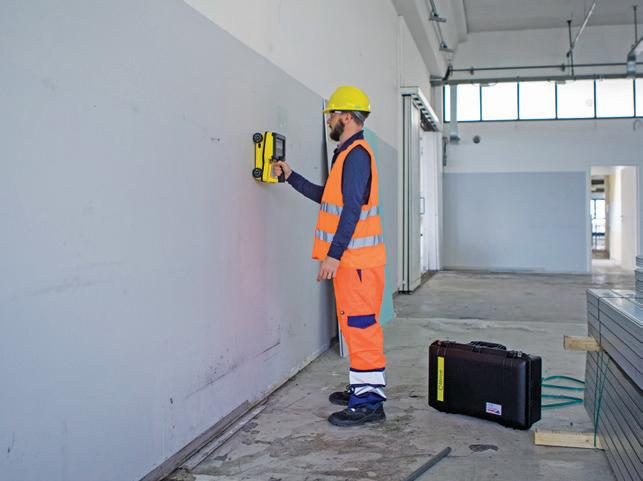


C-thrue – See Thru Concrete Structures and Reveal True Data: all-in-one dual polarisation GPR for accurate scanning and real time analysis of shallow and deep targets in concrete structures.

IQMaps: a new post-processing software application for advanced GPR data analysis with real time processing and 3D visualisation.
www.idsgeoradar.com/products/ground-penetrating-radar or contact Mark Bell from the IDS Georadar Brisbane Office
Email: mark.bell@idsgeoradar.com
Stream UP: a multi-channel, multi frequency, double polarized and lightweight GPR system for high speed utility mapping of large urban areas.
For more information please visit our website
//
: 07
8874
Phone
3117
Opera Duo: dual frequency two antenna GPR system for visualising shallow and deep utilities.
Stream C: high quality, high productivity and simple to use compact array radar system for accurate real-time 3D mapping of utilities.
A WORD FROM WSAA


It’s hard to find a more circular business than water. All water on Earth is used and reused in an endless cycle.
The concept of the circular economy has been gaining traction locally and globally over the past decade and has many benefits for customers, the broader community, the environment and utilities.
Last year, WSAA commissioned the Institute of Sustainable Futures, University of Technology Sydney, to prepare a paper that would help guide water utilities in unlocking the circular economy to better manage resources, make and use products, and regenerate natural systems.
The paper, launched in late 2020, outlines the key building blocks required for a utility to transition to a circular economy as well as the value proposition and the many benefits to all stakeholders.
It collates existing knowledge on the contribution of the urban water industry in a circular economy and recommends the next steps to help utilities begin or further advance their approach. It is supported by 15 international and Australian case studies showcasing the future possibilities for the urban water industry.
Looking beyond the current take-make-dispose extractive industrial model, a circular economy aims to redefine growth, focusing on positive society-wide benefits. It entails gradually decoupling economic activity from the consumption of finite resources and designing waste out of the system.
Underpinned by a transition to renewable energy sources, the circular model builds economic, natural and social capital. It is based on three principles: design out waste and pollution; keep products and materials in use; and regenerate natural systems.
Water utilities can become agents for the circular economy and have an opportunity to play an important role as resource stewards. If we expand our systems view beyond water services, opportunities in other resources become inherent in a circular economy approach.
For systemic change, the transition requires several elements of the system to change simultaneously, compelling governments at all levels, businesses, innovators, investors and consumers to participate in the transition process.
Transition to a circular economy can be characterised by how far we have moved from business-as-usual practices towards sustainable solutions that can be implemented by utilities within their sphere of operation and knowledge; restorative solutions that consider a broader material systems view; and regenerative solutions that seek a positive outcome for the environment and society.
In addition to facilitating regenerated and liveable environments for our cities and communities, Australian and New Zealand urban water utilities need to proactively position themselves as resource recovery enterprises – focusing on the whole interconnected system of water, energy, nutrient and mineral flows.
In February, WSAA is releasing a Circular Economy Action Plan for the water industry. To achieve the transformation to a circular economy approach, the water industry is committed to taking action – such as strengthening our capacity to better partner and collaborate with governments and other sectors, and continuing to engage with our customers and the community to meet their needs.


UTILITY • FEBRUARY 2021 WWW.UTILITYMAGAZINE.COM.AU
6
DENSOSEAL 16A™
A FIRM, FIBROUS MASTIC FOR THE SEALING OF SERVICE ENTRIES AND DUCTS.





DENSO® are leaders in corrosion prevention and sealing technology. With over 135 years’ service to industry, our sealing and molding products offer reliable and cost effective profiling and sealing solutions for cable ducts and conduits worldwide.
Densoseal 16A™ is a self supporting nonsetting mastic which has been developed for sealing cable ducts and conduits against gas or water.
• Adheres to concrete, steel and unplasticised materials such as lead, polythene or PVC.
• Unaffected by natural gas and water.
• Accommodates movement.
• Adheres to wet surfaces.
• Withstands at least 20kPa (2 metre head) water pressure for a minimum of 30 minutes.
FOR CORROSION PREVENTION

www.densoaustralia.com.au
INTERNATIONAL
A MEMBER OF WINN & COALES
Kingdom, UAE & India USA & Canada Australia &
Republic of
United
New Zealand
South Africa
NEW DIGITAL GM APPOINTED AT SYDNEY WATER

Sydney Water has announced a new General Manager of Digital.
Managing Director, Roch Cheroux, announced that Dominic Hatfield had been appointed to the position.
Mr Hatfield holds over five years of experience at News Corp, most recently leading the technology strategy as Chief Information Officer.
Prior to his tenure at News Corp, Mr Hatfield spent over a decade as General Manager of IT at David Jones.
“I’m pleased to announce that Mr Hatfield has joined Sydney Water to lead our digital team,” Mr Cheroux said.
“At Sydney Water, we are serious about digital transformation and Mr Hatfield’s wealth of experience in this area, as well as his customer-focused background, will guide the business as we evolve.
“I’m very optimistic about the ways in which we can use our digital assets to support our customers as we continue to deliver world-class water to Greater Sydney.”
In his role, Mr Hatfield will be responsible for leading Sydney Water’s digital group to: transform the way the business works with data, insights and tools; develop the strategy around how Sydney Water operates and maintains its digital platforms; as well as transforming customer interactions and access to information.
“I am very excited to be joining Sydney Water at a time where digital transformation will play such a crucial role in determining the future shape of the organisation,” Mr Hatfield said.
“The recent digital investment strategy at Sydney Water has set a strong path to establishing the next generation of technology foundations on which to transform the organisation.
“With this brings great opportunity for innovation and new approaches which is a journey that I am very much looking forward to being a part of.”
Mr Hatfield’s appointment is effective immediately.





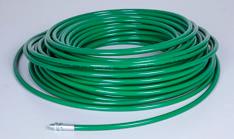
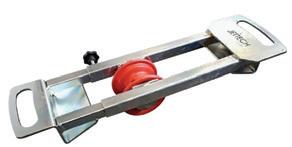

UTILITY • FEBRUARY 2021 WWW.UTILITYMAGAZINE.COM.AU 8 NEWS 1800 816 830 FOR ALL YOUR DRAIN CLEANING EQUIPMENT NEEDS Water Jetting Trucks Water Jetting Trailers CCTV Equipment Find out more about our huge range of plugs and accessories.
we can help you turn data into actionable insights


The term ‘Data Rich, Information Poor’ is all too common in the daily operations of a water distribution network. The growing number of available sensors and monitoring technologies are only meaningful to network managers if they have the right tools to convert data into actionable insights. Our AQUADVANCED® Network solution transforms data from various sources into valuable insights, which enable utilities to optimise their network performance. Whether it’s curtailing non-revenue water losses or increasing the performance of existing assets, SUEZ helps operators to evolve from traditional to smart network management. suez.com.au
08354
TasWater announces $1.8 BILLION SEWERAGE INFRASTRUCTURE INVESTMENT
TasWater has announced a $1.8 billion ten-year investment in upgrades to sewage treatment plants, sewerage networks and other critical infrastructure.
TasWater Manager Asset Strategy, Duncan Sinclair, said the significant capital investment program would greatly improve the organisation’s capacity to safely return wastewater to the environment as well as the network’s capacity to deal with stormwater inundation.
“The Tasmanian Government’s recent budget announcement, committing $160 million to assist TasWater to achieve its infrastructure upgrade goals, will provide additional support to help accelerate key sewerage network improvements,” Mr Sinclair said.
“These important works encompass a range of priority upgrade and renewal programs across the state, from Queenstown in the west, Orford on the east coast, George Town, Westbury and Longford in the north, Latrobe in the north west to Glenorchy in the south.”





Another important investment will focus on resolving the shortcomings of the Launceston network.
Mr Sinclair said the 160-year-old Launceston network was the only combined system in the state, comprising a single pipe to carry both sewage and stormwater.
“During high rainfall, the system is designed to release a mix of heavily diluted sewage and stormwater in a controlled way into the environment to prevent the network backing up and flooding,” Mr Sinclair said.
“Importantly, that release is predominantly stormwater.”
To help rectify the situation, TasWater, the Australian and Tasmanian Governments as well as the City of Launceston Council, are jointly investing $140.7 million through the Tamar Estuary River Health Action Plan under the Launceston City Deal, to improve the river’s health and the system flows within the combined network.






The $107.5 million contribution from federal, state and local governments to this project is in addition to TasWater’s $33.2 million direct capital works investment for the project.
“This work includes the proposed construction of storages to increase TasWater’s capacity to hold flows during significant rain events,” Mr Sinclair said.
“Typically, these controlled releases do not pose any risk to public health and are very carefully monitored.
“TasWater also ensures consistent maintenance of the sewer network through ongoing cleaning, CCTV inspections and pipe relining.”
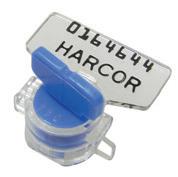



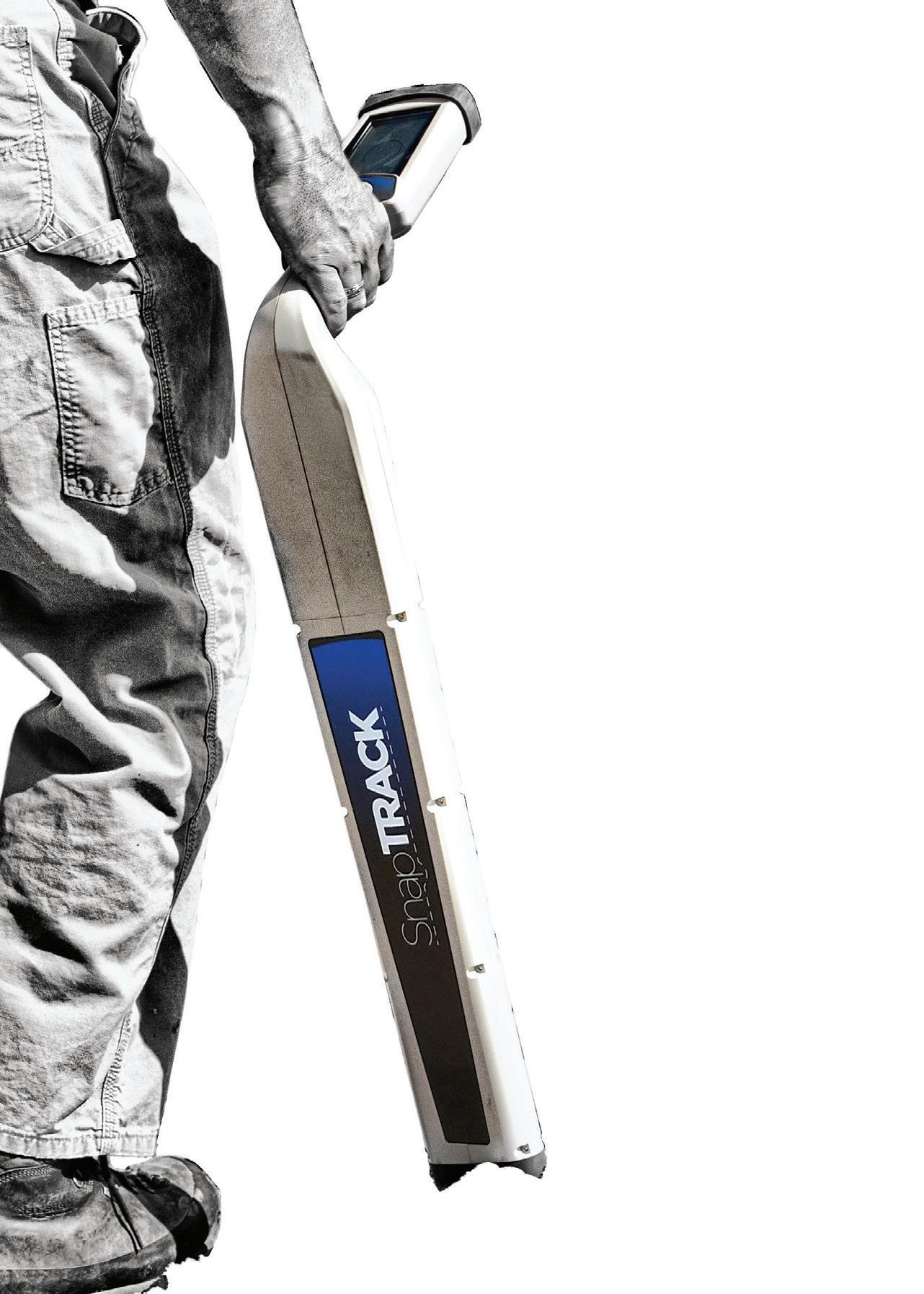

UTILITY • FEBRUARY 2021 WWW.UTILITYMAGAZINE.COM.AU 10 sales@harcor.com.au for more information METER SECURITY SEALS harcor.com.au Master Security Licence No. 407319937 For More Information Visit Expose Unauthorised Access Trackable Serial Numbering Email sales@harcor.com.au RELIED UPON SINCE 1969 PROTECTIVE SUPPLIES Over 245 PPE Products Available Custom Printing Option SAVE MONEY $$ Email sales@harcor.com.au to put our glove, mask sanitiser & wipes prices to the test! NEWS

Simple, Accurate & Affordable PRECISION LOCATING SYSTEM
MELBOURNE WATER COMPANIES COMBINED TO SERVICE GROWING WEST
Victoria’s Western Water and City West Water are combining as a new water entity, Greater Western Water, to support Melbourne’s growing western suburbs.
The Minister for Water, Lisa Neville, Chair of Western Water, Andrew Cairns, and Chair of City West Water, David Middleton, announced the integration on 29 October.
With population growth booming in the west, more infrastructure will be needed to serve the growing community, and without intervention, Western Water would see annual bills increase by up to $500 over the next ten years.
Integrating the two water corporations will mean current Western Water customers not only avoid these price rises, but by 2029 their annual bills will be on average $160 cheaper than they are today. City West Water customers will also see savings of up to $110 on their annual bills compared to where they are now.
Mr Cairns said, “We are prioritising the liveability and affordability needs of our customers and community to


“We

NEWS P E Level 2 Suite 26/20 Enterprise Drive Bundoora Vic 3083 1300 1 L ANCO (52626) tenders@lancogroup com au lancogroup.com.au
business
Your
partner for engineering solutions Since 1998.
don’t purely just design; we help our customers realize their goal, if you give us
idea
provide a efficient and effective engineering solution” Accredited consultant with Melbourne Water, Retail Water Corporations – Metropolitan and Regional Areas Corporate Profile Insurance Category Level of Cover $ Professional Indemnity $10 million Public Liability $20 million Work Cover n/a A list of applicable insurances includes: Name of Entity: Lanco Group Pty Ltd ABN: 27 160 328 478 Company Address: University Hill Business Park South Level 2, Suite 26/20 Enterprise Drive Bundoora, Vic, 3083 Company Structure: Private Company Quality ISO 9001 Environment Health & Safety AS 4801 ISO 14001 2
an
we can

ensure they continue to receive the services they need and value at an affordable price into the future.
“It will also boost local employment opportunities and allow for an upgrade to our Sunbury office.”
Mr Middleton said, “This integration paves the way for greater integrated water management and service delivery opportunities as well as affordable infrastructure planning in Melbourne’s growing outer west.”
The new entity will have the financial resources and staff to cope with the growth and demand for new water infrastructure in the region – supporting jobs and economic activity.
The integration will occur on 1 July 2021 and the transition will be overseen by a committee with an independent chair and board members from both Western Water and City West Water, with reforms including:
• All existing non-executive staff will transfer to the newly integrated water entity – no job losses
• The Sunbury and Footscray offices and all depots will be retained, keeping jobs in the west
• $500,000 will be invested in planning upgrades to convert the Sunbury office into a COVID-safe Greater Western Water hub
• An additional 50 staff will be based at Sunbury over the next three years, and there will continue to be a strong executive presence at the office
• Communities currently served by Western Water will have greater access to the Melbourne water system, providing them the water security they deserve through the desalination plant
Western Water and City West Water have approximately 580,000 customers combined, which is forecast to rise to over 690,000 by 2028.
The formation of Greater Western Water follows work by DELWP, City West Water, Western Water and Melbourne Water to identify the best way to cater for population growth in the region and deliver high-quality, affordable water services.
The chairs of both water corporations found integration was the only option to ensure customers continue to receive high-quality, affordable water services in the face of growing demand for infrastructure and services.
Ms Neville said, “The integration of Western Water and City West Water will mean lower bills for customers well into the future and better services and water security for the region.
“We will protect existing jobs at both water corporations and continue to promote growth for the local economy, to ensure these reforms provide a sustainable future for the region.”









GUIDED BORING SPECIALISTS
ABOUT US
Edge Underground is a precision microtunnelling contractor that operates in Australia and the USA. With a focus on innovative technology and expertise, Edge Underground designs and enhances the performance of trenchless equipment.
OUR SERVICES
• Microtunnelling
•
•
•
Pipe Jacking
Thrust Boring
Laser Tunnel Boring
* stuart@edgeunderground.co 8 www.edgeunderground.co 0458 000 009 ( JACKED 1300 522533
UTILITY • FEBRUARY 2021
Ex-AEMC chief joins EnergyAustralia
EnergyAustralia has appointed an ex-AEMC chief as the company’s Head of Reputation.
Anne Pearson has been appointed to the position and will oversee EnergyAustralia’s operations as they relate to government and policy, industry regulation, communications and media relations, community engagement, social investment, and brand and sponsorship.
“The successful transition of the energy sector depends on a number of factors. Often overlooked is the importance in working closely with a range of stakeholders, customers and communities, to understand their expectations and help address issues as they arise,” Ms Pearson said.
“EnergyAustralia is playing a major role in the transition. I look forward to building on the strong relationships and reputation they have for doing the right thing.
“Meanwhile, we remain focused on supporting our customers and keeping the lights on during this difficult period.”
A former lawyer, Ms Pearson has cemented a strong reputation in the energy sector and has held senior positions, including Senior Director and subsequently Chief Executive at the Australian Energy Market Commission, and was recently Acting Executive Manager at WaterNSW.


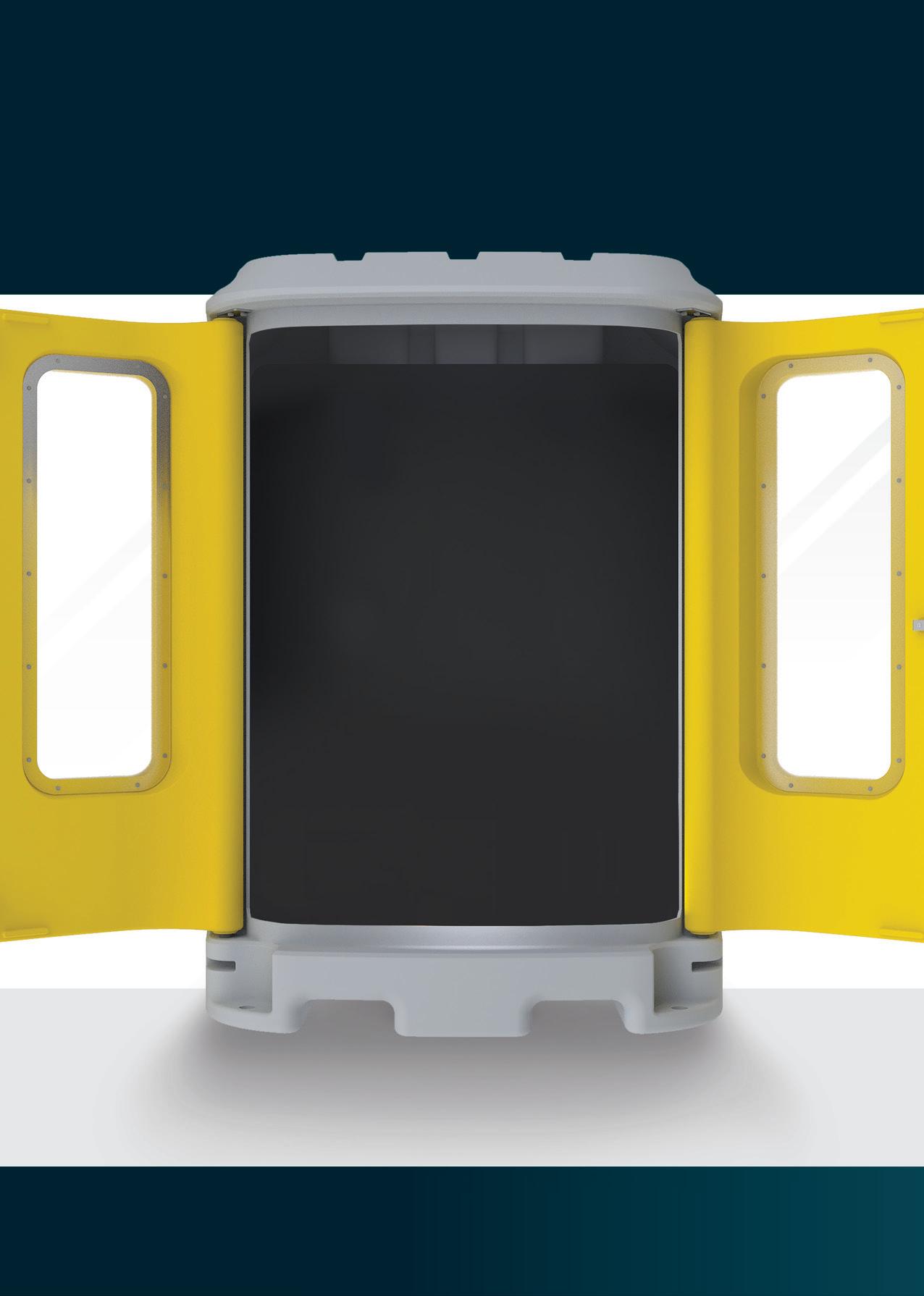
UTILITY • FEBRUARY 2021 WWW.UTILITYMAGAZINE.COM.AU 14 NEWS





AUSTRALIA’S FIRST GRID-SCALE FLOW BATTERY HEADED FOR SA
Australia’s first ever utility-scale vanadium flow battery is on the way for regional South Australia, with the Australian Renewable Energy Agency (ARENA) announcing $5.7 million in funding to Yadlamalka Energy to install it.
The battery installation has been designed to demonstrate the potential impact that flow batteries could provide in reaching the energy storage target in the Federal Government’s first Low Emissions Technology Statement.
The $20.3 million project will co-locate a 2MW/8MWh vanadium flow battery with a 6MW solar PV array at Neuroodla, near Hawker in South Australia.
It will connect to the National Electricity Market (NEM) to demonstrate the potential for grid-connected vanadium flow batteries to provide energy and frequency control ancillary services (FCAS).
Neuroodla is located at a relatively weak part of the distribution network. The connection of energy storage alongside additional renewable energy generation is expected to improve the reliability of energy supply within the region.
The project will create up to 100 jobs during the construction phase as well as ongoing employment opportunities for locals.
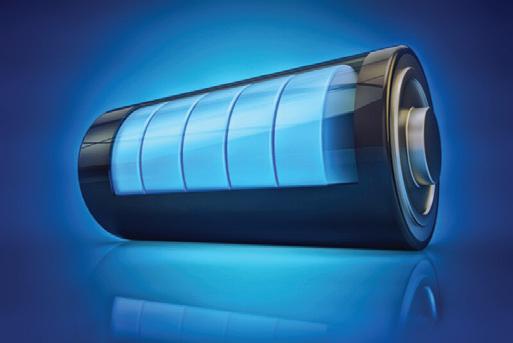
The battery for Yadlamalka Energy will be supplied by Invinity Energy Systems.
The Australian Energy Market Operator (AEMO) and the Federal Government’s first Low Emissions Technology Statement identified an emerging requirement for mediumduration storage, with vanadium flow battery technology seen as a potentially scalable and flexible solution.
Vanadium flow batteries are a form of heavy-duty stationary energy storage, designed for use in high-utilisation applications such as being coupled with industrial-scale solar PV generation for distributed, low-emissions energy projects.
Vanadium flow batteries store energy in a non-flammable, liquid electrolyte and do not degrade with cycling like lithiumion batteries. They can be scaled and located with greater flexibility than pumped hydro energy storage, which may
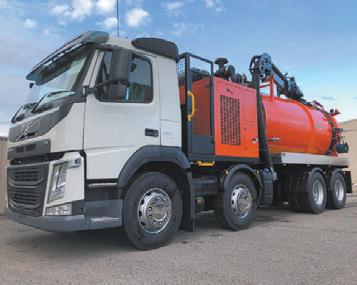

UTILITY • FEBRUARY 2021 WWW.UTILITYMAGAZINE.COM.AU 16 NEWS THE NON-DESTRUCTIVE EXCAVATION SPECIALISTS
by 40 years of engineering excellence, Vac Dig is proud to offer our economical standard units, or a customized solution to suit your specific needs. Australian manufactured. Made for Australian conditions by Australians.
Innovative design
Exceptional build quality
Unrivalled after sales services YOUR BUSINESS IS IMPORTANT TO US 0407 593 137 info@vacdig.com.au www.vacdig.com.au
Backed
•
•
•
increase the potential applications for this technology.
ARENA CEO, Darren Miller, said flow batteries were an exciting technology to address the emerging energy storage requirement.
“The strong uptake of variable renewable energy like solar PV and wind has highlighted the need for increased energy storage, and vanadium flow batteries could play a major role in addressing this need, complementing the role of more established technologies such as pumped hydro energy storage and lithium-ion batteries in the Australian market,” Mr Miller said.
“We look forward to working with Yadlamalka Energy on this exciting project to demonstrate the benefits of flow batteries connected to the grid, particularly the ability to shift the dispatch of renewable energy into the evening when consumer demand is highest.”
Andrew Doman, Chairman and founder of Yadlamalka Energy, thanked ARENA for its support for this important development in South Australia.
“Yadlamalka Energy is committed to developing renewable technology solutions to enable a sustainable energy future,” Mr Doman said.
“This project will provide vital support for the electricity grid in South Australia, which relies heavily on intermittent renewable energy sources, leaving it vulnerable to unexpected changes in sunshine and wind. ARENA’s contribution is critical to allowing our project to proceed, and we look forward to working with them.”
Minister for Energy and Emissions Reduction, Angus Taylor, said longer-duration energy storage is one of five

priority technologies identified by the Federal Government in the Technology Investment Roadmap to accelerate the competitiveness of new and emerging technologies with higher-emissions alternatives.
“This project will ensure South Australians can access the power they need, when they need it,” Mr Taylor said.
“Longer-duration energy storage is a key focus because it will enable reliable, firmed wind and solar at prices around the average wholesale electricity price of today.
“Getting the technologies of the future right will support 130,000 jobs by 2030 and drive down emissions.
“Our government is focused on providing affordable and reliable power to all Australians, which is why we’re backing this project through ARENA to improve South Australia’s energy supply and keep the lights on.
“We are investing in the technologies that will help us meet our emissions reduction targets, deliver reliable and affordable power to households and businesses, strengthen the economy and drive job creation.”
Member for Grey, Rowan Ramsey, said there has been a large drop in the price of wholesale electricity with the heavy investment in renewables in South Australia.
“This has created an often over-supplied market,” Mr Ramsey said.
“This in turn has created more instability in the grid and stabilisation projects like this one are essential to back up the renewable generators.”
The first power generated from the project is expected to flow by early 2022.
• Cost savings of up to 40% compared to sliplining
• Installation speeds of up to 10 metres per minute
• Up to 2,500 metres per pull
• Small pits, minor installation footprint
• Maximum capacity (low wall thickness of 6 mm for PN 16)
• Increase operating pressure independently of host pipe

HOST PIPE DESTINATION PIT 45
successfullyinstalled in Australia! Inner Layer: Media-specific based on PE or TPU
Aramid Outer Layer: Abrasion-resistant PE sheath
sewer rising mains
degrees Morethan30projects
Reinforcement:
Trenchless rehabilitation of water mains and
• Avoid cost for disposal of asbestos cement mains
Raedlinger
Ltd Mr Heiko Manzke Level 6, 8 Spring Street Sydney, NSW
Phone: 07 318 15721 heiko.manzke@primusline.com
• AS/NZS 4020 : 2005 certified
Primus Line Pty
2000 · Australia
www.primusline.com
NEWS UTILITY • FEBRUARY 2021 WWW.UTILITYMAGAZINE.COM.AU 17
WESTERN POWER REVEALS PROPOSAL FOR ADDING 50MW INTO SWIS
Highlighted in its Distribution Storage Opportunities Information Plan, Western Power has unveiled a proposed investment in up to an extra 50MW of battery storage for the South West Interconnected System (SWIS).
The proposed investment is separate to the Synergy 100MW big battery and will be used in areas of the grid that have been identified as providing network and community benefits.
A key part of the proposed investment is driving future capability for Australian businesses to be a part of the energy storage industry through the manufacture, installation and operation of community and behind-the-meter batteries.
Western Power Principal Engineer, Nathan Kirby, said planning for energy storage was a key deliverable under the WA Distributed Energy Resources Roadmap and part of the state’s Energy Transformation Strategy.
“The plan outlines opportunities where we can work with private industry and WA businesses to obtain distribution storage services and installations across the network, including residential and commercial customer batteries as well as flexible loads and other innovative demand reduction services,” Mr Kirby said.
“This will help meet emerging network needs as well as providing operational cost efficiencies and greater community benefits.”
To support this initiative, Western Power is seeking Registrations of Interest from industry and retailers interested in providing non-network solutions including behind-the-meter batteries in specific locations.
“This proposed further investment follows the delivery of 12 community batteries during the last 18 months to help meet Western Australia’s energy needs now and in the future,” Mr Kirby said.
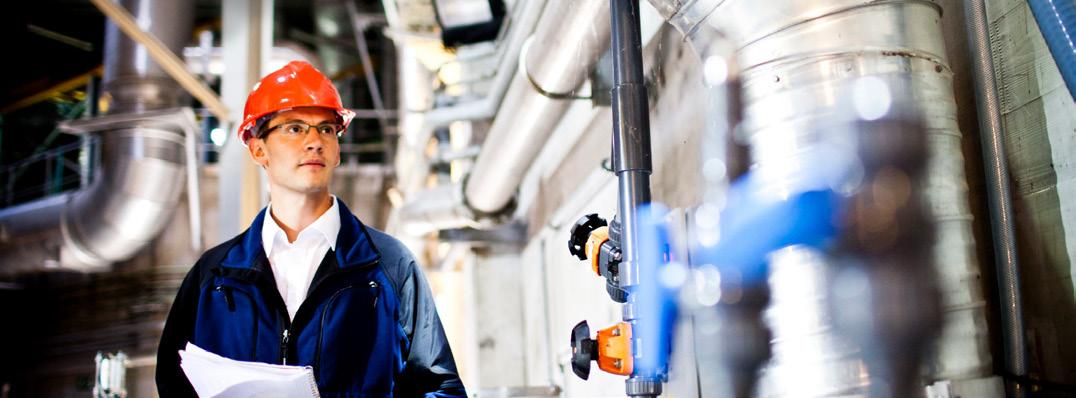
Innovative Water Solutions
WATER TECHNOLOGIES
Through its innovative solutions, Veolia Water Technologies enables industry, local authorities and citizens to optimize their use of resources for more efficient, environmentally-friendly and socially responsible outcomes.
We understand the importance of increasing the value of water and we do so by supplying high quality water, treating and reusing wastewater, producing and/or recovering energy, extracting raw materials and capitalizing on valuable byproducts.
www.veoliawatertechnologies.com.au
UTILITY • FEBRUARY 2021 WWW.UTILITYMAGAZINE.COM.AU 18 NEWS
© Veolia Photo Library


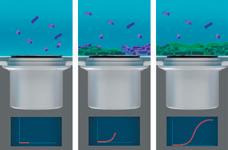




UTILITY • FEBRUARY 2021 WWW.UTILITYMAGAZINE.COM.AU 19 NEWS & Velocity measurement Continuous Biofilm Monitoring Sample Biofilm growth signal over time • Residual Chlorine • Dissolved Ozone • Dissolved Oxygen • Suspended Solids • PH/ORP • Conductivity • Fluoride • Turbidity INNOVATIVE WATER ANALYSERS BIOFILM ANALYSER ANALYTICAL CONTROLLERS PROCESS INSTRUMENTS LAR • Lightweight, compact design • No interruption to service • ATEX Ex mb Zones 1 & 2 approval • Minimal installation costs • Maintenance-free • RS485 Modbus • IP68 • Non-contacting • Cost-effective • Early detection of Bacterial Growth on surfaces • Monitoring & optimisation of sanitation requirements. NEW TURBIDITY MONITOR BINTECH SYSTEMS WATER SOLUTIONS Many other measurements available 1300 363 163 sales@bintech.com.au www.bintech.com.au • TOC • COD • TOD • BOD • Toxicity • TN • Oil-in-Water NEW
“Batteries deliver a range of network and customer benefits, particularly with the growth of solar where we now have one in three households with solar panels. “Community batteries and other storage options all play an important role in ensuring power system stability and security while providing a viable alternative to traditional energy options.”
WINNERS OF THE 2020 DIGITAL UTILITY AWARDS ANNOUNCED
The winners of the 2020 Digital Utility Awards have been revealed at a virtual symposium and awards ceremony that took place on Thursday 22 October.
Six awards were handed out in total, celebrating the utility industry’s greatest achievements in the digitisation of utility networks, processes and practices across Australia.
AWARDS DIGITAL UTILITY
THE WINNERS ARE:
Best Customer Innovation Award – Bill Identity
Best Use of New Technology Award – SA Power Networks
Digital Utility of the Year - Energy – Western Power
Digital Utility of the Year - Water – Urban Utilities
Young Digital Leader of the Year Award – Gagneet Serai, Senior Asset Analytics Engineer, Unitywater
Utility Innovator of the Year Award – Cameron Dorse, Chief Digital Officer, Jemena
The calibre of entries for this year’s awards was extremely high, and choosing the winners proved to be a difficult decision for the panel of judges which included:
• Adam Lovell, Executive Director, Water Services Association of Australia
• Andrew Dillon, Chief Executive Officer, Energy Networks Australia
• Craig Mathisen, Chief Operations Officer, Water Industry Operators Association of Australia
• Faye Griffiths, Managing Director, Resources Operating Group, Accenture
• Sanj Perera, Asia Pacific Consulting Partner, Deloitte
• Tony Martin, Oceania Advisory Leader, Energy Transition,
EY
The six judges have a wealth of experience across water and power utilities.
Both the awards and the Digital Utilities conference were launched as a way to gather some of the best ideas when it comes to the digitisation of utilities so that all of the industry can benefit from some of the impressive changes that are being made as different organisations embark on their digital transformation journeys.
The winning entries were deemed the best in utility digitisation for 2020, and were among high-quality finalists in each category.
BEST CUSTOMER INNOVATION
Bill Identity – for its software solution that leverages Robotic Process Automation technology to fully automate utility bill management.
Energy Queensland – for its Look Up and Live app, which pinpoints the location of more than 178,000km of overhead powerlines to improve safety.
Hunter Water – for its online Water Usage Calculator that provides personalised water saving tips and realtime feedback on how a user’s behaviour impacts their water usage.
Jemena – for its Customer Journeys Program, which involved radically innovating digital solutions for three key steps in the process of customers connecting to gas or electricity.
United Energy – for its Network Fault Detection System, which analyses, in near real time, the data from smart meters to help identify potentially unsafe network connections that may result in electric shocks.
Urban Utilities – for its adoption of the Virtual Assist platform in its Contact Centre to improve the accuracy of fault logging and response resolution time.
Water Corporation – for its Water Watchers online tool, which helps customers compare their water use with similar households based on four key factors: suburb, block size, number of people and bore use.
BEST USE OF NEW TECHNOLOGY
CitiPower, Powercor and United Energy – for its LiDAR Lab project, which is using LIDAR surveying and machine learning to create a digital map of network infrastructure and analyse historical data.
Endeavour Energy – for its use of geospatial analysis to understand the past, present and future vegetation risks on a bushfire-prone electricity network.
Jemena – for its cloud analytics platform, Jemena Amazon Web Services (JAWS), which combines a data lake, curated data sets and reusable machine learning applications.
Melbourne Water – for its use of Artificial Intelligence to automatically assess vegetation from images captured by drones.
SA Power Networks – for its network of the future solution, which is leveraging an opportunity to offer an increased energy export limit, above the standard 5kW, and better integrate distributed energy resources.
UTILITY • FEBRUARY 2021 WWW.UTILITYMAGAZINE.COM.AU 20
UTILITIES
DIGITAL
SA Water – for its fresh approach to SCADA, which saw the replacement of its decentralised platform to a central, virtual solution across multiple secure data centres.
South East Water – for its Aquarevo residential development, which brings together a suite of innovative water and energy saving technologies that have not previously been incorporated in an urban residential context.
Water Corporation – for its H2OME study, which combines multiple big data sets, including digital metering data, household data, and weather, spatial, land and CSIRO photogrammetry data to understand the drivers of water use.
DIGITAL UTILITY OF THE YEAR – ENERGY
Jemena
SA Power Networks
Western Power
DIGITAL UTILITY OF THE YEAR – WATER
South East Water
Urban Utilities
YOUNG DIGITAL LEADER OF THE YEAR
Gagneet Serai, Senior Asset Analytics Engineer, Unitywater
Ian Harding, Remote and Mobile Technologies Specialist, Melbourne Water
Jesse Mills, Strategic Customer Innovation Lead, Jemena
Jiangxia Zhong, Data Analytics Engineer, Jemena
Raphael D’Almeida, Works Delivery Analyst, Unitywater
Roger Barnes, CEO, Billcap and Managing Director, SleevesUp
UTILITY INNOVATOR OF THE YEAR
Cameron Dorse, Chief Digital Officer, Jemena
Russell Riding, Automation Team Leader, Melbourne Water
Tristan Bottrell, Manager Digital Projects, Water Corporation
The 2020 Digital Utility Awards and Symposium was a continuation of the original Digital Utilities 2020 event in March. The Digital Utilities program is created by the team behind Utility magazine.
Moving towards a digital format this year was a necessity, but also reflects the event’s philosophy of digitisation and adaptation. Utility was hoping to be able to host an in-person awards night before the end of the year, but with the ongoing COVID-19 restrictions, a live event just wasn’t feasible.
In addition to the awards ceremony, symposium delegates also heard from the industry’s leading experts on how COVID-19 had changed or accelerated utility digital transformation strategies and priorities.
During 2019, Jemena embarked on a digital transformation that has radically changed what and how it delivers the digital outcomes its customers want and need. During a Q&A session with Phil Duncanson, General Manager Digital and Analytics at Jemena, attendees learned about the establishment of one of the utility’s key digital technologies – the Jemena Amazon Web Services analytics platform.
COVID-19 has resulted in an increased number of people requiring temporary or ongoing financial support from their essential service providers. In his presentation, Using data analytics to support customers in hardship, Paul Cranwell, Customer Analytics Specialist at SA Water, explored how data analytics has enabled a more targeted approach around hardship to meet emerging and individual customer needs.
Zubran Solaiman, Director, Product Management at Bentley Systems, who was the Digital Utilities 2020 Event Partner, pre-recorded an informative presentation on how to ensure the successful delivery and adoption of digital transformation projects.
The symposium concluded with an industry panel that featured fascinating insights from Carlos Gamez, Head of Asset Performance, Western Power; Dennis Cristante, Head of ICT Portfolio Planning & Business, Urban Utilities; and Adam Bumpus, CEO and co-founder of RedGrid, and Senior Lecturer at the University of Melbourne.
Utility would like to congratulate all the finalists and winners of the awards and looks forward to working with the industry again for next year’s event.
To watch the event on demand, please visit www.monkeymediaevents.com.au/digital-utility-2020-awards-free





UTILITY • FEBRUARY 2021 WWW.UTILITYMAGAZINE.COM.AU 21
DIGITAL UTILITIES
Major Sponsors Sponsors
Event Partner 2020
HELPING UTILITIES POSITION THEIR DIGITAL STRATEGY FOR THE NEW REALITY
As people realise they don’t always need to travel, and can reach people they don’t normally get to, virtual events are set to become a permanent part of the mix, even as travel restrictions lift. While there are plenty of people who are keen to get face to face as soon as possible, the reality is that with ongoing uncertainty, the utility sector needs to find better ways to connect online. With this in mind, Digital Utilities 2021 will be run primarily as an online event, ensuring it is accessible to as many people in the industry as possible.
Brought to you by Utility magazine, Digital Utilities 2021 is a landmark virtual event for the Australian utility sector, taking place between 16–24 March 2021.
This major summit consists of four Virtual Conferences over a two-week period, diving deep into some of the critical challenges and focus areas for the sector, and providing delegates with genuine learning opportunities from some of the best and brightest minds across Australia (and the world!).
As well as the four major Virtual Conference events, the summit will feature online networking opportunities,
TUESDAY 16 MARCH – 2PM AEST
Digital customer: digital engagement in a post-pandemic world
Digital engagement in a post-pandemic world will explore how technology is improving the customer experience and enabling digital ways of working.
WEDNESDAY 17 MARCH –2PM AEST
Digital energy: towards smarter energy networks
Towards smarter energy networks will look at how technology can solve some of the challenges associated with managing two-way flows of power.
enabling delegates to make genuine connections with other industry professionals.
Attendees can still enjoy the entire event from the comfort of their homes or offices, but for those who want to get extra value from meeting up with peers in the real world, there will also be a live networking event in Sydney to make connections and build new relationships.
There are four Virtual Conferences that make up Digital Utilities 2021, which each focus on unique aspects of the utility digitisation journey.
COVID-19 made in-person networking impossible in 2020 due to restrictions, but this year we’re also introducing a live networking element to the event.
The live networking function will take place at 5pm on Wednesday 17 March at the Sofitel Sydney Wentworth, and will feature an industry-leading presenter, match-making and speed networking activities, and a cocktail party reception.
TUESDAY 23 MARCH – 2PM AEST
Digital water: safeguarding our water supplies
Safeguarding our water supplies will explore how technology can help solve operational challenges to ensure water security.
WEDNESDAY 24 MARCH –2PM AEST
Future utility: imagining the digital utility of tomorrow
Imagining the digital utility of tomorrow will be focused on emerging technology, and potential future product and service innovations.
The virtual component of Digital Utilities 2021 is free for all utilities, government and not-for-profits. For more information and to register, visit www.digitalutilities.com.au
UTILITY • FEBRUARY 2021 WWW.UTILITYMAGAZINE.COM.AU 22 DIGITAL UTILITIES

2021

FIRST SPEAKERS ANNOUNCED
Shaunna Berendsen – Head of Innovation Engagement, Anglian Water (UK)
Having previously worked for a leading technology consultancy, Shaunna is now driving and influencing internal innovation culture at Anglian Water to meet pioneering business challenges. She is also responsible for sustaining supplier engagement through platforms such as the Anglian Water Shop Window and the Water Innovation Network (WIN), enabling true supply chain collaboration and positioning Anglian Water to be one of the leading utilities of the world.

Mark Vincent – General Manager Strategy and Transformation, SA Power Networks
Mark has over 35 years’ experience in the energy industry and has been engaged in many areas within the electrical sector, including regulation, operations management, asset management and business transformation. Mark is currently charged with developing SA Power Networks’ strategy to deal with the opportunities arising from customers’ continued take-up of distributed energy resources, and the increasing challenges and risks posed by South Australia’s aging network infrastructure.

Tracy Deveugle-Frink – Head of Change and Innovation, Western Power
With over eight years’ experience in consulting to disrupted industries, Tracy’s diverse experience and passion for innovation and strategy drives her to constantly challenge the status quo, to build the world we all deserve. Tracy’s experience offers a fresh approach to change, innovation and strategy implementation at Western Power. Tracy has worked with Western Australian businesses to launch their innovation hubs and new, agile ways of working, as well as being involved in major transformational projects, and brings this passion into her roles as Chair of TEDxPerth and Friends of Perth Festival. Tracy has now set her sights on transforming the energy industry in WA – one idea at a time.

Dr Mark Stephens – Asset Analytics Lead, SA Water
Dr Mark Stephens has considerable expertise in strategic asset management, asset planning and engineering, with a career in the water industry spanning more than 25 years. Mark is currently SA Water’s Asset Analytics Lead for its innovative smart water network, leading planning of these emerging technologies, changing the way water services are delivered. Mark has also worked for United Water providing design, construction and commissioning expertise.

Renae Sambrooks – Manager Customer Solutions, Horizon Power
Renae is the Manager Customer Solutions for Horizon Power, co-creating with customers on their renewable energy solutions across regional and remote West Australia. Her previous role as General Manager Energy and Commercial at Vicinity Centres saw the embedding of innovation culture with a global-first transparent solar glass commercial installation, Australianretail-first bifacial panels with reflective surface coating test zones, Australia's largest retail battery and solar shade structure installation.

Dr Peter Wong – Network Technology and Measurement Manager, Jemena
Dr Wong is currently the Network Technology and Measurement Manager at Jemena, a multi-utility operating in the electricity, gas and water sectors, and is responsible for new technology and smart meter strategies and applications. Dr Wong has had a distinguished career as a professional engineer. He received the Energy Networks Association Overseas Study Tour Award in 2011, was awarded the John Madsen medal for the best paper published in the Australian Journal of Electrical and Electronic Engineering in 2015, and received the Lifetime Achievement in Energy Award from the Electrical Energy Society of Australia in 2017.
23 UTILITY • FEBRUARY 2021 WWW.UTILITYMAGAZINE.COM.AU DIGITAL UTILITIES
SUEZ’S ON’CONNECT™ INTELLIGENT WATER METER SOLUTION TO BOOST GOULBURN VALLEY WATER

SUEZ has partnered with Goulburn Valley Water (GVW) to implement a market-leading digital water metering network solution to optimise and reduce peak water consumption and water losses across northern Victoria.
After a public tender process, SUEZ was awarded the contract to lead the intelligent water metering project trial using ON’Connect™, an internationallyrecognised intelligent water meter solution built on the WIZE open wireless Internet of Things standard.
WIZE is a field-proven platform originally developed by water utilities in 2005 as a fully open standard, with no requirement for exclusivity to any one manufacturer.
The project will help detect, optimise and manage drinking water consumption and wastewater production from some of GVW’s 128,000-strong customer base, residing in 54 towns across northern Victoria.
It will also help GVW protect private property from water damage due to undetected water leaks and save the community money by reducing the demand on infrastructure.
Scheduled for completion in 2021, the trial will see the deployment of more than 11,000 metering points in four towns across 20,000km² over a period of 12 months.
SUEZ Senior Manager, Smart Water, Sean Cohen, said the project will be industry leading among Australian water service providers, using a low-cost, sustainable digital metering solution and a fully open platform.
“We’re looking forward to working with Goulburn Valley Water on this innovative trial that will help pave the way for future water utilities seeking an open and low-powered solution using meters that have exceptionally long device life,” Mr Cohen said.
SUEZ’s ON’Connect™ intelligent meter solution is the backbone for over four million water meters globally, including 2.3 million in France, 1.4 million in Spain and 250,000 in Malta. Over 600 local authorities have chosen the solution in France alone with other meters continuing to be deployed worldwide.
“One of the key benefits for Goulburn Valley Water from using the meters will be the access to quality data, enabling more insight into how the utility’s network is behaving,” Mr Cohen said.
“Using this data as part of an integrated customer portal experience, customers will be empowered to start changing and adapting their behaviour to reduce consumption, ultimately reducing their water bills and environmental footprint.
“It’s a win for Goulburn Valley Water, a win for residents, and a win for the environment.”

UTILITY • FEBRUARY 2021 WWW.UTILITYMAGAZINE.COM.AU 24 BIG DATA | Utility Partner Solutions

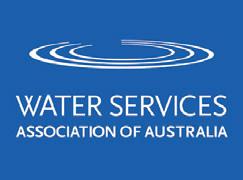
KWIK-ZIP’S HDX SERIES CASING SPACERS COMPLY WITH WSAA PRODUCT SPEC #324 – CASING SPACERS; REFER WSAA PRODUCT APPRAISAL REPORT #1523 Is your pipe spacer compliant? Call us for details on ordering P (08) 9725 4678 sales@kwikzip.com www.kwikzip.com
HOW AI OPTIMISES WASTEWATER TREATMENT
The chemical treatment of wastewater is perhaps the most crucial part of wastewater treatment practices, and it has largely remained unchanged for the last 100 years.
Conventional operations can include the processing of sewage/effluent through various stages of comprehensive chemical treatment, like pH neutralisation, oxidation, ion exchange, coagulation and flocculation. Although these practices can help achieve better outcomes for plants, they can involve multi-step, time-consuming processes that are now struggling to keep up with the unpredictable environmental factors of modern times.
To accommodate these new conditions, while simultaneously improving chemical and energy use in treatment plants, operators need to understand an expansive amount of data. Processing this data is a time-consuming and labour-intensive process, so how can it be managed efficiently and with plant objectives in mind?
The solution could be in the adoption of Artificial Intelligence (AI).
AI is transforming the conventional multi-step process and helping operators maintain wastewater treatment facilities more effectively by enhancing the efficiency of older systems. Learning from operations, predictive control uses dynamic data to provide recommendations based on the ever-changing conditions of a water-intensive industrial plant.
Here are three ways that AI can help improve wastewater treatment:
1. AI is used for continuous learning to guide operational improvements
Wastewater treatment operators need to discern from various factors – such as biological relationships, pressure, flow and water quality – the proper steps to achieve a certain treatment outcome. AI can use all this past data to not only remind operators of past best management practices, but also to find unknown relationships within sewage and effluent treatment systems.
2. It identifies intelligent cost-saving opportunities aligned with compliance standards
AI can work to reduce operating costs – such as chemical overuse and energy consumption – all while improving or maintaining compliance. This mitigates the costs associated with large process changes that typically require capital improvement projects.
3. It helps any organisation adopt a water optimisation mindset
Innovyze has combined all associated disciplines to create unique machine learning models for the water industry. The result is water optimisation intelligence that can be implemented in both municipal and industrial water systems. Ultimately, operators can access solutions created by water engineers, for water users.
No longer do wastewater treatment plants need to overspend their funds to learn how to optimise static conditions, as Innovyze has partnered with municipalities and industrial partners to bring the benefit of AI to their systems. These organisations are leveraging the power of AI and advancing computational processing to predict outcomes and optimise operations in real time. Now all wastewater treatment plants have the opportunity to evolve with modern times by joining the digital revolution of AI.
Innovyze is currently offering a free AI-readiness assessment and return on investment report which can highlight the benefits and potential savings that AI can bring your organisation across all stages of the water cycle.


To learn more about Innovyze’s AI solution, visit: www.innovyze.com/en-us/products/emagin
26 UTILITY • FEBRUARY 2021 WWW.UTILITYMAGAZINE.COM.AU BIG DATA | Utility Partner Solutions

innovyze.com To learn more contact an Innovyze AI expert today. +61 (0) 7 5506 5700 sales-asiapac@innovyze.com Use AI to Optimise Wastewater Treatment with Predictive Control
INTEGRATING DATA ACROSS WATER ASSETS TO ENHANCE CUSTOMER CENTRICITY
Water utilities are often challenged to do more with less. With ever-growing pressures on service delivery, quality and cost, the demand for improved service levels, and justifications for cost of service are at an all-time high. One solution is to adopt customer-centric approaches to service delivery, asset management strategies and investments.
Acustomer-centric approach adds velocity and adaptability to stability, creating a critical source of competitive advantage in volatile, uncertain, complex and ambiguous conditions.
In order to facilitate change, industry needs to better understand asset data and data-related issues. A customercentric approach is achievable by eliminating data overcollection and generating useful insights holistically.
There are seven data management elements that can assist organisations to make the paradigm shift from data silos to collaborative data use. Each element has value to an organisation. But experience and research show that true collaboration comes only when all seven are in place and work together within a platform-based approach that integrates across data silos.
The elements below describe the organic system that enables a data-driven approach to customer-centric decisionmaking. Together, these seven elements form the basis for an overarching digital water platform.
STRATEGY, INNOVATION AND GOVERNANCE
At the heart of every strong digital effort is the need for a clear vision, empowered by innovation and governance. With a digital water platform, all data is treated as an asset, ensuring it is well defined and aligned, with access granted only to authorised people. Components include:
• Digital strategy and roadmap
• Stewardship, partnership and alignment
• Open innovation and design thinking
• Data, digital and operations governance
• Security, masking and privacy
DEVELOPMENT AND OPERATIONS
A comprehensive development and operations layer underpins a digital water platform. It includes:
• End-to-end operations
• Platform monitoring and managed services
• Agile development, testing and release management
• Scheduling and orchestration for updates
• Centralised business rules repository and measurement framework
• Metadata and master data closely managed
DATA CAPTURE
A multichannel data capture mechanism can ensure data is loaded into the digital water platform as quickly and effectively as possible. Features include:
• Designed and developed based on real-time data processing
• Seamless integration with modern edge computer and legacy systems
• Feature extraction and pattern recognition
• Ad-hoc files can be quickly uploaded to platform
DATA CURATION
The evolutionary data curation layer ensures all data is stored, cleansed and transformed quickly. Features include:
• Real-time data feeds can be configured
• Operations and data holdings store all raw data and associated metadata
• All data is profiled, cleansed and fused together
• Curated data model delivers a robust, centralised data model
• Data lab delivers specialised environments
DIGITAL INSIGHTS
Handling data effectively within a water utility helps the business, operators and decision makers understand historical trends, monitor current state, forecast the future and automate mundane tasks. This includes:
• Business analytics
• Descriptive analytics
• Predictive analytics
• Prescriptive analytics
UTILITY • FEBRUARY 2021 WWW.UTILITYMAGAZINE.COM.AU 28 BIG DATA | Utility Partner Solutions
DATA INTERFACE
WATER APPLICATIONS


The data interface allows consumers to interact with the platform through a range of techniques and screens based on need and process so:
• Consumers can dynamically explore and search data for new insights
• Consumers can apply sophisticated mathematical, statistical and engineering analysis techniques
• Employees can make use of sophisticated data visualisation, dashboards and performance management
• New insights and content can be published through a centralised knowledge portal
• Dynamic rules can drive users to be notified via email or SMS
• New content and insights can be automatically recommended by the system
• Insights and decisions can be actioned, approved and monitored
• The platform is application-programming interface (API) enabled, allowing the development of specialised mobile apps
We have developed modules and applications specific to water utilities to help accelerate the delivery of targeted insights across the business. Components include:
• Predictive asset failure
• Water asset reporting
• Workforce optimisation
• Maintenance optimisation
• Overflow and spill prevention
• Event and disaster simulation
• Digital plant performance
• Risk prediction and monitoring
• Field force mobile app delivers anywhere, anytime access to knowledge, insights and automation
• Capital program portfolio optimisation
Today’s environment is pressing water utilities to become more integrated, in order to become more customer centric. In response, a new approach to data management to assist decision-making is emerging that includes these seven elements. These steps enable water utilities to balance stability and dynamism, and thrive in an era of unprecedented opportunity.

To learn more about how to begin the journey towards a customer-centric approach enabled by data for your water utility, contact Colin Dominish, Regional Director – Southern Hemisphere, GHD Digital, at Colin.Dominish@ghd.com.
UTILITY • FEBRUARY 2021 WWW.UTILITYMAGAZINE.COM.AU 29 Utility Partner Solutions | BIG DATA

CYBER SECURITY IN THE AGE OF INDUSTRY 4.0
The fourth industrial revolution, also known as Industry 4.0, refers to the ongoing automation of traditional manufacturing and industrial practices, using modern smart technology that has the potential to analyse and diagnose issues without the need for human intervention. The interconnected nature of industry 4.0–driven operations, along with the acceleration of digital transformation initiatives, has increased cyber security risks, and Utility spoke to Professor Ryan Ko, Chair and Director of Cyber Security at the University of Queensland, about how utilities can effectively prevent and mitigate cyber attacks.
According to Professor Ko, cyber attacks are increasing at a rate never experienced before and will continue to rise.
“For example, on a global scale, there is a new and unique malware created every half a second. On the other hand, most of the cyber response and threat intelligence mechanisms are manual based,” Professor Ko said.
“Evidently, the scale and volume of emerging new threats in comparison to the inadequate speed and effectiveness of responses means that the cyber criminals actually have an upper hand.”
Professor Ko explained that two types of malware are pertinent to utilities.
“The first type of malware would be ransomware, which results in infected computing systems getting ‘locked’ cryptographically, resulting in no user access to important systems and files until a ransom is paid to the criminals,” Professor Ko said.
“Today, ransomware infects computers mostly via two avenues: phishing emails or data breaches. While phishing-based ransomware is well-known to the public, the more recent and large-scale attacks on prominent critical infrastructure mostly stem from data breaches, where organisations’ logins and passwords were previously leaked online by hackers, and are reused by ransomware criminals in an attempt to gain access to key systems. This is why
UTILITY • FEBRUARY 2021 WWW.UTILITYMAGAZINE.COM.AU 30
CYBER SECURITY

a regular change of passwords and the use of multi-factor authentication is encouraged.
“The second type is malware that targets Operational Technology (OT) equipment such as programmable logic controllers (PLC) or human-machine interfaces (HMI), or network (or internet) connections to this OT equipment.
“This type of malware aims to affect the integrity and availability of the data and signals. An example would be the Stuxnet malware discovered in 2010, which resulted in the Iranian nuclear enrichment control equipment being slowed down without getting detected – damaging the nuclear program of Iran. While not every system runs nuclear facilities, the types of control equipment affected are also the same types which control other critical infrastructure such as utilities.
“In the past two decades, we have seen an increase in remote management of control systems located across multiple plants or sites, and with that convenience comes the ability for hackers to access these systems via the internet.
“Since most OT configurations and on-site setups are performed by integrators, contractors or automation or control engineers who are not trained in cyber security awareness or expertise, utilities can be configured for
remote site management with little consideration for cyber security threats (e.g. no password protection or plaintext data sent between systems).”
Utilities are prime targets for attacks as they are vital for essential services and are highly sensitive to business continuity risks.
Professor Ko commented that for every cyber threat, it is important to consider the actor, motivation and vulnerabilities of the system.
“For example, OT malware is usually launched by opportunistic cyber criminals targeting large organisations one at a time, or worse, nation states which aim to control other nations’ critical infrastructure. In 2015, cyber attacks caused power cuts to parts of the Ukrainian capital Kiev, and in 2016, similar attacks were repeated.”
Robust cyber security became more important than ever during the COVID-19 pandemic, with the need for physical distancing accelerating utility digital transformation strategies and priorities, as well as amplifying the risk and security threats related to remote working.
With levels of remote working likely to remain higher than they were pre-COVID, utilities may need to 'reset' some of their cyber security protocols and policies.
UTILITY • FEBRUARY 2021 WWW.UTILITYMAGAZINE.COM.AU 31
CYBER SECURITY
“With the increase in work-from-home arrangements, the attack surfaces criminals can get access to have massively expanded. Most employees do not really focus on, or are unaware of, how to achieve enterprise-level security at their homes,” Professor Ko said.
“At the same time, employers have no rights to access or ensure that the employees’ home broadband networks are secure to the level of the organisations’ baselines or policies. This introduces a grey area of cyber security responsibilities – which cyber criminals would thrive on.
“As such, companies need to ensure that the staff remotely managing sites or critical information have the appropriate technical support and advice about protecting all aspects of their work-from-home environment.
“Utilities should also consider conducting a thorough security and risk assessment of their current IT and OT environments, and how these environments are remotely managed. The exercise will reveal potential areas of vulnerabilities, and utilities can then address the vulnerabilities directly.
“If required, utilities could offer to help to secure the home networks of the key roles/employees managing assets remotely, or set strict policies and restrictions around access. There should also be cyber awareness campaigns targeted at all utility staff about the dangers of phishing, account compromise and many other threats – with an aim of improving their ‘cyber hygiene’.”
DEVELOPING NEW TECHNIQUES FOR DETECTING VULNERABILITIES
Professor Ko is leading the research on cyber resilient energy systems as part of a new Industry 4.0 Energy TestLab facility at the University of Queensland (UQ).
Launched in November 2020, the UQ Industry 4.0 Energy TestLab – established in partnership with Siemens and with funding support from the Australian Government –will enhance global knowledge on electricity networks by focusing on power and energy system analytics, microgrid control, energy management and cyber-physical systems security.
“The Industry 4.0 UQ Energy Testlab provides a ‘digital twin’ for researchers, the industry and the government to research cyber and energy resilience challenges, and develop training material for collaborating partners,” Professor Ko said.
“This is made possible as UQ, with its energy neutrality goals, is one of the few universities in the world which has a full range of renewable energy generation (e.g. solar farms at Warwick and Gatton), digitised building management systems, a large array of Tesla batteries and the range of energy equipment at the TestLab.
“The combination of the energy supply and consumption scenarios across UQ’s campuses (e.g. lecture theatres, offices, student accommodation) offer a simulation of smart cities.
“As a digital twin, the UQ Energy TestLab provides Australian researchers with a platform to conduct experiments and invent new cyber security techniques
without needing to affect any actual operating utilities or plants.
“This TestLab also trains a new generation of cyber experts who have the abilities and knowledge to protect critical infrastructure, and empowers evidence-based policy making in the energy space.
“In the first few months since the TestLab’s establishment, our researchers have already discovered and reported critical infrastructure vulnerabilities to vendors and integrators, and developed novel techniques for automated vulnerability detection.”
The UQ facility is part of a national network of Industry 4.0 TestLabs, which came about through the strategy and work of the Industry 4.0 Task Force.
The six Australian universities aim to provide industries and businesses the support needed to transition and benefit from opportunities presented by the fourth industrial revolution.
Each university Industry 4.0 TestLab has a different focus area to help build complementary capability for Australia.
Professor Ko said that critical infrastructure cyber autonomy and automation – which involves teaching computers how to discover their own vulnerabilities and automatically patch or heal themselves – is the main research priority at the UQ Energy TestLab.
“This is logical since most cyber attacks are automated by criminals or state actors,” Professor Ko said.
“Since 2017, many security vendors have been introducing network automation programs with existing security information and event management (SIEM) tools as cyber autonomy. Others would label security ‘playbooks’ –hardcoded heuristics which script responses according to triggers or a combination of triggers – as automation.
“An example of a ‘playbook’ would be a pre-programmed workflow of actions responding to a variety of cyber-attacks (e.g. a response to a denial of service attack or a network port scan by an unknown source). However, these examples are still a distance from the true potential and vision for cyber autonomy.
“The ‘holy grail’ for cyber autonomy is that we can deter attacks and patch vulnerable computing systems in real time, at scale and without disruption to normal operation. The crux of this is the assumption that a computing system handles abstract and virtual executions, and hence has fewer physical limitations and boundaries for dynamic remediation.
“However, from a practical implementation viewpoint, this assumption does not hold strong ground. Software systems, particularly those running critical infrastructure, emergency services and 24/7 manufacturing, have very complex dependencies, and do not have the luxury to be turned off and patched during downtime due to their operational demands. For example, the software running a nuclear power plant should not be shut down abruptly.
“The dilemma between the need to patch system vulnerabilities and the need to maintain business or operational continuity also places pressure on software migration processes.
UTILITY • FEBRUARY 2021 WWW.UTILITYMAGAZINE.COM.AU 32
CYBER SECURITY
“Software migration (or modernisation) is the current practice of modernising software to a newer version. The interdependency of processes and software makes this a challenging change management process.
“Proponents of cyber autonomy would argue that with cyber autonomy, the need for systems (in particular, critical infrastructure systems) to be modernised would be reduced since the self-healing aspects of cyber autonomy will address vulnerabilities without disrupting business-as-usual.
“Clearly, there are still a lot of research challenges which need to be addressed before we achieve the true vision of cyber autonomy.”
AN EVOLVING THREAT LANDSCAPE
To improve their cyber security capabilities and better withstand attacks, utilities need to prioritise security as a top business continuity risk, and ensure buy-in at the board and senior executive level.
Professor Ko explained that board members and senior executives need to understand that cyber threats are not just a concern for the technical colleagues in their organisations, but are the responsibility of all utility employees.
“A top-level focus will allow the utilities to implement thorough security protections, policies and increase investment into appropriate tools such as multifactor authentication.
“Utilities should also consider the potential threat landscape in the next three to five years by actively engaging with cyber security computer scientists to understand emerging threats. They should work together on research that generates innovations which discover both known and unknown threats, before engaging vendors.
“There are several commonwealth and state government grants to seed such research. From time to time, they should also perform ‘red-teaming’ on their organisations, where a number of their employees attempt to identify policy, process and technology loopholes in their organisations.”
Cyber security is constantly evolving as new threats emerge. To better monitor and adapt to short- and long-term security trends, Professor Ko said that utilities must work with government agencies, such as the Australian Cyber Security Centre, and trusted vendors to develop a threat intelligence and information sharing program.
“They can also join incident response not-for-profit organisations such as AusCERT (Australian Cyber Emergency Response Team) as a member, and obtain threat intelligence and technical assistance,” Professor Ko said.
“It is also important that utilities monitor the statistics of top threats detected, and attempt to mitigate these threats using the Pareto principle. All stakeholders within the utility sector should also be holding sector-wide tabletop and simulation exercises to raise awareness and build information exchange opportunities.”
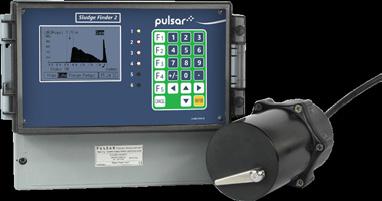



UTILITY • FEBRUARY 2021 WWW.UTILITYMAGAZINE.COM.AU 33
CYBER SECURITY Excellence in flow & level measurement.
SLUDGE FINDER 2
Self-cleaning and maintenance free
Automatic de-sludging
Continuous blanket level output for compliance and efficiency
Primary and secondary settlement tanks
DAF thickeners
Gravity thickeners
Stationary and traveling bridges
Improves Health and Safety compliance PULSARMEASUREMENT.COM For a Sludge Finder 2 demonstration, contact oceania@pulsarmeasurement.com
Sludge Interface Measurement •
•
•
•
•
•
•
•
REMOTE UNAUTHORISED ACCESS NOT A THREAT WHEN UTILISING A ONE-WAY NETWORK TO MONITOR WATER ASSETS
Concern regarding the potential vulnerability of utility and critical infrastructure to cyber attacks plays a significant role in smart technology adoption. When a field device can be contacted remotely, this opens the possibility that this same capability can be used for unauthorised access, and remote hacking becomes a real risk requiring careful consideration.

When investigating the use of one-way versus two-way radio technologies for monitoring water assets, in particular smart water meters, identifying system requirements and weighing up the risks can provide some insight into which network is best suited for the application.
Taggle Systems’ Byron Network is a one-way Low Power Wide Area Network (LPWAN). Endpoints/devices are simple by design, with the capability to only transmit data to a receiver/base station. They cannot receive commands or information back from the receivers. When these devices are built, they are configured to transmit encrypted data at particular intervals, hourly in most cases, and the receivers pick up these transmissions and forward them to the cloud via cellular or satellite networks.
For the purpose of collecting regular data from smart water meters over long periods of time, one-way communication is very well suited. There are three instances that often come up when considering if two-way communication is required: remote shut off or control of a valve, on-demand read and over-the-air firmware upgrade.
Having access to these additional features comes with vulnerability. If a device can be contacted remotely and shut off or upgraded, can every device on the network



be compromised during a cyber attack? While two-way technologies can implement strong encryption and access control techniques, this provides a significant management and technical overhead.
In the case of smart water meters deployed on every water connection, perhaps simple is best. One-way communication also has the added benefit of a longer battery life in the devices. The extra functions seen in two-way communication systems require more energy to perform, which in long-term projects plays a significant role in creating the business case.
There are, of course, applications where two-way radio is better suited, and the benefits of the different technologies need to be evaluated. Taggle is currently working on new products where two-way radio is incorporated to address these applications.
With regard to large-scale smart water metering, Taggle will continue to support a dedicated one-way platform, taking advantage of its reliability, range and scale. At the same time, the company will offer two-way communications platforms for higher order applications for which they are better suited.

UTILITY • FEBRUARY 2021 WWW.UTILITYMAGAZINE.COM.AU 34
CYBER SECURITY | Utility Partner Solutions
Contact Taggle for more information at www.taggle.com.au













100 YEARS EXPERIENCE 100 YEARS OF CERTAINTY
For over 100 years Steel Mains and its forerunners have manufactured Mild Steel Pipes. We have been involved with Australia’s largest water infrastructure projects. Over that time, we have continued to develop and improve the quality of our steel pipes offered, with the introduction of technologies like Sintakote® coating and Sintalock® and Sintajoint® Rubber Ring joint steel pipe. It is our history of development and service to the water industry that has allowed us to succeed in offering the market products of the highest quality with unique features that separates us from the competition. When investing in Mild Steel pipes, you can be certain in the knowledge that Sintakote Mild Steel pipe will provide a secure future for the service life of your asset, rated to at least 100 years. 100 years of certainty and experience is what makes Steel Mains Sintakote Steel pipe the ideal pipeline material for your next project.



An evolving ecosystem: YARRA VALLEY WATER’S AWARD-WINNING
CUSTOMER EXPERIENCE PRACTICE
In October 2020, Yarra Valley Water won Customer Experience (CX) Team of the Year at the Ashton Media CX Awards. The water utility was recognised for its ‘outside-in’ approach to identifying opportunities across the customer journey and delivering innovative solutions to address customers’ needs.
Yarra Valley Water said this was all made possible through the creation of the Customer Experience Division back in 2018.
The CX Practice works to understand customer needs, pain-points and expectations first and then how the broader business can address these, ensuring that ongoing improvement is maintained.
Yarra Valley Water Divisional Manager of Customer Experience, Dr Anna Lorenzetto, said that the utility recognised a need to create initiatives from a customer’s perspective, rather than based on what it thought was best.
“That’s the difference between an outside-in approach, where improvements are evidence based, and derived from customer’s expectations and needs, versus making decisions from an internal view without considering the people that we serve,” Dr Lorenzetto said.
“It’s an easy trap to fall into because you know your business so well, and that line between you and the customer can become blurred. You might think that you’re speaking for the customer, but unless you’ve engaged your customers to share their experiences and they have told you what it is that they want, expect or need, you can’t be in a position to make improvements that better their experiences.”
“Customers’ needs are also dynamic. They’re not static, and you constantly need to be checking in with people. And, customers come to every interaction with the memory of their other experiences.
“For instance, if a customer experiences airport check-in and has an amazing set of interactions, they come to subsequent interactions with that experience in the back of their mind. You’re not only constantly responding to the shifts in your customer base that result from simply being human, but you’re also responding to the shifts that result from customers’ other experiences that may happen in different sectors or geographies, or because of circumstances unrelated to your core business. Experience is always in flux, and you can never rest on your laurels.”
Dr Lorenzetto explained that Yarra Valley Water has what she refers to as a 360-degree CX Practice.
“We’re extremely fortunate to have CX measurement, qualitative and quantitative experience research, as well as user experience (UX) design and service design together in the one practice, there’s a real closeness between our CX
insights and our CX design team. This means that we can adopt an ecosystem, rather than a siloed view of customers’ experiences,” Dr Lorenzetto said.
“That ecosystem understanding is what allows us to think through what a seamless experience must be like to meet a customer’s needs. If you think of a customer journey, it appears linear and there definitely is a sequence to it, but there’s this whole ecosystem that is required to deliver it.
“One of the brilliant things about the way the practice is set up is that there’s a lot of crossover between the different functions in the Customer Experience Practice. They’re very connected to one another so that it’s very easy for a designer to say to the metrics and analytics manager, ‘can I have a look at that journey map and where all those pain points are happening – I just want to get a slightly different understanding of what’s going on’.
“It means my subject matter experts are all in the mix looking at that one experience, and they can feed off each other. If you don’t have those core CX functions together and they’re conceptually or physically separated, it’s difficult to achieve a seamless experience for customers.
“Some of my team are trained in complex systems theory, and care ethics. Others in psychology and anthropology. They look at a customer’s experience as more than a journey that moves from left to right on a piece of paper. Their mindset is different, and that’s what you need for digging deep into understanding human experience, and for creating tangible experiences that address customers’ needs.”
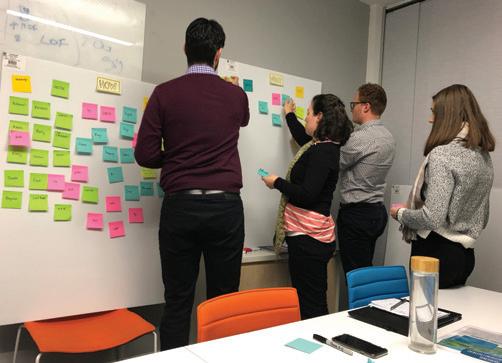
UTILITY • FEBRUARY 2021 WWW.UTILITYMAGAZINE.COM.AU 36 CUSTOMER EXPERIENCE
LIVING UP TO CUSTOMER EXPECTATIONS
When asked about the main issues that customers had raised, Dr Lorenzetto said that she would argue that all people have basic needs that they expect will be met during any interaction, and Yarra Valley Water customers were no different in this regard.
“For instance, everyone expects usability and accessibility in digital experiences. You expect that a process will be transparent. You expect that the way you’re communicated with will be clear. You expect things are going to be done in a timely manner and with ease. These are examples of some basics that people have come to expect in an interaction,” Dr Lorenzetto said.
“The challenge is to make sure that you never ever let those really basic expectations that people have of every interaction slip. The degree of timeliness might not be the same in different contexts, but it’s important to always deliver on customers’ minimum standards appropriate to the situation.
“If you’re able to consistently meet those basic expectations, then customers will cut you some slack when things go wrong – and things do go wrong. But if overall, you’ve always tried to ensure a positive experience, then when things go poorly, you fare better than if you’d been delivering consistently unsatisfactory experiences to people.”
The Customer Experience Practice maintains a culture of innovation and ongoing improvement by constantly tweaking and refining different systems and processes.
“We constantly make improvements. We have a continuous feedback loop between CX measurement and CX design, where the measurement function informs the design improvements that are made to a customer’s experience. The improved experience is then measured and so forth. We are constantly collecting feedback through this process, and our customers are the ultimate beneficiaries of this,” Dr Lorenzetto said.
“Our journey maps are living, breathing documents. One of the things that I was adamant about when we instigated the journey mapping program was that they would not become pretty artefacts that get done once, and are then never looked at again.
“We have over 100 journeys that we’ve identified. The journey maps are updated quarterly with satisfaction measures and scores, which means we’re always looking at the customers’ pulse.”
Dr Lorenzetto commented that there’s no idle hands in the Customer Experience Practice, with a number of initiatives either underway or in the pipeline.
“Our journey mapping program has compiled a customer and employee pain-point register, and this informs customer experience improvement initiatives. It’s a really well-known body of work in the business, and its practical application is appreciated and understood as well,” Dr Lorenzetto said.
“We have started work on the digital design system, and this will support a consistent visual experience of our brand across our digital channels.
“We have also commenced working on a set of CX principles that will be used when designing experiences. We’ve been waiting for the right time to develop these; now that we have a body of work behind us and have, as a CX Practice, really come to understand our customers we are ready to action this.”

A WORTHY WINNER
The Ashton Media CX Awards are one of Australia and New Zealand’s ultimate accolades in customer experience, and benchmark excellence and innovation within the region.
Yarra Valley Water Managing Director, Pat McCafferty, said that the organisation was honoured to be recognised at the awards.
“We’re incredibly thrilled to receive this award and even prouder that we have an ongoing system of continuous improvement that is customer-centric,” Mr McCafferty said.
“Our approach to improving customer experience is based on rigorous research, analysis and design to deliver a seamless experience for our customers.”
One of Yarra Valley Water’s CX initiatives includes its partnership with Snap, Send, Solve, which allows more customers to use their smartphone to report any leaks, bursts or spills.
The app enables Yarra Valley Water’s service response team and other service providers like Melbourne Water, or local councils, to see the problem first-hand and respond accordingly.
Yarra Valley Water customers can use Snap, Send, Solve by following these instructions:
• Download the app and sign up
• Snap: Take a photo of the incident, remembering to make sure you are in a safe spot – don’t “snap” if doing so puts you in harm’s way
• Send: The location and additional details are sent directly to Yarra Valley Water or other service providers or councils if the fault is theirs to fix
• Solve: The report will be reviewed and prioritised for action
Yarra Valley Water takes thousands of calls each year reporting emergencies and infrastructure issues across its vast network that serves over two million Victorians.
Yarra Valley Water General Manager of Distribution Services, Dona Tantirimudalige, said the new partnership helps customers to get in touch at any time during business hours to report their fault.
“Officially partnering with Snap, Send, Solve makes it easier for people to let us know quickly what’s happening in their local area. Receiving reliable, visual information allows us to respond and solve the problem,” Ms Tantirimudalige said.
Ms Tantirimudalige commented that Snap, Send, Solve is also advantageous in helping save water due to leaks being reported earlier.
“If our customers find it easy to report even the smallest of issues and make good habits of doing so, over time we will collectively save more water, which is so important.”
UTILITY • FEBRUARY 2021 WWW.UTILITYMAGAZINE.COM.AU 37 CUSTOMER EXPERIENCE
BUY ONCE, BUY RIGHT WITH VEGA
Flexibility, versatility and customisation go a long way in any manufacturing venture. If a company is agile enough to handle the changing needs of its clients, that company will stay ahead of more rigid competitors.
In the words of VEGA Australia Managing Director, John Leadbetter, “There is no one instrument that does it all.” This tenet is at the heart of VEGA Australia’s approach to business. Mr Leadbetter, a 40-year industry veteran, firmly believes that a company has to have different technologies to suit different applications in a variety of locations.
Since 1984, VEGA Australia has provided instrumentation and measurement technology to businesses in Australia and around the world. Mr Leadbetter says that a global clientele demands a scalable product range.
“We’re dealing with a number of industries globally, and there are a variety of applications our solutions have to suit,” Mr Leadbetter said.
“There’s no one solution to do everything, so you have different technologies to suit the variety of needs.”
Right now, many within the industry are under increased time and financial constraints. For Mr Leadbetter, this means no two customers are ever in the same boat – and that’s why a blanket approach doesn’t work.
“What we strive to do is make sure we solve the customer’s problem, whatever that may be, so that the next time they have a problem, they come back to us,” Mr Leadbetter said.
“We want repeat business, and you only get that by working closely with a customer to meet their specific needs.”
The VEGA approach, according to Mr Leadbetter, is to sit down with a customer, understand exactly what they’re trying to achieve, and then come up with the perfect bespoke solution.
“We like to offer alternatives. We can say here’s solution A, or solution B. They’ll both do the job, but each have advantages and disadvantages. We let the client decide.”
Mr Leadbetter cites as an example the case of a mining company that contacted VEGA for a method of measuring levels of ore in its plant.

“We went through the process and gave them options, but then they told us they’d accepted different technology from another company,” Mr Leadbetter said.
“So we kept in touch with them, and three months later they came back to us and said the other company’s technology hadn’t worked.”
“They chose the other technology based on price, but their costs doubled because they bought twice.”
Mr Leadbetter explained that VEGA makes a point of discussing references and how the VEGA process works.
“If we come across an application we have no firsthand experience with, we ask our international partners. Somewhere in the world, someone may have already used it and can give us a reference,” Mr Leadbetter said.
“And we can then pass it on to the customer. If you go the extra yard, you get another happy customer.”
It’s become more evident in the last five years that businesses tend to make decisions on a product based on its long-term benefits rather than price considerations, a change Mr Leadbetter says is overdue.
“You want peace of mind, and you should basically get a lifetime of good operation at no cost,” Mr Leadbetter said.
“If VEGA offers you a unit for $5,000 and someone else offers you a unit for $2,000, you need to look at the cost of ownership rather than the cost of purchase.”
UTILITY • FEBRUARY 2021 WWW.UTILITYMAGAZINE.COM.AU 38
CUSTOMER EXPERIENCE | Utility Partner Solutions

Individually selectable: 256 colours Measurement in progress Sensor switching Process malfunction We bring colour into view! Compact capacitive level switches with 360° custom-colour status display www.vega.com/vegapoint
Adjustment via smartphone
243 VEGAPOINT 21 G½" Hygienic adapter system 15
Compact design
$
cm
Combining UTILITY HERITAGE AND FUTURE-FOCUSED SOLUTIONS
Whether publicly or privately owned, utilities operate within a strict legislative and regulatory framework. Some utilities and their respective parent companies, have recognised the value of venturing into unregulated business areas – such as helping consumers monitor energy consumption, undertaking compliance auditing, providing metering and connection services, and offering engineering and construction services to external clients – as part of efforts to diversify their portfolios and develop innovative products and services that benefit both their customers and the wider industry.
AUSTRALIAN WATER QUALITY CENTRE
The Australian Water Quality Centre (AWQC) plays a critical role in the supply of safe, reliable water and wastewater services to the individuals and communities who rely on them.
Established nearly 90 years ago by South Australian water utility SA Water, AWQC was created to monitor the effectiveness of the protective barriers that are designed to prevent the entry and transmission of contaminants into drinking water systems or their discharge into the environment in wastewater.
Over this time, AWQC has supported SA Water to manage a broad range of water quality and resource activities and challenges. These challenges have led to the development of a comprehensive range of water quality testing, research and management services – tailored to all aspects of the water cycle from catchment to tap, to wastewater, reuse and alternative sources.
Today, AWQC serves a broad range of customers in Australia and around the world, including the water and food and beverage industries, local government, health and environmental regulators, and consultants to many of these groups.
As an independent business unit within SA Water, AWQC has a specific water industry focus and is dedicated to safeguarding public health and the environment.
Offering more than just a traditional laboratory testing service, AWQC provides its customers with a range of analytical, research and consultancy services associated with the chemistry, microbiology, biology and ecology of waters, wastewater, sediment and sludge.
AWQC maintains its accreditation from the National Association of Testing Authorities Australia (NATA) for a wide variety of chemical, microbiological and biological tests, including sample collection and field analyses.
Routine and emergency laboratory testing and analysis services are delivered by two state-of-the-art laboratories in Melbourne and Adelaide, enabled by well-established business management systems and continuous improvement mindset.
Furthermore, AWQC’s Exemplar Global qualified Drinking Water Quality Management System Level 1 auditors provide other water utilities with audits of their Drinking Water Quality Management Plans.
AWQC’s passionate water quality testing, research and consultancy teams can assess the effectiveness of various treatment options, and are often engaged by other water utilities to help them to respond to major water quality incidents, water quality challenges such as algal management and microbiological contamination, as well as assist with disinfection and water treatment systems, and water treatment plant design and process optimisation.
The value of this critical service most notably came to the fore in August 2020, after severe storms caused a loss of power to Melbourne Water’s Silvan Reservoir – one of the city’s main water supplies – resulting in potentially untreated water entering the drinking water supply system. A public health notice was quickly issued, alerting around 200,000 residents and advising them to boil their tap water before use.
AWQC’s field and laboratory teams in Melbourne were immediately tasked with supporting Melbourne Water and Yarra Valley Water with around-the-clock rapid water quality sampling and testing, all while adhering to strict COVID-19 measures in place at the time. It was these test results that gave local health authorities confidence to lift the boil water notice several days later.
One of AWQC’s key areas of work with overseas customers is product testing, for things like tapware and other plumbing fixtures – basically anything that would
UTILITY • FEBRUARY 2021 WWW.UTILITYMAGAZINE.COM.AU 40
CUSTOMER EXPERIENCE
come in contact with drinking water. This is particularly important for companies wanting to introduce products into the Australian market, as they have to adhere to national standards.
As a leader in the field of microbiological testing and analysis, AWQC has an unrivalled track record of developing and validating more effective testing methods for the detection of waterborne pathogens in the interests of protecting public health.
It has gained international acclaim for the use of next-generation DNA sequencing test methods for the rapid detection of waterborne microbial pathogens, algal toxin genes and faecal source tracking to optimise water quality management.
Using advanced robotic equipment, AWQC is able to take a simple water sample and determine exactly what organisms, including vertebrates, native fish and bacteria, have been in contact with that water source. Importantly, the benefits can be realised without the need for any traditional microscopy, culture techniques, or complex and time-consuming field sampling.
The most unique pieces of work AWQC has used this technology for include partnering with environmental groups to search for the notoriously shy platypus and presumedextinct thylacine (Tasmanian tiger).
AWQC also has ongoing research-based collaborations with several overseas universities and water industry members, mainly in the Asia Pacific region. By working with groups like these, AWQC's scientists and researchers have been able to build up their expertise and learn about improved ways of dealing with water and wastewater treatment challenges, environmental management and use of emerging and innovative technology.
More recently, working together with SA Health, AWQC’s expert scientists are playing a pivotal role in South Australia’s fight against COVID-19, through an ongoing program monitoring for traces of the virus in the state’s wastewater.
Supplementing the state’s existing patient testing regime with sewage surveillance provides a non-invasive mechanism to build a wider snapshot of the virus’ transmission within the community, helping local public health officers better understand the spread and identify areas where it may be emerging.
In terms of future plans, AWQC began operating from its Melbourne laboratory at the Royal Melbourne Hospital’s Centre for Medical Research in 2016, and by early 2021, it will have relocated to larger and more fit-for-purpose premises in Alphington, to support continued expansion of services to the Victorian water industry.
For AWQC, one of the reasons behind opening a lab in Melbourne was to position itself as a provider of rapid and responsive sampling and testing to existing and prospective clients in Victoria who were wanting a locally-based service.
Over the past four or so years, AWQC has begun contracts for the supply of analytical laboratory and sampling services to Victorian water utilities and providers, Yarra Valley Water, Melbourne Water and Wannon Water, as well as TasWater in Tasmania.
The organisation is looking forward to continuing these partnerships, and hopes to expand and share its expertise with more water industry groups around Australia to satisfy ever-increasing market demand for its testing, research and consultancy services. With an increasing workload, AWQC also anticipates growing its current total workforce of 130, as well as its support of emerging scientists, through hands-on training offered to students at several universities in Adelaide and Melbourne.
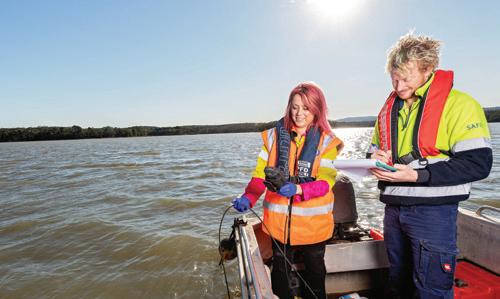

OVIDA
Ovida was launched in 2017 to cater to the rapidly evolving energy needs of business customers, large energy users and electricity generators across the electricity supply chain in Australia.
UTILITY • FEBRUARY 2021 WWW.UTILITYMAGAZINE.COM.AU 41
CUSTOMER EXPERIENCE
CUSTOMER EXPERIENCE
Ovida was established to provide a service to the market by building and operating large energy assets, with ongoing fully integrated asset management capabilities that leverage its core expertise in operations and maintenance.
The organisation stays true to these roots as it knows it can provide sustainable energy solutions to the market backed by its shareholders, who have invested over $11 billion in critical energy infrastructure and assets across Australia.
Ovida has a national footprint and works closely and collaboratively with its customers to understand their needs and develop tailored, affordable, reliable and sustainable solutions that work for them.
Ovida delivers Energy (and electrical infrastructure) as-a-Service, ensuring it provides customers with solutions that cover everything from capital costs and installation, to ongoing maintenance and asset management, providing long-term benefits while reducing operational risks.
Martin Becker, Ovida General Manager, said, “We are aligned with our customers every step of the way and work with them to ensure their energy solutions are optimised and we add value to their business.”
Ovida has installed a significant portfolio of commercialscale solar systems across Australia, successfully commissioned a shared renewable energy solution for a multi-tenant residential complex that is the first of its kind in Australia, and installed and currently manages a portfolio of grid connection assets and distributed energy resources (DER) for large critical infrastructure customers.
The organisation has the ability to tailor solutions to meet its customers’ individual energy requirements, including energy storage solutions, re-deployable solar options to provide flexibility, and standalone power systems as well as the design, development and delivery of bespoke hybrid microgrids and private energy infrastructure, whether that be at a transmission or distribution level.
Ovida’s complete end-to-end offering and flexibility ensures its customers are always provided with the right solution depending on their requirements, allowing the organisation to push the envelope when it comes to providing its customers with innovative solutions that meet their individual energy challenges.
It works with customers to help them achieve their own renewable energy and decarbonisation ambitions and that of their customers and the communities in which they serve, offering absolute safety, asset performance visibility and reliability guarantees.
Moving to renewables is a key ambition for many of Ovida’s customers – of course the economics and environmental benefits are both key drivers and that is why it offers to own and operate renewable energy assets and private energy infrastructure to ensure its customers are able to free up capital and focus on their core business.
Customers can integrate with existing generation sources to progressively decarbonise their energy, with Ovida’s approach ensuring its customers are able to realise their renewable energy ambitions at a competitive market rate.
For renewables generators, Ovida provides tailored, and cost-effective, long-term solutions that provide an alternative to the network operators. It works collaboratively with
customers to develop competitive solutions that seek to reduce the cost of connecting to the grid, and its value proposition is centred around its expertise in managing large energy assets and infrastructure – de-risking any exposure for its customers.
Ovida’s dedicated business energy solutions team has combined experience to cover developing innovative technology solutions and bespoke design services. It is one of only a few energy companies in Australia that has ISO 55001 and 27001 accreditations for asset management and information management systems around SCADA and information security.
As part of its future plans, the organisation intends to provide the market with alternative, reliable and competitive solutions in contrast to incumbents who may be slower to move with technology advancements or who are unwilling to listen to their customers’ needs.
Ovida welcomes a challenge and is investing in its pursuit to build, own and maintain renewable energy assets and private energy infrastructure for its customers so that they can focus on their core business.
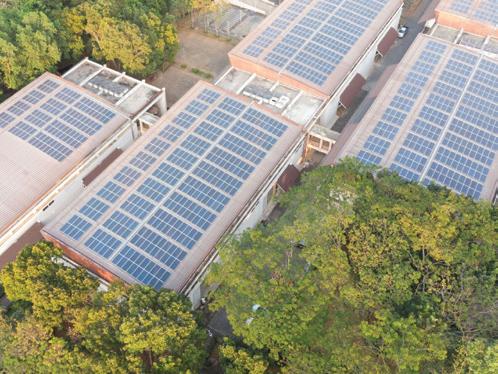
IOTA
South East Water created Iota as a way to capture innovation and develop it into progressive and sustainable solutions for the industry. The utility is always thinking about the future and new ways it can bring value to its customers, community and the environment.
One of the ways South East Water does this is by developing new technologies that enable it to create a better experience for its customers, manage its networks, protect the environment and save our most precious resource – water.
Through Iota, South East Water has been able to expand the scope of business activities, refine its approach and pace around product development, build solutions for the industry, and ultimately share the Intellectual Property (IP) it has developed with the broader water industry, for a fair return.
The benefit of having Iota as a separate commercial business is that the organisation is able to share its technology and innovation beyond its borders, supporting other utilities both here in Australia and overseas to create social and environmental impact for their customers.
For example, some of its solutions, such as OneBox®, have the potential to be adopted and developed into off-grid,
UTILITY • FEBRUARY 2021 WWW.UTILITYMAGAZINE.COM.AU 42
sustainable sanitation solutions in informal settlements and/ or developing countries.
An agile commercial subsidiary is not only easier for other utilities and partners to engage with, but it also creates a strong need for robust product development practices and commercial-grade solutions.
Iota commercialises IP and solutions that have been developed and proven within the South East Water network. Some of these solutions include:
OneBox®
OneBox® enables utilities to remotely monitor and control low-pressure sewer systems in near real time, supporting utilities to fix any issues or prevent potential sewer spills before customers even know there’s an issue. OneBox® is the brains behind South East Water’s Peninsula ECO and Aquarevo projects.
Lentic
Lentic is an end-to-end IoT platform that is ‘fit for water’. Lentic is designed to collect, visualise and analyse information from millions of in-field devices, enabling a shift from reactive to predictive operations, asset management and customer engagement. Lentic is device and telecommunication provider agnostic, providing the flexibility utilities need, now and into the future. Out of the box connectors make API-based integration with any third-party systems easier than ever.
Digital meters
Many utilities are on a digital transformation journey, and making the switch to digital water meters is a major part of this. South East Water has co-developed NB-IoT meters, which are designed to measure flow, temperature, pressure and vibration. This means that not only will the meters help customers to detect leaks on their property, but will also enable the utility to find and fix leaks in the network before they turn into big bursts which disrupt customers and the community.
Digital meter trials in the South East Water network have detected water leaks in up to ten per cent of residential properties. Between May and October 2020, the technology has allowed South East Water to notify 51 customers about potential leaks in their homes, collectively saving those customers close to $20,000 and 4.6 million litres of water –enough to fill 46,000 bathtubs.
footprint®
footprint is a smart metering platform that is supporting businesses to track water usage and any irregular usage patterns to help them find and fix leaks, saving both money and water.
Daniel Sullivan, CEO of Iota, said, “The water industry has more in common than not, and Iota is in a unique position to facilitate a shared approach to solving some of our problems. We’re partnering with utilities to share solutions to these key industry challenges.”
Some examples of how Iota is sharing these solutions include:
Iota is working with Christchurch City Council where the OneBox® solution has been mandated for most new developments. The significant damage to the city in the wake of the 2011 earthquakes meant that budget for new infrastructure was limited, and in some areas there were poor ground conditions and high liquefaction rates, which meant a gravity sewer was not suitable.
The installation of OneBox® units has significantly reduced the need for wastewater infrastructure, resulting in the equivalent savings of NZ $8 million for the city. Seven hundred OneBox® units are in place today and a further 10,000 will be installed at houses and some commercial premises in greenfield sites and other areas where there are wastewater capacity constraints.
Iota is also partnering with Flow Systems, a multi-utility provider, to roll out thousands of OneBox® units in multiple developments across New South Wales. Flow Systems is a progressive utility, who Iota is supporting to create a circular wastewater network.
Iota is supporting City West Water’s digital meter trial in Melbourne, providing digital meters transmitting data over the NB-IoT network into Iota’s Lentic IoT Platform.
“Iota is in a unique position to be a genuine industry partner, sharing IP, insights and lessons learned from South East Water to support others on their journey towards more sophisticated monitoring and control of water and wastewater networks,” Mr Sullivan said.
Iota is continuously expanding its portfolio with new IP and solutions developed and proven at South East Water, and will continue to seek partnerships to commercialise these at scale.

ECHO GROUP
In August 2020, EnergyAustralia, one of Australia’s leading energy retailers, announced plans to complete its acquisition of solar and LED lighting company, Echo Group. Echo Group will continue to operate under local brand offerings that many Australians have come to know and trust: ‘Cherry Energy Solutions’, ‘Eko Energy’ and ‘Littil LED’.
Vaughan Furniss, EnergyAustralia Head of Commercial and Industrial, said that EnergyAustralia is committed to bringing its customers the latest in energy efficiency solutions at an affordable price.
“Our unique partnership with Echo Group will strengthen our offering and enable us to continue to deliver on this at scale,” Mr Furniss said.
“Echo Group has a solid reputation for great service and technical advice. They have worked with many of Australia’s top ASX-listed companies in new and retrofit buildings and
UTILITY • FEBRUARY 2021 WWW.UTILITYMAGAZINE.COM.AU 43
CUSTOMER EXPERIENCE
have been regularly recognised by the industry for excellence and innovation.
“As an energy retailer, combining our resources with an innovative company like Echo Group has numerous benefits – the main one being that we will have increased capability to offer energy efficiency advice and solutions to our customers, be it residential, business or industrial. This ultimately saves them energy and dollars, while reducing their carbon emissions.”
Mr Furniss explained that it is also beneficial for EnergyAustralia to have access to an independent operation, where it can trial next-generation products and services.
EnergyAustralia is currently working on two major collaborations where Echo is fostering energy partnerships for some of Australia’s most recognisable entities.
One of these projects is the installation of a 99kW solar panel system at the Melbourne Cricket Ground (MCG). While this won’t meet the ground’s entire electricity requirements (anyone who has been to the MCG will know how big it is!), the electricity generated from these solar panels will power the MCG’s wastewater treatment facility.
This will allow grey water at the site to be recycled using renewable energy, and the resulting ‘greener-than-green’ water will be used for the toilets and various other facilities that require water around the MCG.
Echo Group is also supporting EnergyAustralia in its work with McDonald’s to help the fast food giant meet its corporate sustainability mandate for all new Australian sites to operate on 100 per cent renewable energy.
“EnergyAustralia has created a bundled solution for McDonald’s wherein Echo install solar for McDonald's on sites of their choosing, and EnergyAustralia will continue to provide them with the balance of meter (that is to say, any further electricity requirements sourced from the grid will be green electricity from EnergyAustralia) at no additional cost,” Mr Furniss said.
“This is part of a bespoke offer from EnergyAustralia to bundle solar, renewable grid electricity, plus an exclusive residential package available to 82,000 McDonald's employees across the country. They will have the opportunity to join EnergyAustralia as a residential customer with special rates for their electricity and gas at home, which includes the option to go neutral at no extra cost.
“In both cases, we’re working together with these two organisations to understand their unique challenges and sustainability goals, and deliver tailored solutions that work for them.”
Mr Furniss said that there's a lot of confusion in the solar and LED spaces due to the broad range of price points, and Echo Group is working to overcome this challenge.
“A customer can end up with wildly varying quotes for a solar installation on the same sized roof, which understandably leads to questions about the quality of the underlying products and install,” Mr Furniss said.
“The value we provide is making energy simpler for customers, and that's where trust becomes very important. Transparent communication is the bedrock of how Echo Group does business, and how it has earned the reputation as a trusted energy and sustainability partner among their customers.
“Health and safety is also becoming a major concern for the industry and again a challenge where Echo is leading the way, with a solid safety record and safety measures built into the design and installation of every system.
“As this grows more important in the space, we may potentially see a shift in the regulatory frameworks and Echo will be on the front foot, as it’s already a key part of its operations.
“This industry is full of challenges but it’s also full of unexpected opportunities, so our aim is to retain Echo’s agility and ability to respond to the market as it continues to evolve.”
EnergyAustralia is working towards Echo Group’s next stage of growth by making new and emerging technologies available to its customers, including storage and demand management options, to help get them on the road to long-term independence and control of their energy usage and costs.
Echo has over 70 employees and in-house solar and LED installation teams based in Victoria, New South Wales and Queensland.
“While this will continue to operate separately, we are excited to apply the team’s passion, expertise and knowledge to the wider offerings of EnergyAustralia,” Mr Furniss said.
“Being a subsidiary of EnergyAustralia means the Echo team has access to career development opportunities. Retaining that talent is key for us, and key to the future success of Echo as a whole.
“While the energy space continues to evolve and new solutions emerge, we see this as a transformative time, which will allow us to make energy-saving and reliabilityboosting technologies available to more businesses and households across Australia.”
MONDO
Many of Mondo’s products and services have a wellestablished reputation in the industry. In December 2018, it was announced that AusNet Services’ commercial businesses – Select Solutions, Geomatic Technologies and Mondo Power – would come together to operate as Mondo.
For years, Select Solutions and Geomatic Technologies were leaders in metering, mobile and spatial technology solutions for utilities. Mondo Power was formed in 2017 and focused on distributed energy offerings such as mini-grids, virtual power plants and energy management for commercial and community partners.
These services continue under the Mondo brand, and this unique combination of experience and industry knowledge is now leading the way towards a safer, more reliable and sustainable energy future for customers.
The rapid changes seen in the energy sector have brought about new technologies and future markets that enable Mondo to assist its customers with solutions that better serve their needs today, as well as position them to take advantage of emerging opportunities.
According to Chad Hymas, EGM Growth and Future Networks at AusNet Services, global trends are showing an increase in the mix of regulated and commercial energy businesses.
UTILITY • FEBRUARY 2021 WWW.UTILITYMAGAZINE.COM.AU 44
CUSTOMER EXPERIENCE
“This is because energy companies are well placed to understand emerging technologies and how they are impacting the future of energy. This understanding creates solutions for customers to help them make better energy choices.
“We’re solving problems that are unique to Australia, using our own technology, and partnering with key industry bodies to ensure the future is brighter for everyone involved. To be successful, we are evolving new ways of thinking, engaging, listening and delivering tangible value for our customers.”
Mondo provides a range of energy and infrastructure products and services to business, government, communities and households. These services range from designing, building, owning, and operating wind farm connection assets, high-voltage and low-voltage metering services, high-voltage asset maintenance, and pioneering new markets and energy management technology to support Australia’s transition to a sustainable energy future.
Over the past three years Mondo has:
• Connected 1600MW of renewable energy into the NEM by building the connection assets for Australia’s largest wind farm – Stockyard Hill – and other wind farm projects such as Murra Warra, Bulgana, Crowlands and Dundonnell
• Won the 2019 Clean Energy Council Award for Community Engagement for its work in Yackandandah to develop a mini-grid in the Victorian town that would enable it to source 100 per cent of its electricity from renewables. The mini-grid has now generated more than 3GWh of locally-produced renewable energy, saving the community nearly $500,000 in energy costs
• Delivered Victoria’s first grid-connected battery, the 30MW Ballarat Energy Storage System, in partnership with EnergyAustralia, AusNet Services, DownerSpotless, Fluence, Australian Renewable Energy Agency (ARENA) and the Victorian Government
• Commenced the Western Victoria Transmission Network Project. This project is of national significance and will involve Mondo building, owning and operating a new terminal station and approximately 190km of transmission line. This is a critical piece of infrastructure that will unlock the renewable energy resources in Victoria’s west and is the biggest transmission network augmentation the state has undertaken in the last 40 years
• Mondo is delivering the Deakin University smart energy microgrid project, a $30 million initiative at Deakin’s Waurn Ponds campus to establish an industrial-scale smart microgrid energy system, and integrated research and education platform. The smart microgrid will supply around 54 per cent of the campus’ current power consumption via a 7MW solar farm, 0.25MW rooftop solar and 1MW battery storage capacity
• As a proud partner of the Victorian Schools Water Efficiency Program (SWEP), Mondo installs water meter data loggers and is responsible for data delivery to the SWEP platform. So far, this program has saved schools 8.9 billion litres of water which would have cost them more than $28.2 million in water and wastewater charges
• Mondo is helping to deliver the Ausgrid Digitalisation Program, and has captured over 100,000 network spans (3,800km) via its AIMS3D LiDAR and photo imagery system for Ausgrid over the past 12 months. The span data is processed and hosted in Mondo’s cloud-based platform to deliver a 3D digital desktop view of the network, enabling vegetation analysis, asset identification and network design without the necessity of a field visit
A key focus for Mondo is developing community energy hubs, supported by in-house technology, that empower homes and businesses to generate, manage, store and share energy. Mondo’s energy hub projects aim to help people understand their energy options and their eligibility for government rebates while offering smart solar and battery systems from a reputable, trusted source. Developed in collaboration with local councils, businesses, community groups and government agencies, these pioneering initiatives have far-reaching benefits for a region’s economy, employment and community, as well as the environment.
Overlaying this community-based focus is a requirement to safely and reliably aid the growing adoption of household and business solar. This requires groundbreaking pilot projects such as Project EDGE, a project which seeks to overcome a complex challenge – how to orchestrate Australia's growing distributed energy resources (DER) (like solar and battery) to benefit both DER asset owners and the network. Such projects are being delivered in partnership with key industry players AEMO and ARENA and are critical for the future reliability of the electricity network.

In the commercial energy solution space, Mondo is implementing a range of behind-the-meter energy solutions for the automotive, brewing, winemaking and education sectors, as well as ongoing collaboration work setting up pilots with water and wastewater utilities and telephone companies.
Mondo intends to invest in future growth and innovation, and play a key role in the creation of an efficient, secure, sustainable and integrated energy future across Australia. It sees three key areas driving these growth opportunities: decarbonisation, decentralisation and digitisation of the energy system.
45
EXPERIENCE
CUSTOMER
BUILDING STRONG RELATIONSHIPS THROUGH DATA AND CONSUMER INTELLIGENCE
Industry insights communicate debates on the reshaping of the utility sector, describing changes which will make the sector more different, challenging and exciting than ever before. It looks like the new educated customer and global trends will play a big part.
LEARNING ABOUT YOUR CUSTOMER’S LIFESTYLE
With a high level of confidence, some market players are being described as enablers – brands that will move from a narrow service offering to a broad range of products, with multiple services bundled.
Research also notes that current pricing based on no energy management incentives will switch to services and solutions being in line with customers' values and that the customer relationship will change from reactive to proactive, with the emphasis on agility and responsiveness.
The term enabler can also refer to a lifestyle enabler according to other subject matter experts. It looks like enablers with the most innovative product and customer-centric mindset will lead the change from the supplier side.
The customer's mindset might change from being uninterested in the utility sector to being highly informed, looking for options that will complement their own specific energy needs.
OUTSTANDING CONNECTION WITH THE CUSTOMER
This significant and expected change will provide even more freedom of choice as well as technological capabilities for consumers to manage their spend.
To be able to partner with this new customer (yes, partnering might be the best word to describe this new relationship), this new lifestyle enabler will have to know them better to be able to develop creative business strategies and product offerings.
Partnering will mean understanding the lifestyle of the customer, and their needs and preferred interaction channels. How can utilities develop this excellent customer understanding and create business value from collected and created data, which will be one of the critical drivers of the change?
ACCELEON CUSTOMER CLOUD
Besides fast and straightforward search information, such as details of where the customer lives now or how many times they have changed addresses, Acceleon Customer Cloud can deliver a wealth of secondary information.
Consumer type search features
• Fuzzy name searching which handles misspelled names or aliases
• Over 300 million residential records, including 20+ years of historical data and 25 million current records
• Email list validation option
Business searches have
• Match logic which determines whether two business names are the same
• 30,000 telephone directory updates every day of newly-listed or disconnected numbers
• Search across our exclusive Classified Business Directory with over three million current and historical records of company addresses
• ASIC-approved information and nine years of current and historical ABR data
Data enhancement
• Proven database segmentation schemes
• Deep geospatial data science expertise
• Industry-leading geo-media targeting solutions
GeoSmart by RDA Research is a proven and powerful segmentation that assigns all Australian consumers and households to one of 55 segments within eleven groups. GeoSmart has been built to maximise differences in socioeconomic status, wallet size, spending patterns, family mix, media consumption and behavioural response.
HOW TO MANAGE THESE LARGE POOLS OF DATA OR INTEGRATE THEM WITH YOUR SYSTEMS?
The API integration is an advanced and customised version of integrating Acceleon Customer Cloud into your systems.
Acceleon's technology offers two types of APIs, standardised for customers that have the knowledge and resources to implement the process, and custom APIs where we scope the problem and build a custom API to integrate directly into your systems, removing the need for manual intervention.
Besides the best quality data, Acceleon's platform delivers trust, reliability and the industry gold standard for compliance in the Australian market, allowing our clients to focus on data benefits and turning customer relationships into partnerships. References:

UTILITY • FEBRUARY 2021 WWW.UTILITYMAGAZINE.COM.AU 46 CUSTOMER EXPERIENCE | Utility Partner Solutions
| Utility
Accenture | The Balance of Power: Why Australian Utilities Need to Defend, Delight and Disrupt.
PwC
of the future


WESTERN SYDNEY TO COOL Green infrastructure
UTILITY • FEBRUARY 2021 WWW.UTILITYMAGAZINE.COM.AU 48
SYDNEY WATER

The hottest and driest part of Greater Sydney will be smarter, cooler and greener under a new approach to planning and development led by Sydney Water.
The Western Parkland City, the biggest and most ambitious city build project in Australian history, will be a future-focused smart city built from the ground up. With 1.5 million people expected to move west of Parramatta by 2056, the Parkland City is set to become an economic powerhouse, a hub that integrates industry with community.
This burgeoning area of Greater Sydney will see the development of new neighbourhoods, complementing the nearby established centres of Liverpool, Penrith and Campbelltown. These areas are among the hottest and driest parts of Sydney and building cool, green and resilient neighbourhoods requires a new approach to managing water.
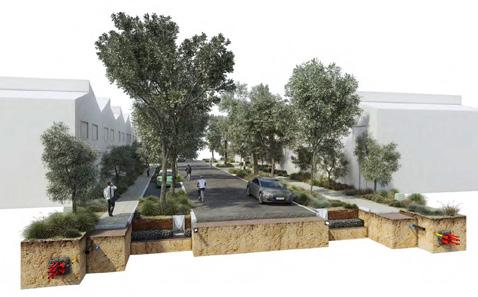
WIANAMATTA URBAN TYPOLOGIES AND STORMWATER MANAGEMENT REPORT
Sydney Water, in partnership with leading architects, engineers and urban designers, is testing an innovative new approach that integrates urban design, planning and sustainable stormwater management, with the aim of holding as much water within the urban footprint as possible. This approach will provide effective drainage and flood mitigation, as well as address broader objectives like urban cooling, greening, environment protection and recreation.
The smart planning techniques outlined in the Urban Typologies and Stormwater Management report will guide urban development in Western Sydney, ultimately reducing
temperatures by 4.6 degrees. The report will help influence the design of buildings, open spaces, streetscapes and green corridors to deliver a true Parkland City.
Cooling actions such as permeable surfaces that allow for natural infiltration of water; using tanks, wetlands and green roofs for holding and treating water; and larger scale stormwater harvesting schemes built into the precinct will repurpose large volumes of rainwater and stormwater for irrigation, water in the landscape or agricultural uses.
An abundance of street trees will create a natural canopy in the Parkland City. A ‘Wianamatta street tree’, designed specifically for Western Sydney, will be passively irrigated through the street stormwater drainage system, capturing and reusing stormwater and contributing to the health and longevity of street trees under hot, dry conditions.
Modelling of these cooling actions shows the number of extreme, very strong and strong heat-stress days per summer decreases dramatically from 47 to 19 days.
CASE STUDY PRECINCTS
To explore the extent to which the urban environment can retain stormwater, a series of urban typologies were developed depicting roads, open space, subdivision patterns and built form at a block scale. The typologies cover a range of commercial, industrial and residential developments and are intended to be used as tools in the strategic planning of Western Parkland City.
To determine the effectiveness of integrated urban form and stormwater design, 3D models of two case study precincts were developed. Performance was measured and compared with a business-as-usual approach. The key outcomes of the integrated design approach include:
• Surplus run-off reduced by some 75 per cent
• Open space increased by between eight-ten per cent
• Three times more canopy cover
• Potential reduction of volume of stormwater detention in basins
• Doubling of days with no thermal heat stress (2055)
• Reduction of four-five degrees in maximum temperature on an extreme heat day (2055)
49 UTILITY • FEBRUARY 2021 WWW.UTILITYMAGAZINE.COM.AU
Urban Typologies and Stormwater Management – achieving a cool, green, liveable Western Parkland City Wianamatta
artist impression, Bligh Tanner (2020)
SYDNEY WATER
Street Trees



THE CONCEPT RESIDENTIAL MASTER PLAN SETS OUT A ROBUST FRAMEWORK FOR A NEW RESIDENTIAL PRECINCT, WHICH PLACES EMPHASIS ON PROVIDING WALKABLE CONNECTIONS TO THE EDGES OF THE CREEK WHICH WILL BECOME VALUABLE PLACES FOR RECREATION IN THE FUTURE.
WATER, THE HEART OF THE CITY
The NSW Government’s vision of A Metropolis of Three Cities – Eastern Harbour, Central River and Western Parkland – puts water at the core of the identity of each city. The Eastern City boasts Sydney Harbour, the Central City has Parramatta River at its heart, and the Parkland City has Wianamatta-South Creek and its waterways as its central defining feature.
Unlike the ever-present open water of the Eastern and Central cities, water in the Parkland City is seasonal. Wianamatta – a Dharug name meaning ‘mother’s place’ or ‘mother’s creek’ – is the longest freshwater, ephemeral waterway in Sydney. Its creek beds are sometimes dry, with water ponding in subtle depressions and pools. Agricultural activity in the area has left a legacy of thousands of dams that provide a more permanent sense of water in the landscape.
THE CHALLENGE OF STORMWATER RUN-OFF
The unique characteristics of Wianamatta-South Creek and its waterways makes them vulnerable to the impacts of urbanisation. Excess stormwater is a key challenge for urban planning in this environment, with development and urbanisation expected to increase the volume of run-off reaching the waterways by up to six times.
The traditional approach drains excess stormwater from the urban environment as quickly as possible to protect health and safety, and mitigate potential flooding of buildings and infrastructure. This is usually done by directing stormwater through engineered pipes and channels into local waterways. Adapting this approach in the Parkland City would be problematic, leading to the degradation and decline of the Wianamatta waterway systems.
The approach trialled by Sydney Water and its team of experts will hold enough stormwater within the urban environment, ensuring the sustainability of Wianamatta-South Creek as the catchment is urbanised. Importantly, the innovative approach will preserve the values that are central to the identity of the future Parkland City.
To view the Urban Typologies and Stormwater Management report, visit: https://www.sydneywater. com.au/web/groups/publicwebcontent/documents/ document/zgrf/mjmy/~edisp/dd_232132.pdf
UTILITY • FEBRUARY 2021 WWW.UTILITYMAGAZINE.COM.AU 50 SYDNEY WATER 1:100 Flood Level Riparian Corridor Difference in maximum temperature between ‘Business as Usual’ and Masterplanned precincts over a 24hr period. Source: Mosaic Insights <-10°C -7.5°C -5°C -2.5°C >0°C Connection across flood corridor Buildings take advantage of high amenity and outlook offered by the riparian zone School with adjoining open space Recreational trail/ shareway/cycle path Light Rail Local recreation and play Existing farm dam Local recreation and play 32% Permeability (incl. streets) [Precinct scale] 50% Permeability (excl. streets) [Precinct scale] 1.09ML/Ha/Yr Surplus runoff aim [Precinct scale] 44% Canopy cover [Precinct scale] Sub-Arterial Road




UTILITY • FEBRUARY 2021 WWW.UTILITYMAGAZINE.COM.AU 51 SYDNEY WATER 1:100 Flood Level Riparian Corridor Difference in maximum temperature between ‘Business as Usual’ and Masterplanned precincts over a 24hr period. Source: Mosaic Insights <-10°C -7.5°C -5°C -2.5°C >0°C Recreational trail/ shareway/cycle path Connection across floor corridor Local recreation and play Local recreation and play Green corridors along large site boundaries Sub-Arterial Road 35% Permeability (incl. streets) [Precinct scale] 58% Permeability (excl. streets) [Precinct scale] 1.95ML/Ha/Yr Surplus runoff aim [Precinct scale] 35% Canopy cover [Precinct scale] Warehouse and distribution uses located for road access where required High density employment focussed around higher amenity of the riparian zone Business park Metro THE CONCEPT EMPLOYMENT MASTER PLAN PROVIDES EMPHASIS ON PROVIDING GOOD, WALKABLE CONNECTIONS TO THE EDGES OF THE CREEK WHICH WILL BECOME VALUABLE PLACES FOR RECREATION, AS WELL AS THE COMMERCIAL NEEDS OF A DIVERSE RANGE OF EMPLOYMENT. NEXT GENERATION DEVICE DRIVEN DATA SOLUTIONS Discover for our utilities and your business future in IR 4.0 here! Visit our Virtual Exhibition: devices, analytics, applications, rules, dashboard, administration ML & AI secured – helping drive community, environment, science and more - in switched-on utilities and lean business for global markets at scale Solutions in OnePlace Sensors Loggers PLC’s Actuators Edge Networks Cloud Platform Subscription - PaaS CEO, CFO, CTO, Project Manager, Investor, Partner — executive contact at always@onesense.com.au www.onesense.com.au here LEARN & APPLY NOW here powering commerce and environmental automation - remotely IoT platform | IoT hardware | AI and Edge applications ready ready solutions for NEW IoT and DIGITAL TRANSFORMATION GIS tracking maintenance Providing an enterprise level Azure hosted public cloud platform as PaaS with private tenancy embeded with up-to-date features, simplified functions, hierarchical administration and lowest cost of operation at scale Designed for ease of use from large businesses and utilities to small agille companies of the future secure and scalable end-to-end simlified solutions with self-configured routines available create options for your new digital product or service your customers autonomously partners and integrators to service and support your needs from startup to mature enterprise monitoring at source 4 5 remote and mobile access always-on real-time intelligence driving client value CLIMATE RESPONSE - sense ability green economy with climate response ability real-time actions, secured, ML & AI, share and collaborate 0427 192 837 low pressure sewage edge mesh behind-the-meter water and energy balance contaminate water quality improvement discharge waterways health environmental monitoring speciality
OPEN ACCESS TO BÜRKERT WATER APPLICATIONS AND RESOURCES
At the end of last year, Bürkert Australia launched its online water show. Participating in a number of online events in 2020 led the team to investigate how they could develop a virtual exhibition stand to deliver key application models and support material in the absence of attending live events.
In developing the stand, Marketing and Communications Manager, Pauline Boyd, said, “We had some amazing displays planned for 2020 trade events, and in not being able to showcase that to industry, we wanted to find another way to display not only our capabilities, but our uniquely compact and effective applications.”
Working closely with the UK-based DMA Group, Ms Boyd explained that the water stand was “a spin off from our main virtual exhibition launched in June. The main show presented our products on tables along with support material and evolving training videos, brochures etc, but it didn’t show how all those products work together for process and application.
“So the idea was born! We wanted to show exactly how efficient and effective our applications can be by presenting them in a 3D, 360o view online show – available to visitors 24/7.”

WHAT APPLICATIONS CAN YOU EXPLORE?
Process automation control cabinet
Reduce your energy consumption by up to a third by cleverly combining automated processes, controllers and measuring methods. At the same time, you benefit from maximum productivity and consistently high product quality.
Online water quality analysis unit
Bürkert’s online analysis systems provide you with a space-saving and safe solution. It allows you to monitor all key water parameters with just one system – continuously, precisely, and with low maintenance.
Continuous permeate monitoring system
Bürkert is the only manufacturer in the world to offer this automated single pressure pipe monitoring system with the permeate monitoring system for waterworks and installation engineers.
Compact and optimised valve island
The Bürkert valve island AirLINE field can also be installed directly next to the process. Due to the smaller pneumatic distances, your valves switch faster and you also save on compressed air and energy. With so-called distributed automation, you can configure your plant flexibly and at the same time rely on safe production.
FLUID CONTROL EXPERTS WITH MORE THAN 40 YEARS’ EXPERIENCE
This online show is jam packed with brochures, videos and datasheets, plus so much more! For those that have missed live events, this one should be on your list to visit.
John Kennedy, Water Segment Manager for Bürkert, said, “We’ve been seeking a way to combine and deliver our core water applications to audiences for years. This is such a wonderful display of not only our capabilities, but the possibilities for the water industry here in Australia.
“It is key for the industry decision makers to be exploring and researching sustainable, energy-efficient options for ongoing water processing and treatment. As one of our most important commodities here in Australia and around the world, we need to ensure we’re doing all we can to preserve, protect and monitor water supplies effectively and efficiently.”
For 40 years, Bürkert Australia has been the market leader in new and innovative fluid control solutions. The field of water treatment demands superior instrument performance and versatile systems developed to simplify any water treatment situation, and save customers time and money.

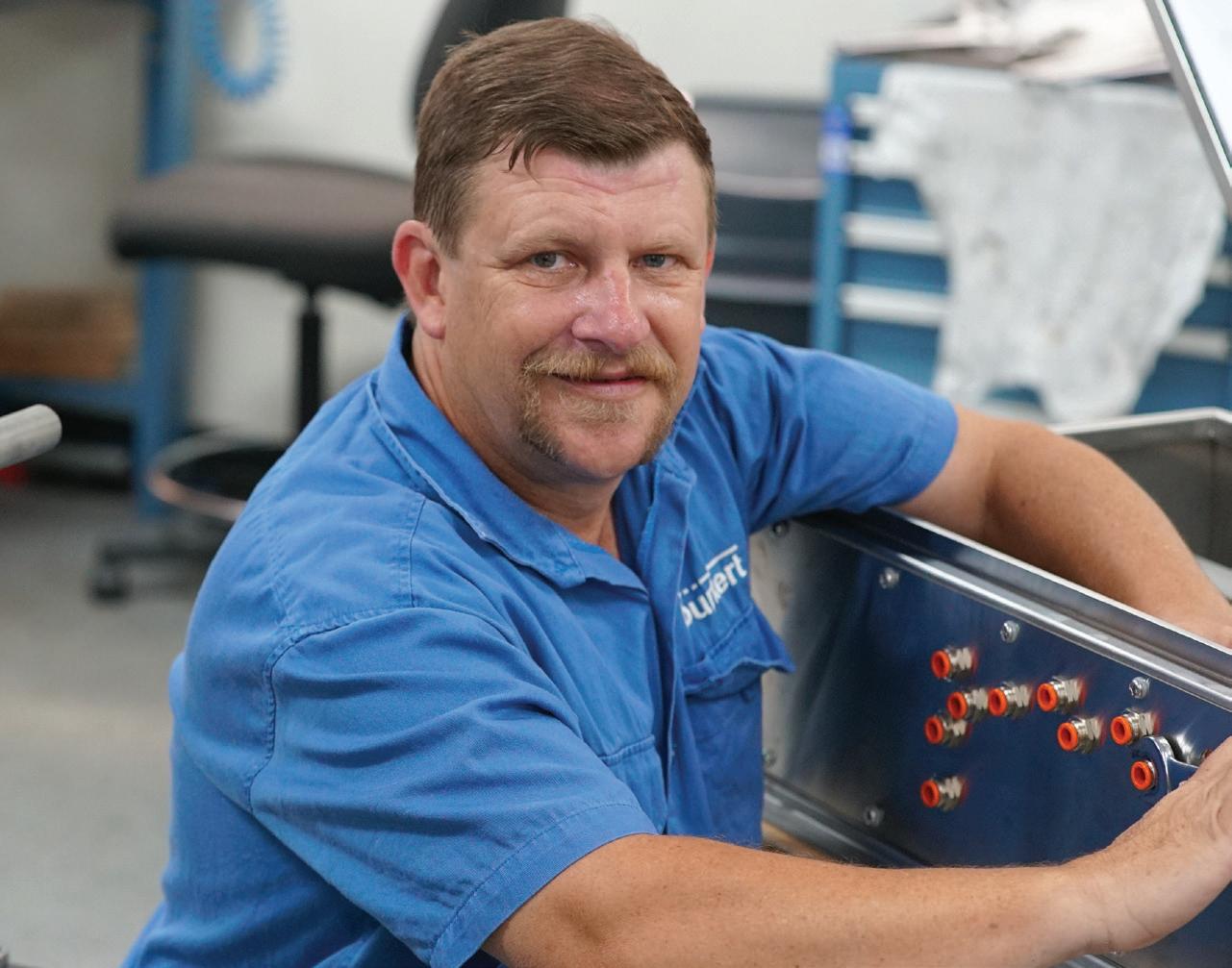
UTILITY • FEBRUARY 2021 WWW.UTILITYMAGAZINE.COM.AU 52
SYDNEY WATER | Utility Partner Solutions
Visit the online show today! www.burkert.com.au/en/Landingpage/Smart-Water-Solutions


METASPHERE LAUNCHES REVOLUTIONARY WASTEWATER LEVEL MONITORING SOLUTION
Leading telemetry expert, Metasphere, has launched a revolutionary Wastewater Level Monitoring solution, ART SEWER.

Metasphere provides robust, reliable systems and devices to clients globally in the water, wastewater, environmental and gas markets, with the purpose to drive sustainable use of the world’s natural resources.
ART SEWER is a ground-breaking Wastewater Level Monitoring solution offering an all-in-one approach for cost effective mass deployment of IoT sensing devices across wastewater networks.
Combined with machine learning data analytics, ART SEWER is the FIRST-EVER solution to deliver ultimate network visibility, performance and forecasting
Low cost, robust Sense Level IoT devices collect and feed sewer level data into Metasphere’s powerful data analytics platform, ART (Analytical Remote Telemetry). This data; combined with historic, current, and forecasted rainfall data; detect partial sewer blockages across the network.
ART SEWER helps wastewater utilities prevent wastewater spills, thereby reducing pollution to keep the natural environment clean and protected.
Tim O’Brien, CEO of Metasphere commented:
‘’ART SEWER is a new strategic direction for our business, using IoT sensor technologies combined with Data Intelligence for large scale mass deployment across wastewater networks. ART SEWER offers customers a full end to end approach to manage wastewater assets in a hazardous environment and reduce pollution to protect these assets for a better greener world.’’



























UTILITY • FEBRUARY 2021 WWW.UTILITYMAGAZINE.COM.AU 54 SEWER | Utility Partner Solutions Wide-area data for proactive and operational intelligence
for levels, blockages and spills
of the cost of a traditional installation
For more information contact info@metasphere.net.au +61 2 9956 7407 DATA COLLECTION AND DEVICE MANAGEMENT l Improve operations l Meet regulatory compliance and reporting l Avoid EPA fines l Improved customer satisfaction and community experience l Reduce OPEX & CAPEX l Reduce health and safety risks to crew and community l Prevent reputational damage
Alarms
Fraction
Ultimate network visibility, performance and forecasting with our NEW Wastewater Level Monitoring Solution, ART SEWER

FLUSHER II is a redesign of the proven HYDRAPULSE Flusher Gate launched by Aussie Trenchless in 2015 to keep those problem sewers clean. FLUSHER II is an innovative gate device that pulses the flow of the sewer to minimise the build-up of fats, oil and grease (FOG) and debris, thus reducing ongoing maintenance costs by removing the need for costly, repetitive jetting and CCTV programs.
FLUSHER II
FLUSHER II ALLOWS HANDS-OFF SEWER MAINTENANCE
2
021 sees the launch of FLUSHER II into the Australian market, which delivers a passive sewer clean with additional environmental, safety and customer benefits for asset owners. It also has the additional benefits of being easy to install and can be relocated to various problem areas.
Like HYDRAPULSE, the FLUSHER II is installed in sewer maintenance holes where the network is subject to sewer chokes as a result of FOG build up, silt and debris blockage due to sags in the line, and where solids are often deposited due to low flow conditions.
The unique design of the FLUSHER II provides an instantaneous snap opening and closing action which produces a wave pulse of wastewater to effectively flush and cleanse the downstream sewer. Upstream will encounter constant changes in the effluent level and flow, thus helping to prevent FOG, silt and debris from building up onto the sewer walls.
Installing FLUSHER II will allow the sewer to become a passive self-cleaning asset, requiring no power. The design is resistant to jamming and blocking, is inherently fail-safe during storm conditions, will remove surcharges caused by build ups, and needs minimal maintenance. Asset owners will have less customer access complaints and no jet cleaning damage to the pipe internals.
FLUSHER II is easy to install, can be monitored remotely and should be of interest to most water authorities, and city and regional councils that are responsible for the serviceability of the wastewater network.
For more information, visit aussietrenchless.com
A passive gate device for controlling and maximising hydraulic flow in sewers
• Reduces operational costs
– No more water jet sewer cleaning
– No more Silt & Debris removal
– Less surcharge & blockages
• Installed in Maintenance Holes
– Easy to install
– Easy to maintain
– For DN150 to DN450 sewer pipes
• Resistant to rag jamming and blocking
• Inherently “fail safe” during storms
• Data Logger and Telemetry Module
– Know what’s happening and when




UTILITY • FEBRUARY 2021 WWW.UTILITYMAGAZINE.COM.AU 55 Utility Partner Solutions | SEWER
418 691 989
Australia
+61
6/58 Box Road, Taren Point NSW 2229
enquiries@aussietrenchless.com www.aussietrenchless com
THE FUTURE OF DRILLING – GRUNDODRILL FIRST EDITION
Horizontal Directional Drilling (HDD) is a complex process, which places equally diverse demands on machine technology. Intensive analysis of its customers’ requirements caused TRACTO to question every detail and rethink every component when it came to developing a new series of advanced trenchless technology. The result is the next-generation GRUNDODRILL, an intuitive operating concept that allows for utmost flexibility and maximum productivity in steerable trenchless pipe installations.
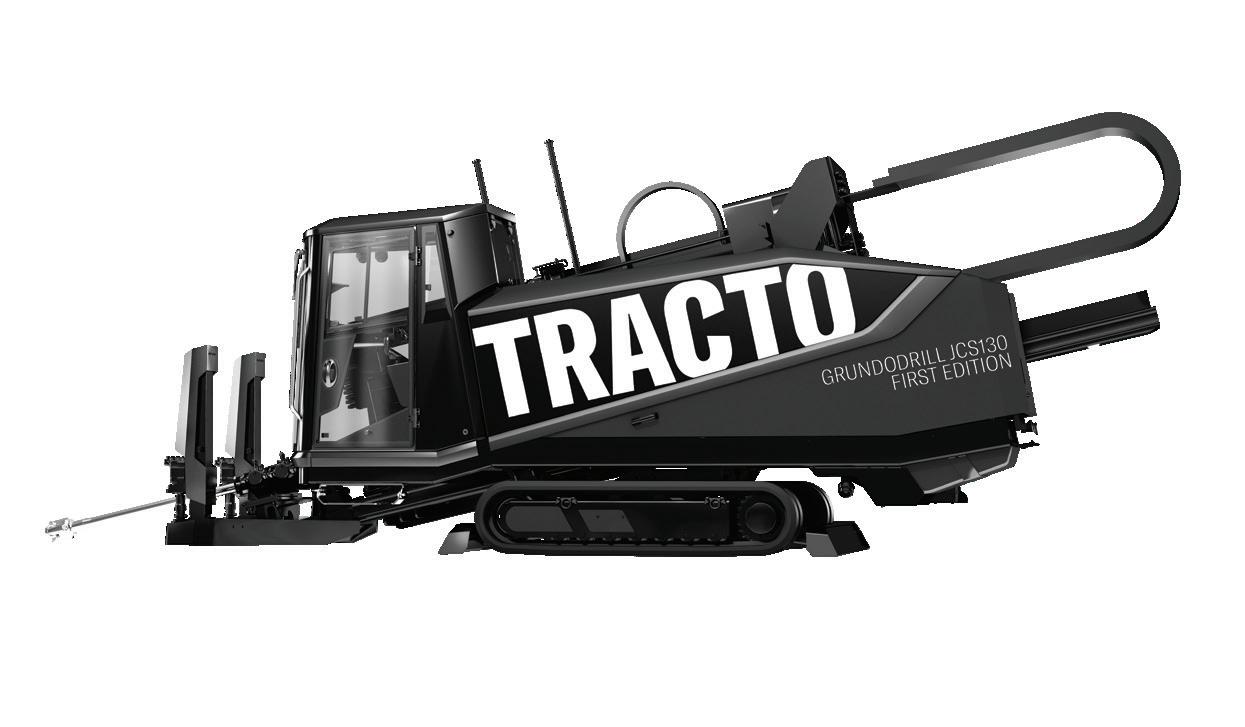
of peak power and innovative technology showcases German engineering and technological leadership at its best.
The complete series can be used either as a Jet Condition System (JCS) for jet drilling in conventional soils with normal rods, or as an All Condition System (ACS) for rock drilling with twin-tube rods.
Due to the modular construction of the new GRUNDODRILL series, it is possible to configure drilling rigs to the unique market requirements in Australia and New Zealand.
To mark the start of production of the new GRUNDODRILL generation, TRACTO has launched the GRUNDODRILL
GROUNDBREAKING CONCEPT
A GRUNDODRILL is an investment for many years. By including several optional features as standard in the FIRST EDITION, TRACTO-TECHNIK offers a truly top-of-the-range product. These features, including wireless remotecontrolled drilling, are at the core of the new generation and incorporated in all performance classes.
With the FIRST EDITION, TRACTO is breaking new ground. The user gets a machine that is as extensively equipped as possible, including unique digital features that pave the
SEWER | Utility Partner Solutions
56 UTILITY • FEBRUARY 2021 WWW.UTILITYMAGAZINE.COM.AU
way for autonomous drilling. This gives users the opportunity to stay ahead of competitors when going head-tohead for drilling jobs, thanks to the efficiency and precision of the new GRUNDODRILL generation.
The new GRUNDODRILL’s innovative operating concept, with almost all functions of the drilling rig controlled via a central touch screen and monitored via an integrated camera, is consistently tailored to the needs of the operator. This allows ergonomic and fatigue-free working, and an increased degree of automation. Alternatively, all central functions of the drilling rig can also be controlled manually.
The JCS/ACS130 models feature a powerful Cummins Tier 5, 100kW engine, variable torque and speed adjustment, and fully automatic drilling operation including an automatic drill rod exchange.


The GRUNDODRILL JCS130 FIRST EDITION epitomises the core values of the TRACTO brand: advanced trenchless technology that directly contributes to our customers’ success.
FIRST EDITION equipment highlights:
• Remote-controlled drilling: all functions of the drilling rig can be conveniently controlled and monitored from outside the operator's cabin using a specially-designed remote control unit
• Bentonite pump 320l/min: a full flow rate at maximal pressure. With a flow rate of 320l/min, the Bentonite pump P72-320 ensures a quick bore process and the highest productivity
• Undercarriage and rig inclination: in order to achieve the optimum entrance angle, the bore rig of the FIRST EDITION is equipped with a double inclination. In connection with an additional front stabiliser, this provides immense flexibility when planning the bore path and setting up the jobsite. Thanks to these two stabilisers and the rubberised steel chains on the undercarriage, the FIRST EDITION is extremely secure and accessible across all terrain
• Comfort cabin: the cabin of the FIRST EDITION is equipped with automatic climate control, as well as a comfort seat with air suspension and a built-in heater, providing the best possible working environment in all weather conditions
Due to its serial character, many features that are usually optional extras are included in the GRUNDODRILL JCS130 FIRST EDITION as standard accessories.

Bonus features:
• Anchor plate with hydraulic adjustment and mud pump
• Combined tank for water and antifreeze
• High-pressure cleaner and drill rod cleaning
• Camera vision system
• All-round lighting
• Exclusive FIRST EDITION branding
Every customer who orders a FIRST EDITION will receive a truly outstanding package, great service and support. For more information, visit GRUNDODRILL.COM/FIRSTEDITION.
Utility Partner Solutions | SEWER
57 UTILITY • FEBRUARY 2021 WWW.UTILITYMAGAZINE.COM.AU
MURRAY BRIDGE
WASTEWATER PUMP STATION SITE
BECOMES COMMUNITY AND CULTURAL SPACE
The installation of a unique art sculpture and final planting of around 7,400 native plants marks the completion of work at SA Water’s wastewater pump station on Jervois Road in Murray Bridge, which has been given the Ngarrindjeri name of ‘Nankeri tapatawangk’, meaning ‘place of good water’.

58 UTILITY • FEBRUARY 2021 WWW.UTILITYMAGAZINE.COM.AU SEWER
SA WATER CHIEF EXECUTIVE DAVID RYAN AND UNCLE CLYDE RIGNEY FROM NGARRINDJERI ABORIGINAL CORPORATION.

The landscape and architectural design of the pump station site focuses on sharing the culture of the region’s Traditional Owners – the Ngarrindjeri people –and their connection to water, with the wider community.
SA Water’s Senior Manager of Media and Communications, Joshua Zugajev, said this feature has been incorporated into almost every element on the site.
“An interpretive walking trail through a landscaped area around the pump station depicts the important water sites within Ngarrindjeri Country, including the River Murray, Long Island, Murray Mouth, Coorong, Lake Alexandrina and Lake Albert,” Mr Zugajev said.
“The trail will eventually connect into the Rural City of Murray Bridge’s section of the Murray Coorong Trail.
“Surrounding the path is a rhythmic pattern of raised garden beds, set against a native grass sward, which is reminiscent of the ancient mallee-topped sand dunes still found in the local area.
“This special landscape design was brought to life by Aboriginal architect and visual artist, Paul Herzich, along with the many environmental groups we worked with over the past 18 or so months.
“Installed at the head of the trail are two large mosaiccovered sculptures of ‘Kungari nga:tadi’ – black swan eggs – which were crafted by Adelaide artist Andrew Stock, with contribution from students at Unity College in Murray Bridge. The path also leads to two water basins which are filled with rainwater runoff from the pump station roof.
“Forty species of carefully selected and locally sourced native plants, including ten threatened species, are scattered across the two-hectare pump station site, and were chosen to survive the region’s hot summers and the local sandy conditions. Signage near each variety of plant shows what they will look like once fully grown.
“The plants are watered by recycled water straight from the Brinkley Wastewater Treatment Plant, through a network of 9,000m of underground drip-tube irrigation.
“Being near the entrance to Murray Bridge, it was important to create a space that is visually appealing and can still be enjoyed by the community, and it was fantastic to be able to partner with the local council and all our project partners to achieve this.”
The pump station was one of three built as part of a $52 million upgrade of the local wastewater network, which also included the construction of a new wastewater treatment plant in Brinkley – around 10km south of the Murray Bridge township – and an additional 18km of underground pipe.
The treatment plant began operating in June 2020, and is able to process up to 4.5 million litres of sewage a day for more than 14,000 local residents and businesses.
“As with the Jervois Road wastewater pump station, we strived to incorporate sustainability and innovation into the design of our newest wastewater treatment plant,” Mr Zugajev said.
“The Murray Bridge facility is one of four wastewater treatment plants around the state which recycles 100 per cent of treated wastewater for reuse, with the high-quality product used at a Department of Defence training area and a nearby pastoral property.
“Around 420 ground-mounted solar panels contribute to powering the plant, and it incorporates an odour control unit designed to remove 99.95 per cent of odour as well as an advanced biological treatment process to help break down sewage into sludge in a more compact and efficient way.
“These features recently led to the overall upgrade receiving the highest design rating to date for a water or wastewater project assessed by the Infrastructure Sustainability Council of Australia.”
The project was also recognised in November 2020 at the Australian Water Association’s South Australian Water Awards, winning the regional Infrastructure Project Innovation Award.
59 UTILITY • FEBRUARY 2021 WWW.UTILITYMAGAZINE.COM.AU SEWER
MURRAY BRIDGE WASTEWATER PUMP STATION KUNGARI NGA:TADI SCULPTURES.
BUILDING PIPES WITH LESS IMPACT
Yarra Valley Water’s Doreen to Diamond Creek Sewerage Project involves constructing a new 10kmlong section of sewer pipe, and 17 new sewer maintenance holes, within parkland and road reserves in the Doreen, Yarrambat and Diamond Creek areas.
The new sewerage infrastructure will ensure the reliability of the sewerage system, cater for growth in Melbourne’s northern suburbs, and reduce the likelihood of sewage spilling into the environment during heavy rain events.
Construction started in March 2019, and is scheduled to be completed in mid-2021, subject to weather and ground conditions. The project is being delivered in five sections and includes sites in environmentally sensitive areas, such as Plenty Gorge Parklands.
To reduce the impact on the environment, and to avoid disturbing areas where Aboriginal artefacts have been discovered, most of the new pipe is being constructed by using trenchless technology.



Pezzimenti Trenchless was engaged by Yarra Valley Water contractor, MFJ Constructions, to install just over 900m of 718mm OD GRP pipe using its method of laser-guided microtunnelling. The depths ranged from 5m to 12m deep, with bores that varied in length from 30m up to 110m.
Joe Pezzimenti, Managing Director of Pezzimenti Trenchless, said, “Our method was used due to the depths required, location (main roads which needed a small set-up footprint) and the accuracy required to achieve flat grades of one in 400.
“Further trenchless methods were used on the project where the depths were shallower and the grade was not as critical.”
One of the biggest challenges was the hard siltstone ground conditions – with a compressive strength of up to 40MPa – which was made more difficult by the depth and tight launch locations. COVID-19 restrictions also impacted the size of the crew, but this did not prevent Pezzimenti Trenchless from getting the job done.
Pezzimenti Trenchless completed the works in September 2020, achieving a great result that benefitted from a collaborative approach with MFJ Constructions and Yarra Valley Water.














UTILITY • FEBRUARY 2021 WWW.UTILITYMAGAZINE.COM.AU 60 Unit 2 / 85 Heatherdale Road, Ringwood Vic 3134 PO Box 2500, North Ringwood Vic 3134 P: (03) 9872 4596 | F: (03) 9872 3293 | E: info@pezztrenchless.com.au | W: pezztrenchless.com.au Still the market leaders in laser guided microtunnelling Bore diameters from 325mm up to 2800mm Used for gravity sewers, water mains, storm water, gas and electrical conduits. Specialists in “free bore”, sleeve boring and pipe jacking in all sizes The Next Generation in Trenchless Technology SEWER | Utility Partner Solutions






Connect, Protect, and Optimise Your Fleet
Our Global Alerting Platform (GAP) connects, protects, and optimises People & Things. GAP’s “plug & play” architecture allows you to connect any device & utilise any network.
Our GAP vehicle solution, GAP for Fleet, enables you to improve the safety and security of your drivers and vehicles, while optimising your fl eet performance and minimising statutory compliance costs.











Every fleet, large or small, can use GAP for Fleet with its visualisation and real-time rules engine to automatically notify fleet operators of safety, statutory and scheduling events.
GAP Reports and GAP Dashboards add a sophisticated suite of reporting and analytics that may be customised to cater for specifi c industry verticals and larger enterprise use cases.















We invite you to contact us to learn more about our current clients in electricity utilities, mining resources, exploration and health, and how GAP for Fleet has been deployed to meet their unique requirements.



search: two10degrees
REHABILITATING MELBOURNE WATER’S HAWTHORN MAIN SEWER USING
ALTERNATIVE LINING TECHNOLOGIES’ CIPM™ SOLUTION
Hawthorn Main Sewer is an ovoid sewer in Melbourne that was constructed in 1903, over 100 years ago. For the sewer to continue to provide reliable wastewater services for the local community, manhole rehabilitation was required.

Using CIPM™, delivery partners Alternative Lining Technologies and Abergeldie Complex Infrastructure rehabilitated six manholes up to 18m deep, extending their lives for another 50 years. Importantly, each was completed in one day, minimising disruption to the local community.
To date, solutions for manhole rehabilitation projects have generally been limited to cementitious coatings, such as calcium aluminate cement, epoxy coatings or slip lining. Although acceptable solutions, none provided the necessary attributes for the unique requirements of Hawthorn Main Sewer.
The Challenge – the project alignment was through a residential

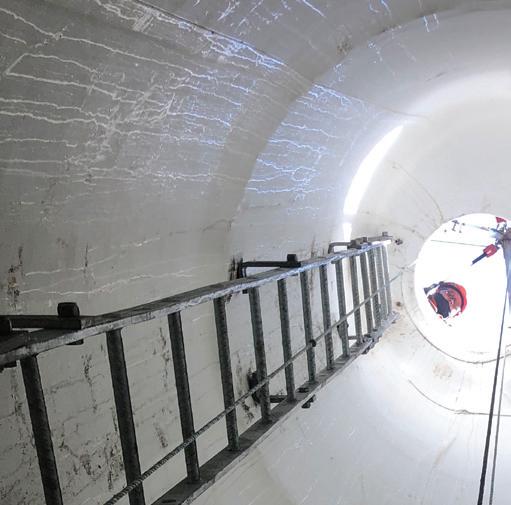
area of suburban Melbourne where consideration for the community was paramount. The project presented several other difficulties including the depth of manholes, shape of the manholes, groundwater levels and traffic management.
The Solution – the solution adopted on this project was Alt Liners CIPM™ (Cured in Place Manhole) technology. This was selected due to the speed of installation, the minimised reduction in diameter of the manholes, the superior structural capabilities and the added safety benefits during installation. By utilising CIPM™, the project had less impact on the community, lower labour costs and reduced traffic management requirements.

Features and benefits of CIPM™ include:
• Speed of Installation – 18m deep manhole rehabilitated in one day!
• Safety – time in the manhole is limited to a couple of hours, not several days
• Structural – CIPM™ provides structural integrity with its monolithic invert to lid design
• Longevity – CIPM™ will last 50-plus years due to its PVC multilayered composite construction
• Non-sacrificial – CIPM™ does not deteriorate over time like other coatings providing longer life cycle and lower whole-life costs
For more information, visit altliner.com.au
UTILITY • FEBRUARY 2021 WWW.UTILITYMAGAZINE.COM.AU 62 SEWER | Utility Partner Solutions
BEFORE AFTER

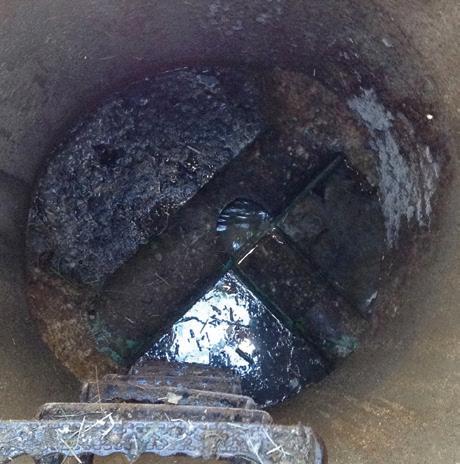
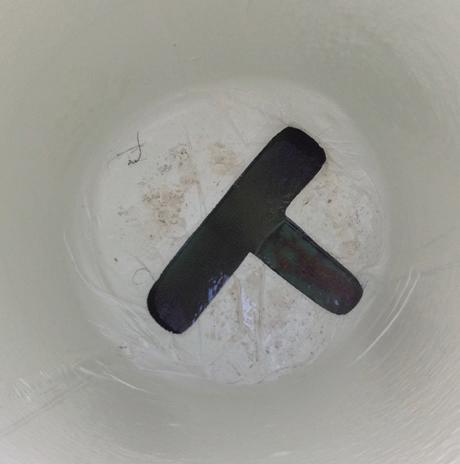

HOW DO YOU STRUCTURALLY REHABILITATE A EIGHTEEN-METRE DEEP MANHOLE IN ONE DAY? With Alternative Lining Technologies Cured in Place Manhole (CIPMTM ) BEFORE AFTER Stop infiltration Stop H�S corrosion Structurally rehabilitate Manholes Pump wells Pits Suitable for: DELIVERING TOGETHER ABERGELDIE COMPLEX INFRASTRUCTURE CONTACT Tony Vourtsanis, Delivery Manager, 0408 222 757, tvourtsanis@abergeldie.com ALTERNATIVE LINING TECHNOLOGIES CONTACT Bruce Keys, General Manager, 0418 542 120, bkeys@altliner.com.au www.altliner.com.au S
SEWER REHABILITATION FOR A LONGER SERVICE LIFE
by Bundaberg Regional Council

Bundaberg Regional Council has been taking work underground to reline a number of depreciated sewer mains located below main roads throughout the region.
Paul Viljoen, Program Manager at Bundaberg Regional Council, said the program, which was completed in May 2020, focused on older or “at risk” sewer pipes.
“The highest consequences and therefore the greatest risks are normally associated with large high-flow sewer mains and locations near roads, rivers, creeks or stormwater,” Mr Viljoen said.
“Most of the sewer mains that were relined are between 50 to 70 years old.”
Mr Viljoen explained that sewer relining was the renewal (replacement) of sewer pipe by inserting a new pipe inside the existing aged or damaged pipe.
“The benefits of sewer relining are being able to install a new pipe in the same place without having to dig up the original pipe,” Mr Viljoen said.
“As the process happens from within, it eliminates the need to interrupt the service and has little impact or interference with traffic and residences.
“The resulting new pipe is much stronger than the original, is expected to have a longer life and is constructed without joints which removes weak points where tree roots and
groundwater could eventually penetrate the pipe.”
Mr Viljoen said sewer relining was important in keeping pipes maintained and services operating as per normal.
“If we didn't reline, this would eventually result in failure of the sewer main, loss of service, discharge of sewage and a much greater expense to fix the problem,” Mr Viljoen said.
“Typically, once the sewer collapses it requires council to excavate the pipe and replace it.”
Mr Viljoen said that plans were already in place for future work.
“Planning and scheduling for 2021 started in the first half of 2020, with a rolling five-year program being developed,” Mr Viljoen said.
“Water Services have established an associated program of proactive cleaning, survey and condition assessing our entire sewerage system to identify and quantify any defects in the network.
“The information gained from this survey will be used to identify, cost and establish a rolling program of relining work for the future.”

UTILITY • FEBRUARY 2021 WWW.UTILITYMAGAZINE.COM.AU 64 SEWER
PROVIDING SOLUTIONS FOR:
• Municipal Sewage Treatment
• Commercial & Industrial Estates
• Government Projects
• Residential Developments
• Urban Subdivisions
• Resorts & Caravan Parks
• Mining Accommodation
• Airports & Infrastructure
• Service Stations
• Defence Assets



1800 057 771 | truewateraustralia.com
SEWAGE & WASTEWATER SPECIALISTS
• DESIGN • MANUFACTURE • INSTALLATION • MANAGEMENT
us about our CONNECTmi® and TELEmi® products for dynamic real time Asset and Management.Monitoring
CONSULTANCY
Ask

MCROBERT CONTRACTING SERVICES COMPLETES SEWER REHABILITATION FOR POWER AND WATER
On 4 November 2020, McRobert Contracting Services, in association with Power and Water Corporation, completed the structural relining of a box culvert inlet channel at the Palmerston Waste Stabilisation Ponds in the Northern Territory.
The channel is 125m long and 1.2m wide, and is a concrete precast box culvert, which includes a flume section and 90 degree bend. The inlet channel was installed in the early eighties and has been in service ever since, connecting to a DN 1200mm sewer trunk main servicing the suburbs of Palmerston.
This channel was open to the atmosphere until just over two years ago, but due to odour complaints from residents in the area, it was decided that aluminium covers would be installed over the length of the channel to reduce odour from the sewer.
When the covers were first installed, there was a small amount of corrosion just above the water line and a small amount of cement loss from the culvert walls. Approximately two years after the lids were installed, operators noticed during a regular maintenance inspection that the channel walls had a significant increase in corrosion, with exposed aggregate visible.
After further inspection, corrosion was detected along the entire length of the channel. By enclosing the top of the inlet channel with the aluminium covers, the sewer gases were retained within the system, accelerating the corrosion process in a short period of time.
Due to the location of the ponds in a residential area and the potential for a sewer spill as a result of a rupture of the channel walls into the lagoon, McRobert Contracting Services was engaged to design a relining system to save the channel.
McRobert Contracting Services carried out research and design at its workshop in WA to find a suitable lining material and methodology to line the precast culverts. After purchasing two precast box culverts with the same dimensions as the culvert in Palmerston
Ponds, McRobert Contracting Services was able to set up a channel simulation at the workshop to design a suitable bracing system and moulds.
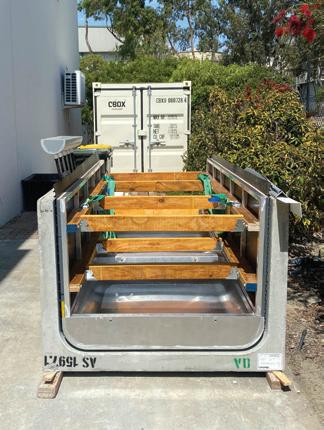
Three sets of moulds were fabricated from aluminium and form ply which could be used continuously. Bluey’s AKS 2.5mm HDPE in black was used as the lining material because of its UV qualities and ability to accommodate Darwin weather conditions.
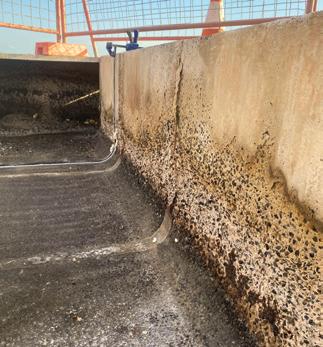
To reduce the amount of on-site welding, the channel was lined using one sheet per section (2.6m long) to eliminate any horizontal joints along the
base of the channel, which included bending the sheet hard against the curved sections of the base.
The project was undertaken in the Northern Territory wet season, which meant it was crucial to keep the HDPE lining out of direct sunlight and stored in containers to minimise sheet expansion resulting from high temperatures and humidity. Once the lining was grouted in position it could be exposed to these conditions.
A U-shaped capping was fabricated using 3mm HDPE sheeting which was welded on the inside of the channel and then fixed to the outside using a 3mm aluminium strip along the channel length. This ensured a gas-tight seal when the lids were reinstated.
The lining was completed in four weeks with a total of 375m² installed. The base of the channel lining was secured using Bluey’s products, and the walls were secured using a high rapid-set grout that allowed McRobert Contracting Services to install three sections per day, reducing the time on site.

On completion of all lining works, high-voltage spark testing was conducted for quality control and to ensure any faults were detected and rectified – all part of the McRobert Contracting Services guarantee for all materials and workmanship for a minimum of 50 years.

UTILITY • FEBRUARY 2021 WWW.UTILITYMAGAZINE.COM.AU 66 SEWER | Utility Partner Solutions
BEFORE AFTER



✓ MANHOLE REFURBISHMENT
• Structural rehabilitation of access chambers
• Relining of pipe connections, channels, benching and walls with PVC for 100% gas tight lining
• Stops further deterioration from gas attack
• Patented technology
• 50 year guarantee
✓ SEWER PUMP STATION REFURBISHMENT
• Structural relining of sewer pump stations
• PVC lining provides complete corrosion protection
• Replacement of damaged pipework, mechanical components and lids
• Patented technology
• 50 year guarantee



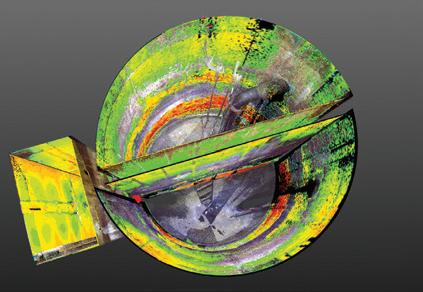
✓ 3D LASER SCANNING AND ASSET INSPECTION
• 3D scan of sewer asset
• Assess structural integrity of asset
• Determine amount of concrete deterioration
• Detailed interactive report with 3D modelling
• High definition video footage and photographs





www.mcrobertcontracting.com.au 08 9411 0666 office.admin@mcrobert.com.au
BEFORE
BEFORE AFTER AFTER BEFORE
A BALANCING ACT: RENEWABLES AND REDUCED GRID INERTIA
by Eliza Booth, Journalist

A reliable power system needs adequate levels of system strength and inertia, which to date have been provided by traditional synchronous generators. A lack of system strength or inertia within the power system brings with it an increased risk of system instability and supply interruptions. Here, we take a look at what inertia is, the role it plays in grid stability and the impact of increased renewable energy on the grid’s ability to balance supply and demand.
THE ROLE OF INERTIA IN ELECTRICITY GENERATION
Inertia is one of those aspects of energy supply that many people who aren’t in the industry are generally completely unaware of. However, for those in the energy business, inertia is an essential part of keeping the grid stable and ensuring that energy supply is able to keep up with demand.
In the simplest terms, inertia is one of the basics of physics, being that of Newton’s first law, which is often stated as ‘an object at rest stays at rest and an object in motion stays in motion with the same speed and in the same direction unless acted upon by an unbalanced force.’¹. So, basically anything with moving parts has inertia, which brings us to the electricity grid.
Inertia in power plants refers to the energy that is stored in rotating generators or industrial motors. This stored energy helps to keep the rotating parts moving. Any power plant that has moving parts, like coal-fired and hydroelectric plants, has inertia, and this inertia plays a massive role in grid stability.
Let’s use a coal-fired power plant as an example. Coal is burned, which produces steam, which spins a turbine, which generates electricity. The plant works with the help of a heavy, rotating mass that has inertia. If you suddenly stop burning coal, the turbine will keep spinning – until friction slows it down.
The stored energy from inertia is really valuable as a backup source of energy if a plant experiences a failure. The inertia can temporarily make up for the lost power, generally giving the mechanical systems that control most power plants several seconds to detect and respond to the failure.
Grid frequency, which is a measure of the balance of supply of electricity and demand, can suddenly drop if a large power plant or transmission tower fails. This is bad news as
the electricity grid, and everything connected to it – power plants, powerlines and home appliances – are designed to work at a specific frequency: 50Hz.
As the electric grid constantly adapts to changes in how much energy people are using and how much energy is being generated, frequency fluctuates. The grid can handle these small, constant changes in frequency because the spinning parts in traditional power plants can rotate slightly faster or slower to help balance out supply and demand. In this way, inertia acts as a shock absorber, meaning it can resist a drop in frequency and give the grid time to rebalance supply and demand.
Thanks to the built-in inertia of hydro, coal and natural gas plants, and practices like load shedding – which involves disconnecting a portion of the customer load – grid frequency typically stays within a safe range. But when the system deviates too far from 50Hz, things start to malfunction, leading to power outages and massive blackouts.
Up until recently, inertia was often taken for granted. However, the development and uptake of new energy production technologies that don’t have moving parts, like solar panels, is creating challenges for grid operators, and the industry is now having to look for solutions to this pressing issue.
THE IMPACT OF RENEWABLES ON GRID INERTIA
The world is more conscious than ever about the impacts humans are having on the environment and climate. As such, we are continually making strides towards a carbon-neutral future and the uptake of clean energy options is on the rise. More and more families and businesses are taking advantage of affordable and green energy production and storage
UTILITY • FEBRUARY 2021 WWW.UTILITYMAGAZINE.COM.AU 68 SOLAR

options, with rooftop solar panels and batteries now common in communities across the country.
However, these new technologies, while fantastic for the environment, are creating new challenges for grid reliability, and operators are having to come up with new ways of maintaining stable frequency with declining amounts of conventional inertia.
Most conventional power plants turn the spinning energy of a turbine into electricity via a synchronous generator, which inherently produces alternating current (AC) electricity. Solar PV and batteries produce direct current (DC) electricity, which must be converted into AC for use by the grid. This converter is known as an inverter, and conventional generators are increasingly being replaced with inverterbased variable-generation renewables.
As more of these inverter-based renewables are added to the mix and more traditional generators are switched off, the level of inertia available to grid operators is decreasing. So how do we overcome this to ensure the grid remains stable in case of an emergency?
Even though the amount of inertia is decreasing due to the uptake of renewables, these inverter-based resources actually have a counterbalancing effect. This is because of something called fast frequency response. These inverterbased renewables reduce the amount of inertia available, but replace some of the mechanical processes of traditional generation with electronic sensors that can measure frequency and respond incredibly quickly – in fractions of a second in most cases.
Fast frequency response means that we don’t need to rely on the levels of inertia previously required to keep the grid stable and keep up with demand. In fact, one study from the National Renewable Energy Laboratory (NREL) in the US indicated that wind turbines can respond to changes in frequency ten times faster than traditional generators, and solar can respond up to 50 times faster².
Modern wind turbines do not use synchronous generators and therefore do not provide inertia in the traditional sense. However, wind turbines do have kinetic energy in the rotating mass of the blades, shaft and generator that could be extracted to rapidly inject real power into the grid.
Some renewable technologies – including hydropower, geothermal or biomass – do use synchronous generators that can provide inertia.
It is worth noting that there are non-generation alternatives to provide inertia, the most common of which is the deployment of synchronous condensers, which are synchronous motors/generators that draw energy from the grid to maintain a spinning mass and provide power to the grid in the same manner as a synchronous generator.
Research shows that the combination of inertia and mechanical frequency response can, to a large extent, be replaced with electronic-based frequency response from inverter-based resources and fast response from loads, while maintaining system reliability. Given these solutions, the reduction in inertia is no longer a barrier to the uptake of renewable energy generation, which is a win for the industry, customers and of course, the environment.
¹ https://www.physicsclassroom.com/class/newtlaws/Lesson-1/Newton-s-First-Law
2 https://www.nrel.gov/docs/fy20osti/73856.pdf
UTILITY • FEBRUARY 2021 WWW.UTILITYMAGAZINE.COM.AU 69 SOLAR

SOCIAL ENERGY: A NEW SMART ENERGY RETAILER ENTERS THE GAME
by Imogen Hartmann, Journalist
UTILITY • FEBRUARY 2021 WWW.UTILITYMAGAZINE.COM.AU 70 SOLAR

UTILITY • FEBRUARY 2021 WWW.UTILITYMAGAZINE.COM.AU 71 SOLAR
Empowered consumers and an increasing number of new retail electricity providers are loosening the market hold of incumbents and driving down power prices. When smart energy retailer Social Energy opened its doors to Australian customers in November 2020, it leveraged a unique technology proposition to offer customers 100 per cent bill reductions, completely green energy packages and exclusive home solar battery systems.
Social Energy focuses on delivering bigger savings for homeowners by offering game-changing technology, a competitive energy plan and market-leading solar feed-in tariff.
Customers could save $2,182 off their energy bill in the first year alone, when purchasing a solar and battery system from an approved solar battery retailer, based on a bespoke quote.
LEVERAGING TECHNOLOGY FOR ENERGY TRADING
The retailer uses its artificial intelligence (AI) platform and cutting-edge virtual power plant (VPP) technology to optimise solar-connected battery storage.
Social Energy Chief Technology Officer, Steve Day, said, “Our network of customers forms a VPP that we use to balance and maintain the energy grids across the areas that we operate in. As a result, we generate income from trading our customers’ energy.
“Through the combination of solar, battery and VPP benefits, our customers can reduce their electricity bills by up to 100 per cent.
“We share our revenue with our customers, handing about two thirds of it to battery owners who are connected to us.”
The AI platform learns about a customer’s energy usage and makes informed decisions about how to store, manage and distribute their solar energy.
This use of AI technology allows Social Energy to trade its customers’ energy as follows:
1. When a new customer signs up, they connect their battery to Social Energy’s VPP
2. Once they’re linked up, Social Energy’s AI technology learns about their energy consumption habits to maximise their solar usage – making informed decisions about when to sell excess solar energy and when to charge the battery from the grid
The AI technology collects and uses 600 million data points per home per year, with customer batteries able to respond to trading instructions within 0.2 seconds.
Social Energy operates in the open market because it has the metering to meet the market ancillary services specification (MASS) requirements. This means the company has full access to Frequency Control Ancillary Services (FCAS) revenues.
By using its fleet of customer batteries to balance and maintain the electricity grids, Social Energy is able to generate revenue that it can pass onto its customers. As a result, the users have access to energy markets that have previously only been available to the big players.
All AI decision-making is undertaken automatically, so the customer doesn’t need to do anything to financially benefit from Social Energy’s technology once they have their system installed.
DRIVING COMPETITIVE FEED-IN TARIFFS
Social Energy offers customers who purchase and install solar panels and a battery a feed-in tariff of 40c per kWh – a tariff not seen in Australia for almost a decade.
This rate is more than four times the average in New South Wales (7.67c per kWh), South Australia (8.77c per kWh) or Queensland (7.01c per kWh), based upon data from EnergyMadeEasy.
Customers will receive this market-leading export tariff for the first 300kWh they export each quarter – additional exports will receive a secondary standard feed-in tariff, which is still higher than the average in the region.
Social Energy will pay its customers with a 9.6kWh or larger battery a minimum top up of $450 per year for the solar they don’t use, saying that some customers may see their electricity costs drop as low as zero, with lower-usage customers potentially receiving a pay-out each quarter instead of a bill.
“We’ve been operating in the UK with a similar offer for a couple of years, but the guaranteed minimum ($450 per year) and the enhanced feed-in (40c) is new to Australia,” Mr Day said.
“We’ve got over 6,000 systems deployed in a very relatively small UK solar market and we’re the first to deliver this sort of service and only at this sort of commercialised scale in the UK.”
The retailer also offers a competitive import tariff to ensure that if its customers need to buy electricity from the grid, it remains affordable.
As a result, the energy retailer is aiming to flip the typical relationship with customers on its head, paying them more for selling their unused solar energy than what they’re charged for the energy they buy.
For example, instead of a customer purchasing energy at an average of 23.25c./kWh in the NSW Ausgrid region and getting paid an average of 7.43c./kWh for what they sell back to the retailer, Social Energy will charge its customers just 21.56c./kWh, whilst paying them 40c./kWh for the first 300kWh each quarter.
A BATTERY-POWERED PARTNERSHIP

Social Energy is working in partnership with global consumer battery company, Duracell, which means customers will have access to a lithium-ion Duracell Energy Bank 2 – scalable to different sizes to meet the needs of every home and suitable for outdoor installations.
UTILITY • FEBRUARY 2021 WWW.UTILITYMAGAZINE.COM.AU 72 SOLAR
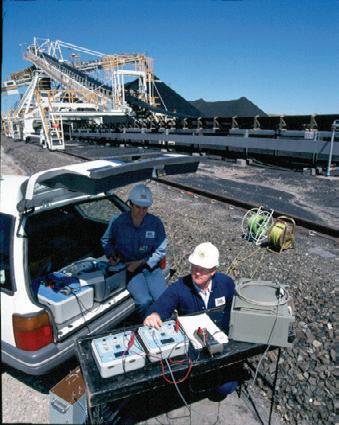
Testing in 1994 with Australia’s first commercial earthing test equipment for low current, off-frequency injection testing, produced under licence using Safearth’s designs.
We are very proud to have achieved so much in the last 30 years. Earthing has come a long way!
With a long history in carrying out earthing design and testing, Safearth is Australia's largest and most experienced earthing and lightning protection team and is at the forefront internationally. In fact, Safearth invented some of the key testing methods that are commonly used today!
Safearth continues to pioneer and diversify, led by our unwavering commitment to solving meaningful problems in a valuable way.
Let us help you with your electrical challenges.



With more than 25 degree-qualified professional engineers, Safearth is the largest and most experienced team of earthing engineers in Australia.
We’ve worked with clients around the country to save them thousands of dollars in project implementation and ongoing maintenance costs whilst improving their safety.
safearth.com
327
enquiries@safearth.com 1800
844
OFFICE LOCATIONS: Newcastle (head office) | Perth | Adelaide | Brisbane Sydney | Melbourne | Canberra USA | Canada
30 YEARS C ELE B R A TIN G O F S A F E A RT H
Testing
Services
Analysis
& Audits
Investigation Asset Management Standards & Policy Complex Problems Our offices ○ Our work locations
Earth
Design
Needs
Assessments
Incident

Mariusz Surmacz, General Manager Australia, New Zealand and South East Asia at Duracell, said, “Partnering with Social Energy is a very exciting prospect for us. We appreciate their entrepreneurial spirit, their forward thinking, the quality of service and product they provide.”
Social Energy also works with other leading solar battery suppliers – with more battery brands to be made available in early 2021.
The cost involved in joining Social Energy is approximately $12,000 for a 6.6kWp tier 1 solar installation and an 11.6kWh SolaX battery system, connected with a Social Energy Hub.
According to Social Energy, customers can spend $0 upfront by taking out a finance package to spread the cost of the total system price over a variety of terms up to ten years, where the savings made from the system can contribute to and, in some cases, offset the monthly or annual cost of the loan.
With additional government incentives for battery systems, some customers in South Australia can expect to have covered all initial costs in under four years, after which they could be benefiting from very low, zero or even negative energy bills.
For example, a Social Energy customer in the South Australia region with an annual consumption of 6,000kWh and generation of 8,000kWh would have a payback time of under four years, based on a $12,000 cash purchase of a solar panel and battery system, with a $2,088 government grant.
“We’re democratising energy by giving regular energy customers access to markets that they would otherwise have never been able to take part in,” Mr Day said.
“In our home [UK] market, the incumbent 'Big Six' energy suppliers have been challenged for many years, leading to a more competitive market, with greater customer savings and more green options being chosen.
“Over the coming years, we will be providing Australian homeowners with a more democratised energy market.
“While we are primarily focused at Social Energy on battery storage to power the home, we have a pipeline of projects that includes EV charging, hot water tanks and heat pumps.”
SHAKING UP THE AUSTRALIAN MARKET
Social Energy announced its Australia launch in late 2019, with shareholder Shane Warne. The company arrived having
taken the UK market by storm, establishing its position as a market leader over the past 18 months.
“Social Energy was designed to revolutionise the energy industry by empowering homes across the world to take back control of their energy supply,” Mr Day said.
“The founders had previously sold their business as one of the UK's largest solar and renewables wholesalers.
“When they exited, they could see the future potential of battery storage to revolutionise home energy, but it wouldn't provide reasonable financial returns.
“Off the back of this, they sought to find new ways to make solar and battery storage a viable investment for customers across the globe.
“The AI technology that Social Energy uses has been in development by Oxford-based scientists over the past seven years and is now ready to go global.”
Social Energy said its goal is to drive true change in an industry that has historically been heavily to blame for climate change.
By allowing its customers to make the most of the green energy that they generate at home, they are able to lower their environmental impact and be rewarded financially for doing so.
Social Energy is available to those that are new to the world of solar panels and battery storage, and those that already have solar panels installed.
Chris Parratt, Managing Director Australia, Social Energy, said, “We’re delighted to be rolling out Social Energy in Australia, as the financial and environmental impact for people here is huge.
“Our groundbreaking technology is a complete game changer for our users, making the combination of solar and battery storage offer better returns than solar on its own.
“It will support millions of homeowners in becoming more independent from the grid.
“Having been involved in some major steps forward in the Australian energy market, I’m extremely excited to be pioneering the next big leap – with an energy plan that finally makes batteries a sensible investment for Australian families.”
Social Energy is currently only available in New South Wales, South Australia, Queensland, ACT and Tasmania, but has an energy retail application underway in Victoria.
UTILITY • FEBRUARY 2021 WWW.UTILITYMAGAZINE.COM.AU 74 SOLAR
Does your DC power system fall short?

I f the re ’ s one t hin g you don’ t want to take a chance on, it’s the ability of yo u r DC power system to protect your critical a sse t s. O ur D C power sy stem s are designed to meet Australian standards and to delive r maxi mu m longevity. By custom designing every s y stem, w e provide en gi ne ered sol u t ions t hat me et t h e unique tech nical re quirements of yo u r si te. T h is in n ovat ive ap proach combined with our maintenance support m eans we le ave no t h ing to c h anc e when it comes to protecting you r cri ti ca l a sse t s.
To le arn more about our DC power systems and ma intenance ser v ices, v is it o u r website.
F or enquiries call 1300 364 877 www.intelepower.com.au
The first Choice for Stored Energy Solutions
WORK SMARTER WITH FORCE LOGIC ™
No two days are the same for a tradesperson. While immediate work challenges can be unpredictable, the need for efficiency and safety remain paramount whether you are a technician in the field or managing projects across job sites. While working alongside tradespeople, Milwaukee® Tool discovered the biggest issues impacting Australia’s utilities industry and engineered a product range to help overcome the frustrations and limitations electrical professionals faced in the field. We developed our M18™ FORCE LOGIC™ range of high-force press, cut and crimping products to work harder so that you and your teams work safer and smarter.
Milwaukee leveraged hydraulic expertise from around the world to engineer the FORCE LOGIC™ range. Our goal was to improve the efficiency of high-force tools on the job site. Intelligent engineering combined with Milwaukee’s smart tool technology ensures that FORCE LOGIC™ is geared to improve safety and productivity across the utilities industry.
Tough electrical cutting and crimping conditions put stress on the body, particularly shoulders, arms and hands. The M18™ FORCE LOGIC™ Cable Cutter with 400mm² Cu Jaws (M18HCC-0C) alleviates strain on the user by allowing for effortless cutting with onehanded operation. The in-line design with a compact open-jaw fits in the tightest panels and can make over 250 installation-ready cuts per charge on a 2.0 Ah M18™ battery.
The M18™ FORCE LOGIC™ crimpers are designed to reduce user fatigue, with a balanced design. The FORCE LOGIC™ electrical crimping solutions are the easiest, most accurate way to crimp.
The M18™ FORCE LOGIC™ crimpers have Predictive Force Monitoring, or PFM™ – the industry’s first adaptive pressure control system. PFM™ measures pressure and modifies system performance levels, while protecting internal components during the completion of the crimp. A green LED indicator

M18™ FORCE LOGIC™ 300mm² Crimper (Tool Only) M18HCCT-0C

light provides instant pressure verification to users, ensuring accurate pressure on every crimp. The M18™ FORCE LOGIC™ utility crimpers store real time and historical tool performance data, syncing this critical information wirelessly across your network.
The FORCE LOGIC™ range is enabled with ONE-KEY™ giving you centralised tracking, management and reporting on all tools and equipment. FORCE LOGIC™ tools record usage for professional report building, assuring users that every crimp, cut and press is correct, and giving visibility to procurement teams to oversee that work always meets standards.
Compatible with over 120 solutions on the M18™ battery system, Milwaukee delivers the ultimate productivity enhancement with the M18™ FORCE LOGIC™ range – a solution to press, cut, fasten, and connect on one interchangeable battery platform. With one charger across power tool batteries on site, you can free up space in work vehicles for better productivity and improved safety with less additional test and tagging.
Milwaukee is confident that our high-force technology meets the demands of today’s utilities industry. Experience for yourself how the FORCE LOGIC™ range will simplify complex jobs and deliver a smarter, safer way to work, from start-tofinish on any project.
Our Job Site Solutions (JSS) specialists are ready to show you the FORCE LOGIC™ range in action and demonstrate the ways it will improve your work. ARN-0475
Request a demo today!
milwaukeetool.com.au/jobsite-solutions
645 928
M18™ FORCE LOGIC™ Cable Cutter with 400mm² Cu Jaws (Tool Only) M18HCC-0C
1300
SA Water deploys
WORLD’S LARGEST MOVEABLE SOLAR SITE

The world’s largest fully moveable, single-location solar array is taking shape at Adelaide’s Happy Valley Reservoir as part of an ambitious renewable energy initiative by SA Water to reduce its operating expenses and deliver significant environmental benefits to South Australia.
UTILITY • FEBRUARY 2021 WWW.UTILITYMAGAZINE.COM.AU 78 SOLAR
WATER’S
SA
CHIEF EXECUTIVE DAVID RYAN.
More than 30,000 solar photovoltaic (PV) panels are in the process of being positioned at the reservoir reserve in Adelaide’s south, generating a total of more than 17,000 megawatt hours of energy per year.
Created by Australian-based solar innovator 5B, the unique Maverick solar panels are pre-wired, fabricated and folded to allow for each panel to be delivered and installed in just one day, and can be fully re-mobilised and moved several times.
SA Water Chief Executive, David Ryan, said Happy Valley is one of more than 30 SA Water solar sites being constructed across metropolitan and regional South Australia.
“With our extensive water and wastewater operations making us one of the largest electricity consumers in South Australia, being able to generate solar electricity at sites like Happy Valley will make us more resilient to the volatility of the electricity market,” Mr Ryan said.
“Not only does this solar array have the generation capacity to almost double the energy requirements of the Happy Valley Water Treatment Plant, but it also reduces our emissions by more than 7,600 tonnes.
“The positive impact of our zero cost energy future will also be our environmental footprint, with the total estimated emissions reduction the equivalent of planting seven million trees.
“We have engaged with the Happy Valley community throughout this project to develop a solution to reduce the visual amenity of such a large solar array, including the ability to reduce the array area, and planting grasses, shrubs and other native vegetation to create windbreakers and vegetation screens.
“This is such an exciting project that will make a real difference to our operations, and ultimately, by working towards our zero cost energy future, we aim to sustainably keep prices low for our customers.”
Water stored in the Happy Valley Reservoir is treated at the nearby Happy Valley Water Treatment Plant, which produces clean and safe drinking water for more than 40 per cent of SA Water customers across metropolitan Adelaide.
The array at Happy Valley forms part of SA Water’s industry-leading renewable energy project aiming to achieve a zero cost energy future, headlined by the installation of more than 500,000 solar panels producing a total of 242 gigawatt hours of green energy each year.
SA Water’s zero cost energy future initiative has already seen over 160,000 solar panels positioned at sites like the Bolivar Wastewater Treatment Plant, Adelaide Desalination Plant and major pump stations along the Morgan to Whyalla Pipeline.
“Our large water and wastewater network across South Australia provides us with the unique position of having a large number of land holdings and buildings near existing electricity networks, to enable this large-scale solar project,” Mr Ryan said.
“In the same way that many South Australians have harnessed the benefits of solar panels at home, we are capitalising on some of our physical assets to work harder for us while still performing their vital functions of delivering trusted water and wastewater services to our customers.”
More information about SA Water’s zero cost energy future program is available at sawater.com.au

UTILITY • FEBRUARY 2021 WWW.UTILITYMAGAZINE.COM.AU 79 SOLAR
HOW UTILITIES CAN LEAD AUSTRALIA TO A HYDROGEN FUTURE
by Emil Billquist, Managing Director, Frank Ochel, Senior Principal, and Thomas Culbert, Senior Manager, Accenture

There has been a lot of hype about Australia's future as a hydrogen exporter, with many commentators talking up the prospects of the fuel for the oil and gas industries. A clear-eyed analysis of
the
near
horizon for hydrogen delivers a very different picture. There is definitely significant potential, but the leaders will be utilities using lowcost renewable energy to produce hydrogen. And the most immediate market for their product will be existing domestic markets with the capability to scale.
As the price of equipment falls, the proportion of the cost of producing green hydrogen through electrolysis that is accounted for by energy will rise to around two thirds of the total cost. Australian utilities already have a considerable renewable energy footprint and the intermittent nature of this generation –especially solar – means that excess energy is often available at zero cost during the day.
According to the University of Melbourne’s Dr Rebecca Yee, there will not be any likely cost reductions in mineral-produced hydrogen.
“Efficiency gains have plateaued for coal and natural gas Haber-Bosh (HB) ammonia since the 1990s and there won’t be much more optimisation to be had," Dr Yee said.
Australia’s power network is such that a surplus of cheap renewables often sits idle to avoid overloading the network. The ability to create green hydrogen through electrolysis using this surplus puts utilities in a commanding position to drive the next phase of Australian hydrogen.
To capitalise on this opportunity, Australian utilities should identify domestic markets such as gas suppliers who are
80 WWW.UTILITYMAGAZINE.COM.AU SOLAR
using hydrogen gas for blending into their own fuel mix, and the mining and resources industries, before seeking export opportunities. A “local-first” approach can secure long-term customers who deliver price certainty and current revenues, rather than exposing a fledgling industry to the volatility of global export markets.
Customers that present immediate opportunity are those with an urgent need to decarbonise and burnish their sustainability credentials. These customers must be able to afford to pay a premium to do so, because the reality is that – at least in the short term – green hydrogen will cost more than hydrogen produced from mineral fuels.
They must be able to scale effectively, and Australia has a massive and increasingly sophisticated mining industry more than capable of providing the scale required. Sustainability is key to their social license to operate. They produce outsized revenue, with the largest having a far greater return on equity than companies in most other sectors.
We have seen Fortescue make aggressive hydrogen plays in recent months and the likes of Rio Tinto and BHP will be seeking their own supply of green hydrogen to keep up in the sustainability race. Gas blending has similar scalability, as well as offering immediate offtake and being within the direct business of many utilities.
Curiously, some of the most vaunted markets for hydrogen are among the least promising. The economics of the much-hailed green steel are nothing short of horrible. Steel producers are already competing against low-priced competition globally, and margins are wafer-thin.
The domestic fertiliser and explosives industries have been mooted as a customer for ammonia – currently the primary method of transporting hydrogen. Scalability is the obstacle stopping ammonia being a domestic growth market well into the future.
Unlike gas suppliers who can blend greater amounts of hydrogen as technology improves and miners who are constantly seeking new projects, the local market for ammonia is unlikely to grow for any reason. Ultimately, agricultural ammonia is a stepping stone for long-term hydrogen plays.
In addition to choosing the right domestic markets, utilities leading the hydrogen charge will need sophisticated collaboration strategies. The immediate task is not to grab market share at all costs, but to increase the size and viability of the overall market by striking the right partnerships.
These partnerships fall into three main categories –innovation, capital and regulation. On the innovation side, the brief is to drive down costs.
In terms of capital, partners seeking long-term, lowrisk investments should be sought to support the initial capital outlay. There is of course a role for banks and the Clean Energy Finance Corporation, but infrastructure, superannuation and sovereign wealth that invest for the long
term are also ideally suited to this kind of investment.
Utilities should be seeking financing below a five per cent weighted average cost of capital. For these investors, domestic hydrogen is an attractive proposition because, unlike oil and gas, it is not exposed to ‘carbon risk’ global price volatility and currency fluctuations.
Profitability over the long term will be driven by cost reductions rather than price hikes. Cost reductions will occur in two areas. One is the cost of power, which thanks to renewable energy is already falling quickly. The other is cost savings driven by innovation and cooperation.
We can look to solar panels for an example of how this can occur – through a mixture of Australian innovation and global manufacturing. Research and development partnerships between Australian utilities and original equipment manufacturers (OEM) manufacturing offshore for the global market can push down the cost of equipment to below the key benchmark of $30 per megawatt-hour.
The final key area for partnerships and cooperation is on an industry/regulatory level. A multilateral dialogue with all players in the hydrogen industry is needed to ensure that the industry is growth ready, safe and profitable as quickly as possible.
We need agreed standards for what constitutes clean/ green hydrogen as well as standardised equipment and infrastructure for maximum interoperability and efficient use of R&D capital. Beyond traditional energy regulators, there are safety regulators, as well as those covering equipment standards, competition and land use.
There could be a role for a body like the COAG Energy Council to coordinate the development of a coherent regulatory approach to hydrogen that lays a firm foundation for a thriving domestic industry.
There are some urgent and rewarding actions that utilities can take to advance their hydrogen position today. The time for small-scale testing and feasibility studies has passed, so there is no point investing in more 10MW test sites. Even the latest trials from ARENA have emphasised that the technology is mature and proven, and that its testing is purely about price discovery.
Few organisations are in the position to commit to something as large as the Asian Renewable Energy Hub where $50 billion is earmarked to be spent on 26GW of hydrogen production capacity. The sweet spot for most utilities will be “no regrets” projects between 100MW and 1GW, with capital outlay of less than $1 billion.
The cost savings necessary for a viable domestic industry to underpin the nascent export capability will only come from scale – it’s time for utilities to take the hydrogen mantle from oil and gas, develop a sound strategic roadmap for domestic markets and start to scale aggressively.
Emil Billquist, Frank Ochel and Thomas Culbert are part of Accenture’s strategy and consulting business in Australia and New Zealand.
UTILITY • FEBRUARY 2021 WWW.UTILITYMAGAZINE.COM.AU 81 SOLAR
VIRTUAL POWER PLANTS DISTRIBUTED

UTILITY • FEBRUARY 2021 WWW.UTILITYMAGAZINE.COM.AU 82
Creating a more resilient
GENERATION
 by Eliza Booth, Journalist
by Eliza Booth, Journalist
UTILITY • FEBRUARY 2021 WWW.UTILITYMAGAZINE.COM.AU 83
DISTRIBUTED GENERATION
resilient grid: PLANTS EXPLAINED
DISTRIBUTED GENERATION
The way we generate, use and store energy is changing. As the world moves towards more renewable energy options, and large traditional power generators are retiring, maintaining the balance between supply and demand at all times is crucial to preventing power outages. One way communities and utilities are addressing this issue is with virtual power plants (VPPs). But what exactly are VPPs? Here we explore how VPPs can act as a substitute for conventional dispatchable power plants and accelerate the transition to a low-carbon future.
WHAT IS A VIRTUAL POWER PLANT AND HOW DOES IT WORK?
Virtual power plants are relatively new to the energy industry and have caused waves in countries like Australia, Europe and the US.
In the simplest terms, a VPP is a cloud-based network that connects multiple distributed energy resources (DER) in separate locations, which can be managed and aggregated using a central control system to supply reliable power. For a VPP to work, it involves using software and communications to make the DER visible to a retailer and/or the network.
To understand how VPPs operate, first we need to understand the role of DER. DER encompass a range of behind-the-meter technologies such as rooftop solar, home batteries, inverters, controllable loads both in homes and commercial and industrial facilities, electric vehicle charging points, smart appliances and systems (such as fridges, air conditioning systems, hot water heaters and pool pumps) as well as relevant enablers such as smart meters and data services.
Traditionally, communities relied solely on large-scale centralised power plants to provide reliable power, such as a gas or coal-fired power station, and power flow was in one direction; from the utility to the business or consumer. However, fossil-fuel based power plants are a major source of greenhouse gas emissions, and Australia has committed to reducing its emissions by 26 to 28 per cent from 2005 levels by 2030 as part of the global effort to combat climate change.
Australia has one of the highest uptakes of DER in the world, with costs for home solar and battery systems continuing to decline thanks to technological advances and funding from governments and local councils, however two-way flows of power have created challenges for grid operators.
An oversupply of energy from DER can overwhelm the grid and potentially spark outages, and high levels of DER can affect local voltage, unless a voltage control scheme is in place. The intermittency of renewable generation is also an issue, such as when solar supplies suddenly drop when the sun starts to set, which creates a spike in demand and results in utilities having to turn to fossil-fuel based generators to make up the gap. This is where VPPs are beneficial.
A traditional power plant provides centralised generation of electricity that is transported to local electricity distribution networks where it is used by customers within their homes and businesses. While VPPs are made up of multiple smaller independent energy systems, they can still be centrally coordinated, or orchestrated, to provide the same services to the electricity system as traditional centralised generation.
What VPPs achieve is the ability to combine multiple energy sources concentrated in a certain area, coordinate and organise them through a remote software system, then distribute this energy across the network to areas that need it most, providing a stable and balanced supply.
THE BENEFITS OF VPPS FOR INDUSTRY AND COMMUNITIES
The rise of affordable rooftop solar has dramatically transformed the way that Australian homes and businesses engage with energy. For customers, VPPs help to keep energy costs low, which is especially important as many families face tough times ahead as a result of job losses and a national recession caused by the COVID-19 pandemic. Customers can also rest easy knowing they are helping to reduce harmful greenhouse gas emissions caused by the use of fossil fuels, a win-win situation for both humans and the environment.
Utilities reap the benefits of VPP systems in a number of ways. VPPs can provide ancillary services to the grid to help smooth out imbalances caused by renewables or failures of large power plants, they have the ability to provide peak load electricity at short notice, and because energy is generated close to the locations it will be used, there is a decline in energy loss during transportation.
VPPs also offer some unique benefits when compared to microgrids. Microgrids, much like VPPs, combine and optimise DER, however they have a clearly defined network boundary. VPPs, on the other hand, are able to cover a wider area and have the flexibility to grow or contract as needed. Also unlike some microgrids, VPPs serve the main energy grid, creating a holistic energy landscape.
However, increasing reliance on DER may expose the grid to an increased risk of malicious cyber attacks, which could undermine system stability, compromise user data – or both. The equipment used in DER – like inverters and batteries –are consumer appliances. While there are basic grid safety

84
standards that these devices are required to meet, the security of their communications is not subject to the same level of scrutiny as large, centralised generators (classed as ‘critical infrastructure’).
The Criticality Assessment Tool, developed by the Australian Energy Market Operator (AEMO) in conjunction with the Australian Cyber Security Centre, Critical Infrastructure Centre and the Cyber Security Industry Working Group, is helping raise awareness of the growing cyber threat to energy sector players, and mentions the risks associated with DER management and cyber security, which will only increase as VPPs grow in number and importance.
THE STATE OF VPPS IN AUSTRALIA
Australia is currently one of the leaders of virtual power plants in the world, with multiple VPP programs underway.
In 2016, AGL Energy announced the launch of its Adelaide VPP, which started as a network of connected solar batteries that can be called upon to provide energy when the grid needs it. The Australian Government, through the Australian Renewable Energy Agency (ARENA), provided $5 million funding to support the $19.22 million project, which was expanded in 2019 to include customers from other states with compatible solar batteries.
In September 2020, AGL launched solar battery sales and installations for residential customers in Queensland, New South Wales and Victoria, allowing for further expansion of the virtual power plant.
AGL General Manager Decentralised Energy Resources, Dominique Van Den Berg, said that AGL is supporting the transition to a low-carbon economy by investing in renewable and flexible generation backed by storage technologies.
“By joining AGL’s VPP program, customers receive payments for allowing AGL access to their batteries at key times during the year to help improve grid reliability, making the decision to invest in batteries more attractive,” Ms Van Den Berg said.
“This is an exciting demonstration of the sharing economy in which we create value by using customers’ distributed energy assets like batteries and sharing the value with them.”
With the support of the South Australian Government, Tesla and electricity retailer Energy Locals are developing South Australia’s Virtual Power Plant (SA VPP) – a network of up to 50,000 solar and Tesla Powerwall home battery systems across South Australia forming the world’s largest VPP.
In September 2020, the Tesla SA VPP was expanded to include the deployment of residential battery and rooftop solar systems at 3,000 properties owned by Housing SA.
References:
https://www.switchdin.com/blog/security-virtual-power-plants
Together with 1,100 systems already installed in a previous phase, the combined 20MW/54MWh of residential energy storage will help to deliver lower energy bills and a more resilient electricity grid.
SA Power Networks has also been collaborating with the Tesla SA VPP on the Advanced VPP Grid Integration project, which has shown how higher levels of energy exports to the grid from customer systems can be enabled through flexible, rather than fixed, export limits.
To achieve this, the project developed and trialled an Application Programming Interface (API) solution through which varying time and location export limits could be published to the VPP to enable increased export at times when additional capacity is available and be reduced during the rare times when the network is congested.
There are also many more VPP programs underway in Australia, with Ausgrid, Energy Queensland and Origin Energy all trialling VPPs.
In April 2019, ARENA announced funding of $2.46 million for AEMO for a VPP integration trial over a period of 12 to 18 months, focusing on demonstrating the operational capabilities of VPPs to deliver energy and Frequency Control Ancillary Services (FCAS).
ARENA’s funding will accelerate upgrades to AEMO’s systems and processes to allow smooth integration of VPPs before they reach commercial scale. While most VPPs are currently at relatively small scale – approximately 5-10MW –AEMO forecasts there may be up to 700MW of VPP capacity by 2022.
In November 2020, AEMO confirmed the extension of the VPP demonstration to 30 June 2021 after obtaining three additional participants, bringing the total number of VPPs participating in the demonstration to five – including the AGL VPP and the Tesla/Energy Locals SA VPP.
AEMO has published two Virtual Power Plant (VPP) Demonstrations Knowledge Sharing reports, which highlight the key role that it expects VPPs to play in Australia’s energy future. The insights from these demonstrations will inform necessary regulatory or operational changes to facilitate a smooth integration of VPPs into the National Electricity Market before they become widespread.
In addition, AEMO, in partnership with ARENA and Energy Consumers Australia (ECA), is undertaking a VPP customer insights survey, with early insights to be released in the third knowledge sharing report in early 2021, which will further help the industry understand how VPPs work for customers and how they can create successful and sustainable energy services for Australia.
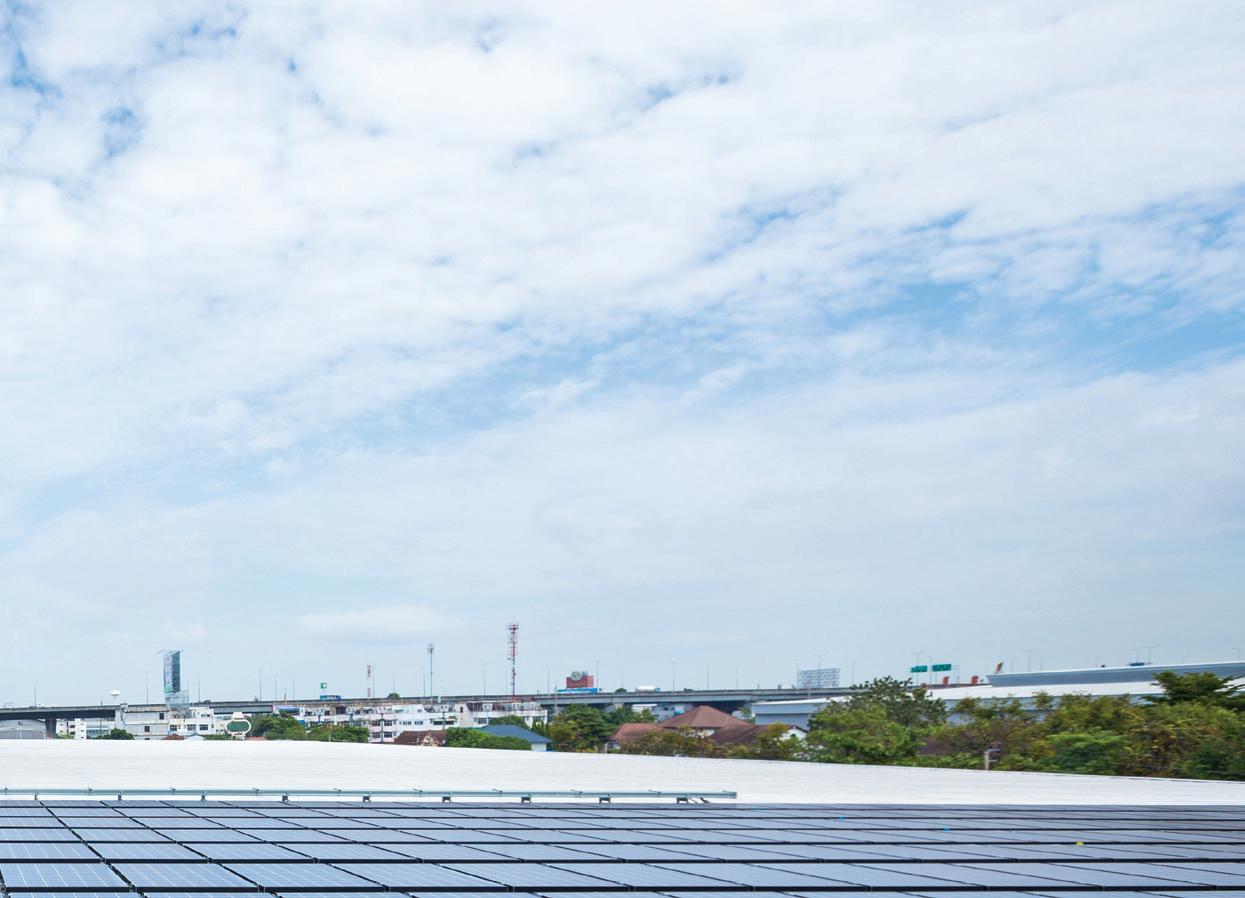
https://microgridknowledge.com/virtual-power-plant-defined/ https://arena.gov.au/projects/agl-virtual-power-plant/ https://aemo.com.au/en/initiatives/major-programs/nem-distributed-energy-resources-der-program/pilots-and-trials/virtual-power-plant-vpp-demonstrations
85
DISTRIBUTED GENERATION

EMPOWERING DER THROUGH DYNAMIC OPERATING ENVELOPES
by Professor Lachlan Blackhall, Head, Battery Storage and Grid Integration Program, Australian National University
It is widely acknowledged that DER can contribute to energy reliability and energy security, reduce power bills and support energy equity, all of which represent significant benefits to our electricity system. However, without appropriate coordination, DER can result in dynamic two-way flows of energy that threaten the physical or operational limits of electricity distribution networks.
In this context, there are open questions about what new technology capabilities, regulations and market mechanisms are necessary to support the integration of DER without breaching the physical and operational limits of distribution networks. Through our work in the ARENA and NSW Government-funded evolve DER Project, we are exploring the use of dynamic operating envelopes as one way of addressing these questions.
A dynamic operating envelope supports DER integration by providing a clear signal of the available power transfer capacity (both generation and load) that can be accommodated by each DER customer before physical or operational limits of a distribution network are breached.
Dynamic operating envelopes thus provide limits at the customer connection which change over time and allow owners of DER to choose how to respond when the distribution network is reaching technical and operational limits.
While dynamic operating envelopes have emerged as a mechanism for managing the significant reverse flows of energy experienced due to the rapid uptake of solar PV, their usefulness extends well beyond that.
As an example, for customers with both solar PV and batteries, the dynamic operating envelope signals implicitly that it is better to defer charging of the battery until peak periods of energy generation (i.e. during the middle of the day).
This example highlights one of the advantages of dynamic operating envelopes in that they provide clear signals to customers about how to modify DER asset behaviour, without being prescriptive about how this is achieved. Deferring battery charging in this way to soak up solar generation when it might cause network voltage or thermal breaches is unlikely to reduce the total generation, nor impact the return on investment of solar PV or battery storage.
Dynamic operating envelopes don’t just help support the integration of solar PV and battery storage – they will also be foundational in supporting the integration of electric vehicles.
As all cars become electric, there could be significant distribution network impacts due to the correlated charging of electric vehicles. In this scenario, a dynamic operating envelope would provide a clear signal to customers to defer or reduce the power of EV charging to avoid breaching voltage or thermal constraints in the network.
Last but certainly not least, one of the key use cases identified for dynamic operating envelopes is that the additional network capacity can be used by DER assets to participate in markets for energy and ancillary services.
In this context, DER assets can participate in markets only up to the limit of the operating envelope. This ensures that DER market participation cannot infringe the safe and secure operating limits of the electricity distribution network.

86 DISTRIBUTED GENERATION
Around Australia, we are currently seeing significant uptake of distributed energy resources (DER) including solar PV, residential and suburb-scale battery storage, and electric vehicles. Overwhelmingly, DER are being installed in the medium and low voltage segments of electricity distribution networks. Electricity distribution networks provide the electrical connection from customers to the overall electricity grid, allowing two-way energy flows between the customer and the system. For this reason, electricity distribution networks are said to provide the last mile of electrical connectivity.

Research conducted by the Battery Storage and Grid Integration Program at the Australian National University, has identified numerous advantages for using dynamic operating envelopes to support DER integration. For example, they can:
1. Enable greater hosting capacity for solar PV, battery storage and electric vehicles
2. Reduce network congestion, thereby avoiding costly network upgrades
3. Increase network utilisation, thereby reducing prices for all network consumers
4. Support new business models for DER aggregation and participation in markets for energy and ancillary services
5. Be simple to implement across a variety of different DER assets. This can reduce the compliance costs of DER integration broadly Implementing dynamic operating envelopes requires significant technical and technological development. Such development is the focus of the evolve
References:
Project. The project is developing new software and algorithms that implement dynamic operating envelopes across networks in QLD and NSW.
In particular, we are working on methods for calculating and communicating dynamic operating envelopes, including the implementation of standards-based communication approaches. Our recent ARENA knowledge sharing report1 delves further into the calculation and use of dynamic operating envelopes.
While implementing dynamic operating envelopes requires a strong focus on developing new technical and technological capabilities there are also important social, economic and regulatory issues that also need to be considered.
Key amongst these issues are the principles by which dynamic operating envelopes allocate the available network capacity. This has important implications for supporting customer equity and social license for the uptake of dynamic operating envelopes.
We are exploring these crucial issues
further as founding members of the Dynamic Operating Envelopes Working Group2 that is running as part of the Distributed Energy Integration Program (DEIP). Through this working group, we are engaging broadly with stakeholders and working through the breadth of socio-techno-economic development and regulatory reforms that will be needed to see dynamic operating envelopes adopted nationally.
As the amount of DER continues to grow over the coming decades, it is vital that we enable our electricity and energy system to accommodate and support the participation of DER. Our work on dynamic operating envelopes is key to achieving this important outcome.
While dynamic operating envelopes are one of the foundational components of integrating DER, they are only one of the new capabilities and systems that are needed to support the integration of DER. Through our current and future work, we look forward to designing the building blocks of a fully DER-enabled system to unlock the benefits of DER for all energy users.
1 https://arena.gov.au/assets/2020/09/on-the-calculation-and-use-of-dynamic-operating-envelopes.pdf
2 https://arena.gov.au/knowledge-innovation/distributed-energy-integration-program/dynamic-operating-envelopes-workstream/

87 DISTRIBUTED GENERATION
PIPING SPECIALTY SUPPLY SERVICES ANNOUNCED AS SPECIALTY POLYMER COATINGS AUSTRALIAN DEALER
Matt Alliston, Vice President of Specialty Polymer Coatings (SPC), and John Wilton, Managing Director of Piping Specialty Supply Services (PSSS), are pleased to announce the appointment of PSSS as the premier dealer here in Australia for the SPC range of polymer coatings and accessories.
Mr Alliston explained, “We have chosen PSSS for its proven ability to not only sell our specialist products, but also because it has the technical expertise and required infrastructure to promote our products in Australasia.”
SPC has been formulating, manufacturing and distributing state-of-the-art, 100 per cent solid (no volatile organic compounds), multi-component liquid (MCL) epoxies and polyurethane coatings.
These materials have been formulated to provide the customer with the benefit of a single coat application and the ability to provide a film thickness of greater than 50mils/1250µm without sagging or compromising flexibility.
SPC has a broad line of coating systems which are used extensively in the pipeline industry, as linings for tanks (acids, alkaline, sewage, potable water, crude oil and a myriad of various petrochemical services), and various steel structures as well as marine docks and ship applications.
SPC’s innovative formulations can provide protection from corrosion along with chemical and abrasive resistance up to elevated temperatures of 180 degrees celsius. SPC’s internal tank linings are suitable for a multitude of services.
Mr Wilton explained that his interest in SPC came down to its proven track record with its polymer coating products and accessories – SPC has been supplying and developing its range for more than 28 years.
Mr Wilton added, “This partnership grew from an existing client's need for polymer coatings, and we are looking forward to bringing this range to all of our existing customers and our ever-growing client base. I also believe these products will complement our existing range of piping products.”
Contact Piping Specialty Supply Services on 1300 794 096 or sales@psssa.com.au for more details.

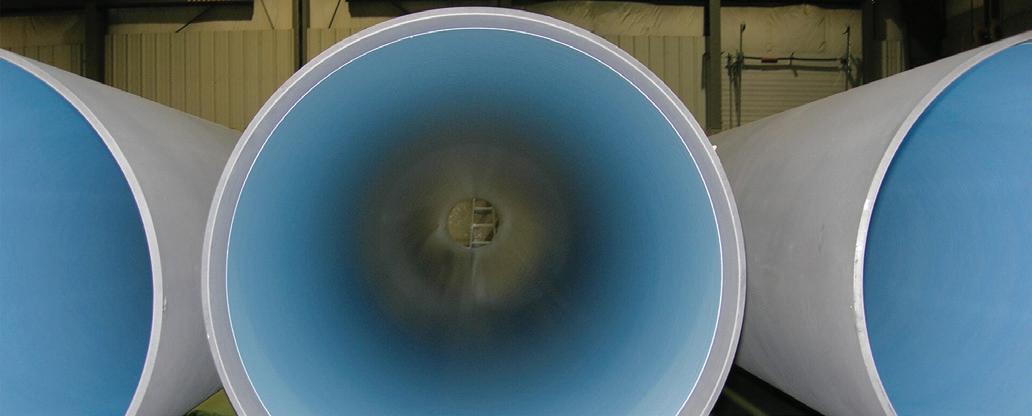
UTILITY • FEBRUARY 2021 WWW.UTILITYMAGAZINE.COM.AU 88
EMBEDDED NETWORKS | Utility Partner Solutions


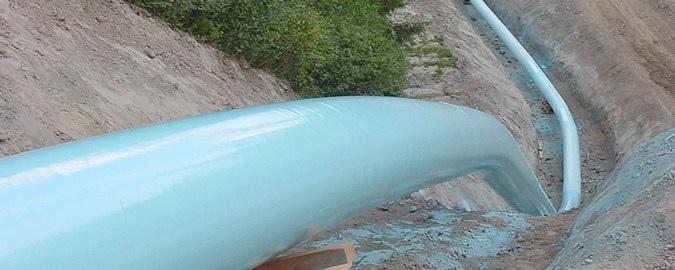




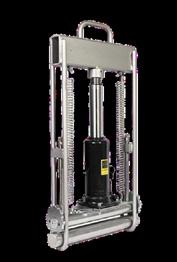

Pipe Protection
Your go-to supplier for all things piping Specialty Polymer Coatings 1300 794 096 www.psssa.com.au sales@psssa.com.au PipeTools,equipment and welding for thewater, gas and constructionindustries.
HDPE Tooling Pipe Handling Hot Tapping & Line Stopping
PSSS also offers.....

A BETTER DEAL FOR EMBEDDED NETWORK CUSTOMERS
All Victorians now have access to a fairer electricity deal with the Victorian Default Offer being set as the new maximum price for electricity sold to embedded network customers.
90 EMBEDDED NETWORKS

In July 2020, the Essential Services Commission (ESC) made a final decision on the maximum prices exempt sellers may charge customers in embedded electricity networks.
Exempt sellers include owners and operators of caravan parks, retirement villages, shopping centres, apartment buildings, rooming houses and others who sell electricity to customers through an embedded network. Generally, an exempt seller buys electricity at a ‘gate’ meter and on-sells it to individual customers within the embedded network.
Previously, the maximum price exempt sellers could charge their customers was the local area retailer’s standing offer prices that were in place on or immediately prior to 27 May 2019. This maximum price was significantly higher than the maximum price licensed sellers must comply with under the Victorian Default Offer.
The ESC determined that embedded network customers should have access to price protections that are as consistent as possible with those applying to customers able to access market offers.
The maximum price for residential and small business customers (those consuming no more than 40 megawatt hours of electricity per year) within embedded networks is now set at the level of the Victorian Default Offer.
The Victorian Default Offer, introduced in 2019 as part of reforms introduced by the Victorian Government to make energy more affordable for households, reflects the independent regulator’s view of the efficient price of supplying electricity in Victoria.
The new pricing for embedded networks commenced on 1 September 2020, and embedded network operators can still offer customers deals below the maximum price.
ENERGY AFFORDABILITY UNDER SCRUTINY
In February 2020, the ESC released its consultation paper on the maximum prices that embedded networks and other exempt sellers could charge customers.
In response, the ESC received 34 submissions which informed the proposal set out in its draft decision. The ESC consulted on its draft decision between May and June 2020. Interested parties could post a question and receive a public response from the project team. Stakeholders
could also provide a general comment or make a formal submission on the draft decision. The ESC held an online public forum on 28 May 2020 which was attended by more than 50 stakeholders, who provided feedback and submitted questions on the draft decision. The ESC released its final decision on 28 July 2020.
The ESC’s Pricing Director, Marcus Crudden, said the change gives additional protections to Victorians living in embedded networks.
“Embedded network customers have not been fully covered by the same price protections as other Victorians. This ensures they now have access to a fair deal with significant savings for some,” Mr Crudden said.
“From 1 September, residential embedded network customers could save between $180 to $360 while small businesses could save $900 to $2,200 annually, based on the current default offer.”
Maximum prices for exempt sellers will automatically update to align with pricing resets for the Victorian Default Offer, which expired at the end of 2020.
At the time of going to print, the ESC had undertaken engagement on a new default offer price that would apply from 1 January 2021.
In a draft decision released on 15 September 2020, the Victorian Default Offer would fall by nine per cent or around $575 a year on average for small business, and seven per cent or around $105 per year for households.
Mr Crudden said the proposed reduction to the default offer was based on falling wholesale electricity prices.
“Our analysis shows the cost of purchasing wholesale electricity has fallen and we believe this should be passed onto consumers to save on their energy bills,” Mr Crudden said.
“A number of submissions noted uncertainties about the impact of the Coronavirus pandemic on Victorian consumers and retailers, and we are seeking updated information from stakeholders to inform our final decision.
“We are mindful of the risks facing retailers at the moment and at the same time, we need to set a reasonable price that reflects the efficient costs of delivering retail electricity to customers.”

UTILITY • FEBRUARY 2021 WWW.UTILITYMAGAZINE.COM.AU 91 EMBEDDED NETWORKS
Fixed and portable internet FOR REMOTE UTILITY OPERATIONS
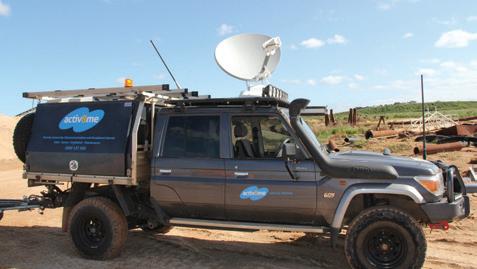
The increasing adoption of remote monitoring systems and near real-time analysis of data flows to and from facilities has necessitated a constant, reliable internet service on every site. The necessity of connectivity for continued operation is just as pressing for permanent, fixed sites as it is for temporary field sites.
With consistent data flows being a standard requirement both for operational functionality and safety and compliance, isolated locations can present significant challenges for utility operators, with ongoing operations dependent on continuous internet service in regions with very limited or no existing communications infrastructure.
With unlimited satellite internet for fixed and portable utility operations, Activ8me’s custom-built hardware facilitates business-grade communications anywhere, with auto-aligning satellite dishes able to have a service operational in under ten minutes.

FIXED SATELLITE SOLUTIONS
With custom contention rates and enhanced business service-level agreements (SLA), Activ8me solutions enable continuous, uninterrupted service: a common requirement both for operational functionality as well as safety and compliance.
Services can be customised based on requirements, however a typical service includes a 30Mbps download/5Mbps upload speed tier on a 20:1 contention.
Services are augmented to meet the unique requirements of its clients, taking into account expected usage of the connection, the volume of users, types of applications and much more to ascertain bandwidth requirements.
Reliable, business-grade internet is critical to the success of utility operations. With Activ8me Business Services’ satellite solutions, remote sites can be connected online no matter how limited the local connectivity options may be.
IoT connections, for instance, are configured to handle the large amounts of small data packets, routinely transferred to and from IoT networks every few seconds. For IoT, a connection of 5Mbps down/5Mbps up with 35:1 contention provides optimal connectivity.
Up to 20 users or hundreds of small IoT devices can share a ‘pipe’, with customised contention and speed tiers coordinated to best suit the operational aim of the network.
DRP SOLUTION
The solution can be used as a redundancy network to backup existing fibre-optic or microwave networks, ensuring that operations can stay up and running in the event of a primary network failure.
PORTABLE INTERNET
These same satellite data services are available in portable solutions, allowing for easy transport and relocation. The satellite dish can be mounted on a vehicle or trailer, be set up using a non-penetrable ground mount, or even built into a case.
This mobile-on-the-pause solution is perfect for projects with changing locations or remote project teams. WiFi networks are built into Activ8me’s portable satellite hardware, with optional WiFi antenna for extended range of up to 100m.
BESPOKE SOLUTIONS
With an in-house R&D team, Activ8me often designs customised hardware to meet the unique demands of its clients. Additional functionality can also be built into existing hardware when required.
Point-to-Point and extended WiFi can offer connections over extended distances, while WiFi-Mesh networks and LoraWAN technology can also be incorporated into network architecture.
Utilising these various technologies, Activ8me can formulate an end-to-end networking solution to suit practically any use case.

UTILITY • FEBRUARY 2021 WWW.UTILITYMAGAZINE.COM.AU 92
MAPPING, GIS & SURVEYING | Utility Partner Solutions
Visit business.activ8me.net.au for more information.
Enterprise-Grade Internet & Phone for Remote Sites
Activ8me Business Services offers communications solutions for utility operators in remote Australia.
Our solutions include:
Unlimited data plans
Low contention rates
Fixed or portable hardware
Solar, self-sufficient options
Optional P2P, Extended Wi-Fi and Public Wi-Fi
Installation & Field Support Australia-wide
Our solutions overcome the communications limitations of operating in remote locations.
With our internet services, operators can access Cloud-based applications, integrate remote monitoring and utilise M2M/IoT technologies.
No matter your challenge, we offer scalable solutions to meet any requirement. Our in-house team can even design a bespoke solution to fit your needs.
For more information contact our Corporate Sales team or visit: business.activ8me.net.au


Supporting 13 22 88 Contact Us Business Services
CUTTING-EDGE CARTOGRAPHY: DIGITAL MAPPING FOR IMPROVED VEGETATION
MANAGEMENT
by Imogen Hartmann, Journalist

UTILITY • FEBRUARY 2021 WWW.UTILITYMAGAZINE.COM.AU 94 MAPPING, GIS & SURVEYING
Victorian Power Networks (VPN) (encompassing the CitiPower and Powercor networks) and United Energy (UE) own and operate large electricity distribution networks, totalling over 850,000 poles and more than 800,000km of line. VPN and UE are required to comply with strict regulations governing the design, configuration and environment of their assets as safely and cost-effectively as possible. The LiDAR Lab project is helping achieve both improved safety outcomes and reduced costs by creating a digital map of network infrastructure.
Light Detection and Ranging (LiDAR) is a surveying method that measures distance to a target by illuminating the target with a pulsed laser light, and measuring the reflected pulses with a sensor, usually from a helicopter or fixed-wing aircraft.
In a similar fashion to how radar uses radio waves to measure the distances between objects, LiDAR uses pulsed lasers emitted from an aerial vehicle to create a digital model of the terrain.
VPN and UE previously used an external provider to survey infrastructure from the air and process the data, which would help find areas where vegetation management or other asset maintenance was required. Thereafter, VPN and UE would load the data onto their systems and use the results to inform their work programs.
The LiDAR Lab project saw all LiDAR services moved in-house at the end of 2020 to improve the quality, minimise risks, reduce work hours and costs.
A United Energy spokesperson said, “Through the innovative LiDAR Lab project and a dedicated team, we are building new capabilities, while continuing to use the technology to ensure a safe and reliable network, and to meet regulatory obligations.
“Moving LiDAR services in-house has allowed our business to tailor the systems and processes specifically for our networks and affords us the flexibility to rapidly change processes in response to environment changes, regulatory changes or commercial changes that affect our distribution networks.”
• By having full control of the raw LiDAR data and processing activities, VPN and UE have:
• Created 3D network models and simulated sag and sway of the conductors under a variety of circumstances
• Used the LiDAR to improve the spatial accuracy of the poles
• Measured a range of other clearances, like circuit to circuit, phase to phase and conductor to ground
In December 2020, VPN announced that two new Bell 505 helicopters would be conducting vegetation and powerline inspections, establishing a unique aerial services capability to support Powercor’s annual vegetation management program.
The helicopters are operated by the network’s affiliate business, Beon Aerial Services, will fly above powerlines at just over 300m at a speed of about 130km/h.
They have been fitted with a Riegl sensor system, which uses advanced LiDAR technology to scan for vegetation growing too close to powerlines.
Powercor Head of Vegetation Management, Hugh VickersWillis, said bringing Powercor’s air inspections ‘in house’, rather than using external contractors, will deliver significant improvements, including better efficiency, flexibility, safety and data quality.
“By improving our aerial services capability and technology we can further reduce the risk of bushfires and improve network reliability,” Mr Vickers-Willis said.
“The helicopters allow us to have more control over when and where we inspect our networks. For example, we can conduct additional inspections throughout the year, including ahead of the bushfire season in our highest risk areas, or respond quickly if conditions change in a particular part of the network.”

THE NEED FOR LIDAR SURVEILLANCE
Because of the risk of bushfires when vegetation comes into contact with powerlines, the impact of not knowing the state of VPN and UE’s network infrastructure could be catastrophic.
LiDAR Lab is driving efficiencies across both VPN and UE. Where manual inspections would normally take over three years to complete, the use of LiDAR can cover the CitiPower, Powercor and United Energy networks in just a few months.
Similarly, outputs from the LiDAR Lab project will be available for other network functions to utilise in order to improve safety, reduce risk, create business efficiencies and drive down costs. The accuracy of data obtained is also much more robust, as LiDAR lasers can measure distances to within 10cm.
VPN and UE’s vegetation management group has previously used manual processes to data cleanse more than 500,000 LiDAR records for use within existing vegetation management systems. Staff would manually run LiDAR records through macro-enabled spreadsheets to correct errors and manage field works.
UTILITY • FEBRUARY 2021 WWW.UTILITYMAGAZINE.COM.AU 95 MAPPING, GIS & SURVEYING
The LiDAR Lab project eliminates the need for these manual processes and uses machine learning and algorithms instead to streamline the end-to-end process, and by automating these processes the risk of catastrophic errors is much lower.
Vegetation growth prediction algorithms can be used to predict when and where vegetation will encroach into the conductor clearance space years into the future, making VPN and UE’s infrastructure safer, enabling better forecasting of work, reducing the risk of bushfires and saving thousands of valuable work hours.
“The processing of LiDAR data is performed by a series of algorithms running on our cloud analytics platform,” the United Energy spokesperson said.
“We require the elasticity of the cloud infrastructure to process tens of thousands of large LiDAR files in only a few hours.
“The algorithms themselves are very computer intensive as they model the network, determine the measurements, predict the movement of the network and predict the movement of the environment.
“We have a small but very skilful Dev/Ops product team that follows quite well established Agile and Lean product development practices.
“Our fortnightly release cycle means that if our organisation has a priority LiDAR inspection feature, they never have to wait more than two weeks.
“Using machine learning approaches is as much about efficiency as it is about accuracy to our product team.
“Our algorithms continue to produce improved results span after span, but also mean that the data science and software development can be targeted at the next problem.”
Another issue the LiDAR Lab project is looking to improve upon is the management of historical data. By effectively creating a digital map of the CitiPower, Powercor and United Energy networks, issues and trends will be easier to track and project.
LEADING THE WAY IN VEGETATION MANAGEMENT
Currently, LiDAR Lab is mainly used for vegetation management across VPN and UE, with the data helping to determine where, and to what extent, vegetation intrusions are occurring on spans on infrastructure. It’s helped VPN and UE to prioritise the annual vegetation management program to ensure cutting is carried out across spans with the worst encroachment of vegetation.

UTILITY • FEBRUARY 2021 WWW.UTILITYMAGAZINE.COM.AU 96 MAPPING, GIS & SURVEYING
Data obtained from the LiDAR Lab project is also being used for other applications that help VPN and UE meet their regulatory requirements, including measuring distances between conductors on multi-circuit spans and at pole structures to identify potential clearance infringements.

It can also help measure the position of conductors relative to the ground, clearances to buildings, and structure and pole lean. This, in conjunction with smart meter data, affords the ability to calculate actual conductor temperatures for sag and sway, enabling VPN and UE to more accurately model worst-case scenarios.








The networks have a number of reliability, line clearance and bushfire mitigation targets and obligations. LiDAR automation and technology are able to address these at a lower cost than traditional network approaches.
By merging LiDAR hardware with VPN and UE technology, LiDAR Lab mapping capabilities have advanced beyond what most service providers can achieve.
LiDAR Lab algorithms are expected to soon be able to construct a ‘digital twin’ of the entire network, which will have fresh data as well as new imagery loaded into it every year from the capturing phase. This is seen as one of the major long-term outputs from the LiDAR Lab project and will be beneficial to other teams within the businesses.
“A digital twin of the network that allows all of the systems, employees and potentially customers to reliably get a view of network characteristics or perform some ‘what if’ analysis is the ultimate goal,” the United Energy spokesperson said.
VPN and UE have come a long way since the introduction of the LiDAR Lab project and are slowly building new capabilities. The potential of other applications of the data are slowly being realised, but the priority remains using it to ensure a safe and reliable network, and to meet regulatory obligations.
The project was a finalist in the Best use of New Technology category at the 2020 Digital Utility Awards.



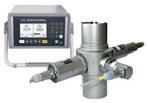
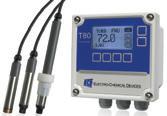





UTILITY • FEBRUARY 2021 WWW.UTILITYMAGAZINE.COM.AU 97 MAPPING, GIS & SURVEYING NSW Ph: 02 8197 2825 WA Ph: 08 9201 0948 QLD Ph: 07 3333 2825 SA Ph: 03 9017 8225 Head Office: Unit 20, 51 Kalman Drv Boronia VIC 3155 Ph: 03 9017 8225 Fax: 03 9729 9604 www.ams-ic.com.au sales@ams-ic.com.au AMS Instrumentation & Calibration Pty Ltd Analytical Process Division Oxygen Analysers, Thermal Conductivity Analysers, NDIR Analysers, Multigas Analysers, OEM Analysers U.V Absorption Conductivity pH / ORP Colour Industrial Water Analysers and Liquid Analytical Products (pH, Conductivity, ORP, Dissolved Oxygen, etc) Oxygen Analysers, Relative Humidity Sensors and Meters, Dewpoint Measurement
RIDGID® DIAGNOSTICS, LINE INSPECTION AND LOCATION
Find it faster with RIDGID utility location equipment. RIDGID utility locators feature an easy-to-use visual mapping display that allows the location of utility lines and sondes with confidence.


These locators can be used with RIDGID SeeSnake® cameras equipped with sonde transmitters to find the camera head during a pipe inspection. They can also be used in conjunction with a line transmitter to find buried utilities and electric, cable, water, gas, telecom, drain and sewer lines.
RIDGID SeeSnake camera reels are premier diagnostic systems that take pipe inspections to the next level. Offering unmatched reliability with exceptional in-pipe viewing, SeeSnake camera reels feature a variety of push cables that are stiff enough to push out long runs, yet flexible enough to make tight turns. Rugged, small-diameter cameras feature powerful LEDs that illuminate the pipe's interior, providing crisp, clear in-pipe imaging.
RIDGID SeeSnake cameras with TruSenseTM technology bring powerful data capability to diagnostics. TruSense establishes a two-way data path between the camera head and a connected SeeSnake CSx series WiFi-enabled monitor. With TruSense, advanced sensors on the camera head – including High Dynamic Range (HDR) and TiltSenseTM – convey valuable information about the in-pipe environment.
HDR provides superior clarity and detail for very dark spaces and blow out areas. Down pipe visibility is vastly improved with HDR giving more clearly defined detail of pipe characteristics. Rugged, high-intensity LEDs in the camera head provide exceptional viewing and long life, and a selflevelling camera head keeps the image upright (only available for certain models).
TruSense also includes an integrated TiltSense feature that reports back the pitch of the camera inside the pipe. This oncamera inclinometer helps accurately identify and diagnose problems underground.
The entire line of RIDGID SeeSnake digital reporting monitors comes equipped with WiFi connectivity. Stream inspections to your iOS or Android device with the free HQx Live companion app. Every RIDGID SeeSnake monitor integrates seamlessly with SeeSnake camera reels. Use a RIDGID monitor to stream to a second screen and generate detailed reports in the field.
The Ridge Tool Company is a world-leading manufacturer of professional quality pipe and tube working tools serving the plumbing, mechanical, construction, HVAC, location, electrical and facility maintenance industries. The RIDGID trademark is recognised by professional tradespersons and engineers for uncompromising product quality, performance, durability and service.
For more information, contact Ridge Tool Australia on 1800 743 443 or email ridgid.australia@emerson.com.



UTILITY • FEBRUARY 2021 WWW.UTILITYMAGAZINE.COM.AU 98
MAPPING, GIS & SURVEYING | Utility Partner Solutions




THE SKY’S THE LIMIT: IMPROVING ASSET MANAGEMENT WITH DRONES

Technology has become a major part of our modern world, helping to make life easier and safer for many – and utilities are no different. For Gippsland Water, the implementation of advanced technology into its operations has been a nobrainer, with the water utility embracing the use of drone technology over the past few years to help improve the way its team carries out essential tasks, like inspecting sites with limited access.
Gippsland Water, which is responsible for maintaining a $1 billion infrastructure network, has been using drone technology to assist in asset inspections since 2016. Since implementation, the technology has helped to improve safety, deliver cost-savings and take the organisation's operations to the next level.
MANAGING AND MONITORING ASSETS WITH DRONES
Sarah Cumming, Managing Director at Gippsland Water, said that the utility has a lot of infrastructure that can be difficult to access, like large water towers, and that the drones have been instrumental in improving the way the organisation’s teams are able to inspect these essential assets.
“Flying a drone around a water tower to take video can eliminate the need to work from heights and enable us to perform an inspection from the safety of the ground,” Ms Cumming said.
“Then a year later, at the click of a button, we can record the exact same path to observe if there are any changes to that tower worth investigating.”
Drones have also been used by Gippsland Water to create maps, monitor environmental sites and perform land surveys.
Ms Cumming said that the organisation’s maintenance engineers have used the drones to create photographic 2D maps and 3D models of various sites by hovering the drones above the site, taking hundreds of photographs and stitching them all together to create a comprehensive and detailed image.
“From a computer in our Traralgon office, our engineers are using 3D models of our facilities to plot exactly where new buildings can be located before any detailed designs are completed.”
Gippsland Water General Manager Operations, Chris Wood, said that the use of drones has helped Gippsland Water with land and environmental management, and assisted with water quality monitoring across its network.
UTILITY • FEBRUARY 2021 WWW.UTILITYMAGAZINE.COM.AU 100
DRONES

“We manage multiple catchments and raw water sources across Gippsland. Using drones we can monitor without having to physically access the water storage. Monitoring includes looking for algae or signs of leaks,” Mr Wood said.
“We’re now looking at ways to monitor our catchments if they are affected by environmental events, as well as the performance of some of our hardwood plantations.
“We’ve also used drone photography and videography to monitor performance of an algaecide trial in one of our raw water basins. Drones have also been used in engineering maintenance works because of a drone’s ability to take aerial distance measurements to help carry out earthworks.”

IMPROVING SAFETY AND SAVING TIME
For all organisations, safety is a major priority. Mr Wood said that by using drones, Gippsland Water is able to perform some of the tasks involved with asset inspection more safely and are able to collate consistent results in more costeffective ways.
“At this stage, the savings have been in time and effort, as well as benefits to safety and quality. Drones have given us opportunities to do things that would have been unachievable or too costly in the past,” Mr Wood said.
“For instance, one safety improvement is using the drones to inspect tanks. This removes the need for elevated work platforms or staff having to climb ladders with harnesses to access the tanks.
“We usually outsource aerial photography, 3D scanning and surveys – however as our capabilities grow, we might be able to move some of those things in-house.”
Gippsland Water is also careful to ensure that all its drone operations are undertaken in accordance with aviation rules and regulations.
“We have a remotely piloted aircraft policy and procedure and an Aviation Reference Number (ARN) to ensure we’re complying with all requirements,” Mr Wood said.
PROTECTING AND UTILISING DATA
With the implementation of drone technology comes vast amounts of data. For Gippsland Water, one of the biggest challenges has been understanding what to do with this data and how its employees can benefit most from these datasets.
“This has been a big challenge for us and it’s why we’re still trialling many drone applications. To capture a single site can require terabytes of raw data, with processed data requiring even further terabytes,” Mr Wood said.
“We’re trialling these applications, capturing only sections of smaller sites and only storing the raw data for now. We’re working to upgrade our systems so they can process and store these large datasets in a way that can be shared across the organisation, while complying with our strict security protocols.”
In addition to finding the best way to manage the new large datasets, Gippsland Water has had to consider how it will protect this confidential information and the future of data security in the organisation.
“Just like data size, ensuring data security is a major hurdle in the development of all our geographic information system (GIS) applications for drone data storage,” Mr Wood said.
“With so many potential solutions being cloud-based, we have prioritised data security over everything else, which is why all these applications are still in development.”
THE FUTURE FOR DRONE TECHNOLOGY
While the use of drones at Gippsland Water is still in its infancy, the utility is making major strides as a leader of drone technology in the water sector by looking at further opportunities for the future.
“At this stage, we’re focused on growing the photogrammetry applications with our existing drone hardware and looking forward to implementing the data we’ve captured so far into our existing GIS system,” Mr Wood said.
“We’re also looking to the future, aware that drones are an emerging technology that will become key to our industry and many others.
“We’d like to explore the use of higher-level drones with multispectral and real-time kinematic (RTK) capability, aware that this requires capital investment and increased resourcing.”
UTILITY • FEBRUARY 2021 WWW.UTILITYMAGAZINE.COM.AU 101
DRONES
MICROTUNNELLING
Why should you consider mobility when selecting a microtunnelling contractor?
When selecting a microtunnelling contractor, mobility is perhaps not one of the criteria that is top of mind; cost, timeframe for project delivery and safety are higher considerations, and rightly so. However, mobility can also impact these factors, increasing efficiency, productivity and ensuring the installation is completed to a high standard, so it is worth keeping it in mind when selecting a contractor.
A MOBILE CREW
A key benefit of selecting a mobile contractor is their ability to arrive at the jobsite, no matter the location, in a short timeframe, and with the correct equipment – including spare parts and backups – and a sufficient number of personnel to carry out the works. This results in a high level of project efficiency, which is something all project managers want to achieve, as it will ensure the trenchless crossing is completed on schedule so the rest of the project can continue to the expected time frame.
It is also likely that a mobile contractor has a greater wealth of experience and expertise across a wider range of ground conditions compared to a contractor that works in only one region, as they have had the chance to work on jobsites around the country.
This experience is paramount to achieving a successful outcome for a microtunnelling project, as there is less chance that an unexpected complication will occuring due to ground conditions changing mid-drill or being different to what was expected. A contractor that has dealt with a wide range of ground conditions before will be able to make a quick and confident decision about how to best adapt
the cutter face to ensure minimal project time is lost. This is something that only comes with the experience from working on projects in a variety of locations.
For example, Edge Underground has between four to six mobile crews at a time, depending on demand, and through years worth of experience in Australia and overseas we have developed a system for transporting equipment and organising personnel that is efficient and seamless. As we have multiple crews, we also have the option to split up teams to bring more personnel onto a job if required.
Since our teams are permanently set up to be selfsufficient and mobile, for us to travel to another part of the state or to a different state, the only thing we require is for accommodation to be sorted out, and maybe to source local support for engineering or basic jobsite requirements.
A MOBILE FLEET
Mobility of a contractors machine fleet also becomes an important consideration when it comes to transporting equipment and the site footprint.
Using a contractor that has modular equipment means they can move between job sites quickly and easily as they can tailor which equipment they transport to suit the project and site conditions.
The AXIS machine was designed to be modular to allow contractors to move around quickly and easily, and to be transported using a number of different truck or trailer setup options and configured to suit the customers needs.
Mobility therefore can have a big impact on those other front of mind factors, and should be taken into consideration when selecting a microtunnelling contractor.
ABOUT STUART HARRISON
Global microtunnelling pioneer Stuart Harrison is the Managing Director of Edge Underground, where he specialises in on-grade microtunnelling installations with millimetre accuracy.
Stuart is also the inventor of the AXIS Guided Boring system, and he is constantly working to improve the effectiveness of this and other trenchless systems used in the installation of gravity sewers.
To discuss your next microtunnelling installation, contact Stuart on 1300 JACKED or at stuart@edgeunderground.co
102 UTILITY • FEBRUARY 2021 WWW.UTILITYMAGAZINE.COM.AU
Looking for a complete solution for online events?

Combining our experience in publishing, live events, digital marketing and video production, Monkey Media has the capability to deliver a range of online events for your organisation.
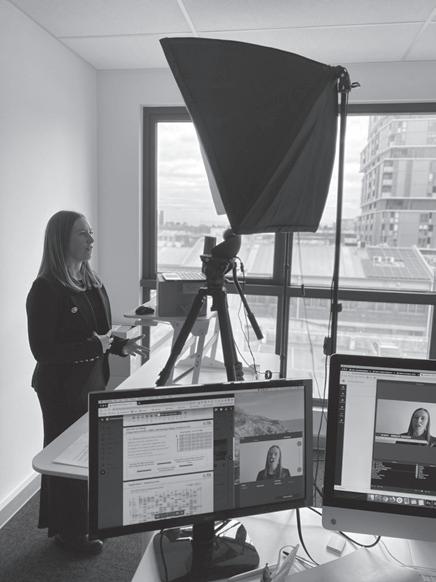
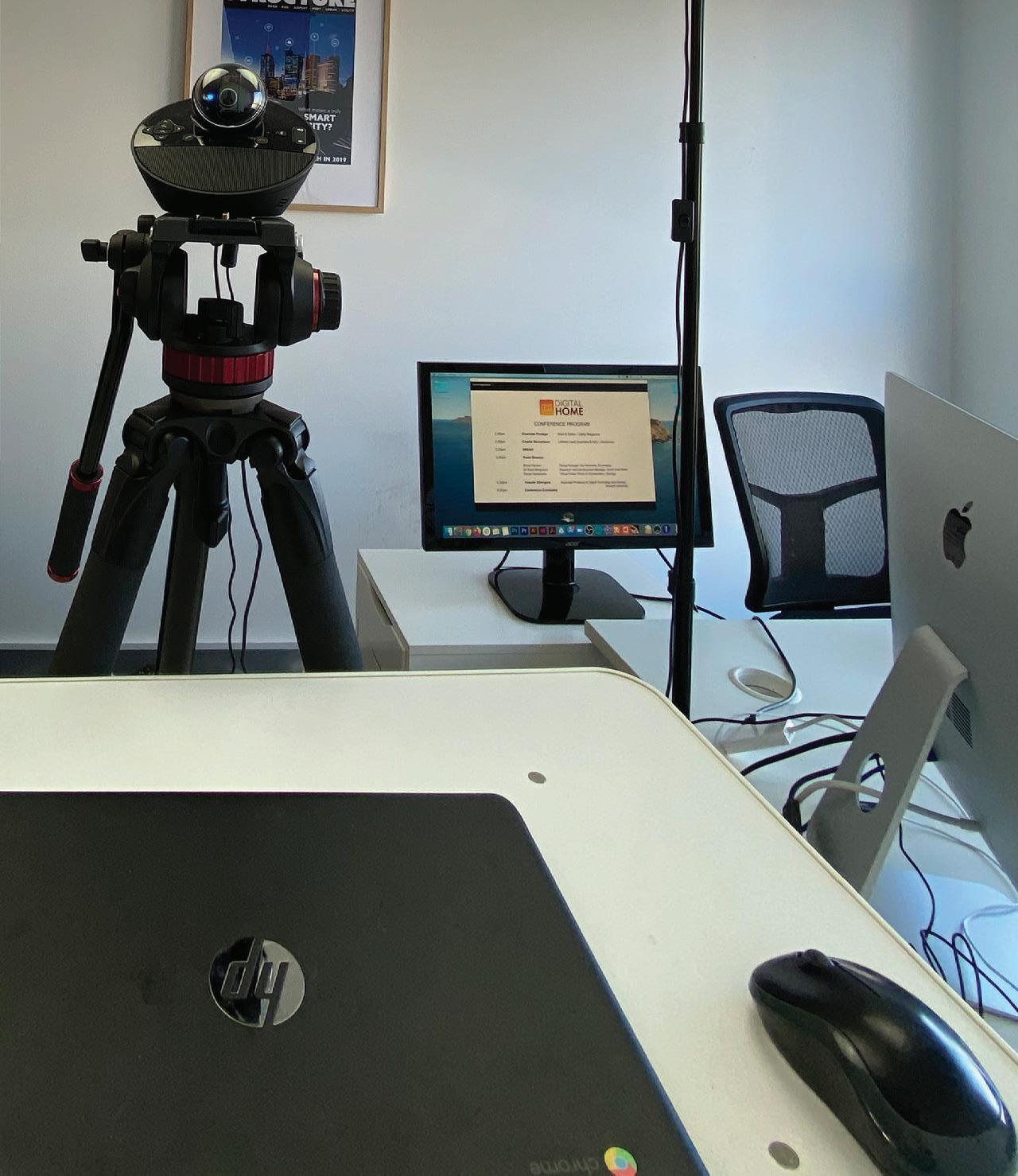

Specialising in the energy, infrastructure and utility sectors, we combine our expert knowledge in these fields with our behind-the-scenes knowhow to help you deliver your events in a range of online formats.
We work closely with our partners to understand why and how you want to connect with your audience online, and can recommend the right solution to help you cut through and achieve the high levels of audience engagement and participation you’re looking for.
Some of the online events we can help you deliver include:
Webinars
Virtual conferences
Awards nights
Round tables
Online learning for a complete online event solution
9988 4950
03
www.monkeymedia.com.au/services/custom-virtual-events/
MAY 2021
AUGUST 2021
NOVEMBER 2021
MAJOR FEATURES
RENEWABLES
CORROSION
DISASTER MANAGEMENT
RETAIL, BILLING & CRM
SPECIAL FOCUS
TRANSFORMERS & SUBSTATIONS
PIPELINE INTEGRITY & LEAK DETECTION DAMS LAND ACCESS
FEBRUARY 2022
MAJOR FEATURES
BIG DATA
CYBER SECURITY
SOLAR
SYDNEY WATER
SPECIAL FOCUS
MAPPING, GIS & SURVEYING
UTILITY LOCATION
SEWER REHABILITATION
EMBEDDED NETWORKS
DISTRIBUTED GENERATION
CUSTOMER EXPERIENCE EQUIPMENT & MACHINERY
UTILITY • FEBRUARY 2021 WWW.UTILITYMAGAZINE.COM.AU SECTION 104 EDITORIAL SCHEDULE Advertisers’ index Acceleon 47 activ8me 93 Alternative Lining Technologies 63 AMS Instrumentation & Calibration 97 Aussie Trenchless 55 Bintech Systems 19 Burkert Fluid Control Systems 53 Denso (Australia) 7 Edge Underground 13 Envirosonic Blue Green Algae Control IFC Harcor 10 IDS Australasia 5 Innovyze 27 Intelepower (Century Yuasa) 75 kwik-ZIP 25 Lanco Group 12 McRobert Contracting Services 67 Metasphere Australia 54 Milwaukee Tools 76-77 Monkey Media 103 One Sense 51 Pezzimenti Trenchless 60 Piping Specialty Supply Service 89 Polymaster 15 Programmed Facility Management OBC Projex Group 14 Pulsar Process Measurement 33 Raedlinger Primus Line 17 Ridge Tool Australia 99 Rycom Instruments 11 Safearth 73 Sewerquip 8 Steel Mains 35 SUEZ 9 Taggle Systems 34 Tracto-Technik Australia 56-57 True Water Australia 65 two 10 degrees 61 Vac Dig 16 VEGA Australia 39 Veolia Water Technologies (Australia) 18 Water Industry Operations Conference and Exhibitions.....IBC
MAJOR FEATURES WATER MANAGEMENT DEMAND MANAGEMENT ENERGY NETWORKS SUSTAINABILITY SPECIAL FOCUS INSPECTION, CCTV & CONDITION ASSESSMENT MOBILITY VEGETATION MANAGEMENT ENERGY STORAGE FUTURE FUELS EQUIPMENT & MACHINERY SMART METERS MICROTUNNELLING SALES DEADLINE 26 MARCH 2021 OZWATER AUSTRALIAN ENERGY STORAGE CONFERENCE AND EXHIBITION WIOA QLD EVENT DISTRIBUTION (TBC) EVENT DISTRIBUTION (TBC) EVENT DISTRIBUTION (TBC)
MAJOR FEATURES WATER OPERATIONS AND TREATMENT STORMWATER ASSET MANAGEMENT SMART GRIDS SPECIAL FOCUS GAS PIPELINES TRENCHLESS TECHNOLOGY IoT AND SCADA IRRIGATION WASTE MANAGEMENT EQUIPMENT & MACHINERY PUMPS, VALVES & FILTERS PIPE & CONDUIT
EQUIPMENT & MACHINERY HORIZONTAL DIRECTIONAL DRILLING (HDD) SALES DEADLINE 18 JUNE 2021 SALES DEADLINE 10 SEPTEMBER 2021
SAFETY
DRONES SWITCHGEAR
SALES DEADLINE TBC
EVENT DISTRIBUTION (TBC)
ENERGY 2021 WIOA NSW WIOA VIC
DIGITAL UTILITIES 2022 ALL

Water Industry Operations Conference & Exhibitions 2021
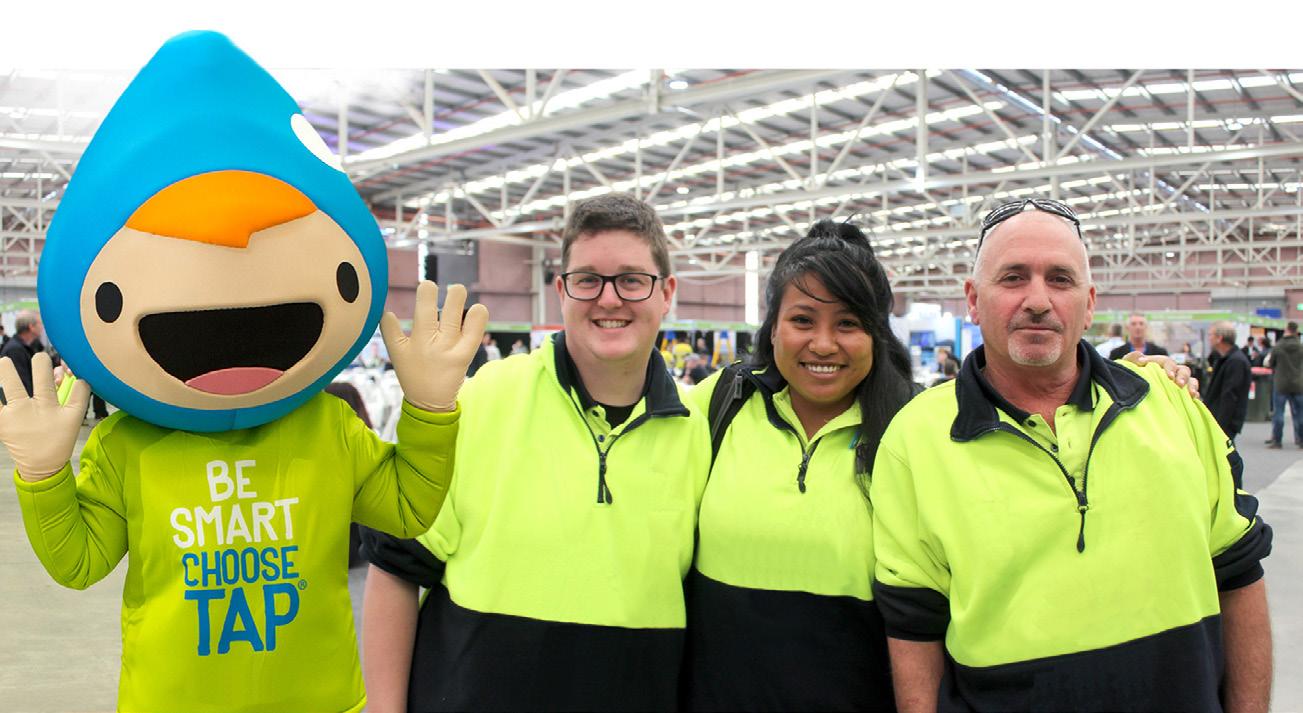
WIOA stages annual conferences in Queensland, Victoria and NSW providing a forum for individuals involved in water operations to:
• Listen and learn from the experience of others through the latest “operational” technical and research based information provided in platform and poster presentations.
• View and discuss the latest advances in technical equipment, products and services with equipment manufacturers, suppliers and industry consultants.
• Update their knowledge and skills through interaction with fellow water industry employees.





Personnel involved in the operation and maintenance of urban, rural and industrial water related infrastructure for the management, conveyance, treatment, discharge and reuse of water and trade wastes should attend these conferences. www.wioaconferences.org.au



Take advantage of the opportunity to position your company as a leader in water management by aligning your company as a supporter of the leading industry association serving the needs of operators in the water industry.
NSW 27+28 OCT SA 4+5 AUG VIC 1+2 SEPT
E info@wioa.org.au P 03 5821 6744
SAVE THE DATES QLD 2+3 JUNE BE COVIDSAFE SPONSORSHIP OPPORTUNITIES

Programmed, your water partner.
Driving smart solutions for over 25 years in the water industry, Programmed uses a combination of data, backed with a culture of safety and customer focus, to deliver innovative network operations and maintenance solutions to our water customers.
Programmed also provides effective change management processes to optimise service delivery and customer experience, making us an expert in delivering the best results for your water network operation maintenance.
Download our Capability Statement to find out more.
fm.programmed.com.au

























































































































































































































































 by Eliza Booth, Journalist
by Eliza Booth, Journalist

































































